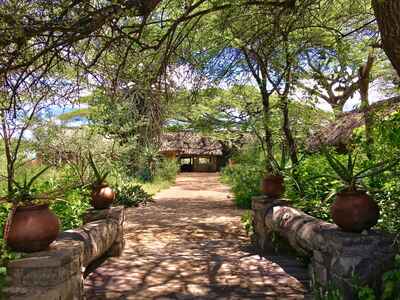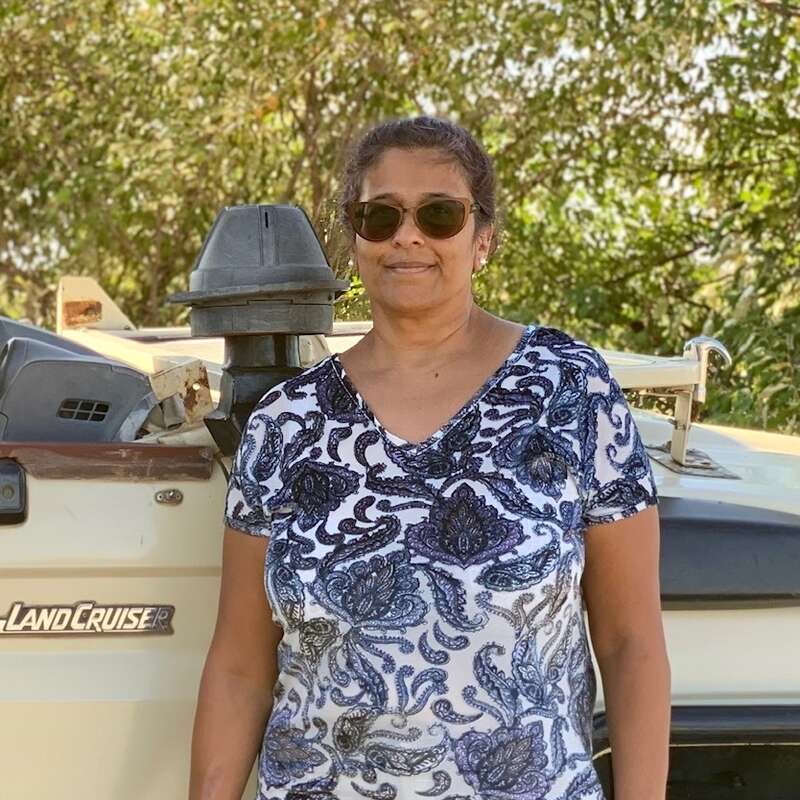About Ndutu Safari Lodge
Ndutu Safari Lodge, is in the heart of the Ngorongoro Conservation Area, right on the edge of the Southern ...
... Serengeti plains. The lodge is well established with an authentic atmosphere, warm hospitality and exceptional game-viewing access, especially during the Great Migration season and the wildebeest calving season, between December and March.
Ndutu Safari Lodge offers an inexpensive and central base from which to explore the short-grass plains of the southern Serengeti and the northern section of the Ngorongoro Conservation Area. However, because it is very good value and in a great location, it gets very booked up during the wildebeest migration. You may need to book a year or more in advance to be sure of finding space here.
Our view
Ndutu Safari Lodge offers an inexpensive and central base from which to explore the short-grass plains of the southern Serengeti and the northern section of the Ngorongoro Conservation Area. However, because it is very good value and in a great location, it gets very booked up during the wildebeest migration. You may need to book a year or more in advance to be sure of finding space here.
Accommodation
34 rooms
Children
Best for aged 8+
Open
All year
Activities

4WD Safari

Birdwatching

Hot air ballooning

Private activities
Traveller reviews of Ndutu Safari Lodge
16 real, un-edited reviews from Expert Africa's travellers.
Arrived 4 Mar 2025, 3 nights
"Ndutu Safari Lodge review"
Overall rating: Excellent
Arrived 13 Jun 2023, 2 nights
"Ndutu Safari Lodge review"
Overall rating: Excellent
Arrived 11 May 2023, 3 nights
"Ndutu Safari Lodge review"
Overall rating: Good
Arrived 22 Feb 2023, 3 nights
"Ndutu Safari Lodge review"
Overall rating: Good
Arrived 1 Oct 2022, 1 nights
"Ndutu Safari Lodge review"
Overall rating: Good
Arrived 21 Feb 2017, 2 nights
"Ndutu Safari Lodge comments"
Overall rating: Good
Arrived 26 Dec 2016, 2 nights
"Real safari ambience"
Overall rating: Excellent
Arrived 12 Feb 2016, 4 nights
"Ndutu Safari Lodge review"
Overall rating: Excellent
Arrived 29 Dec 2013, 2 nights
"Ndutu Safari Lodge review"
Overall rating: Excellent
Arrived 27 Nov 2013, 3 nights
"Great for safaris even before migration"
Overall rating: Excellent
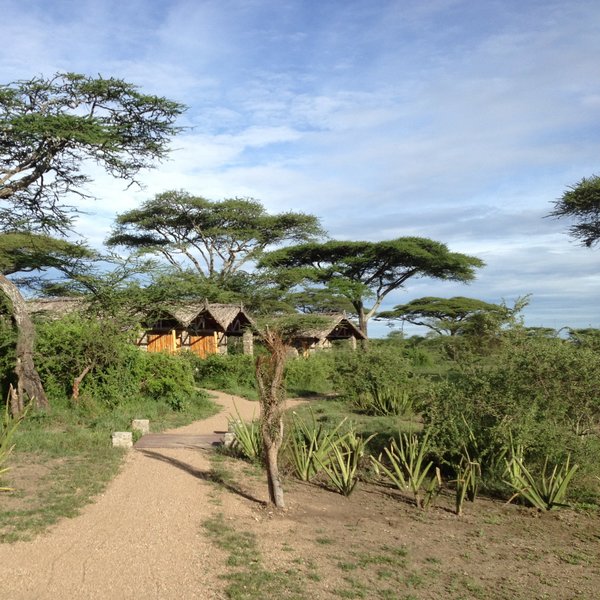
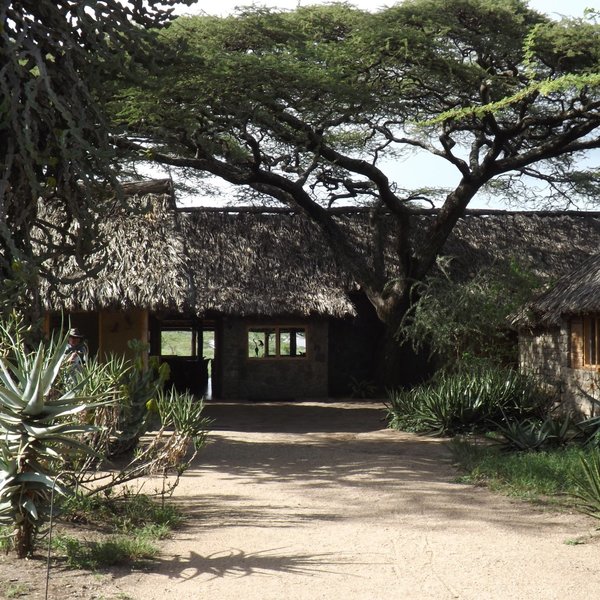
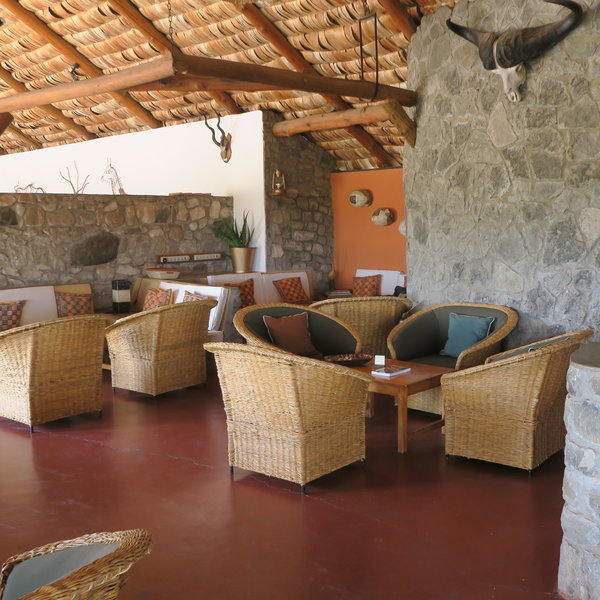
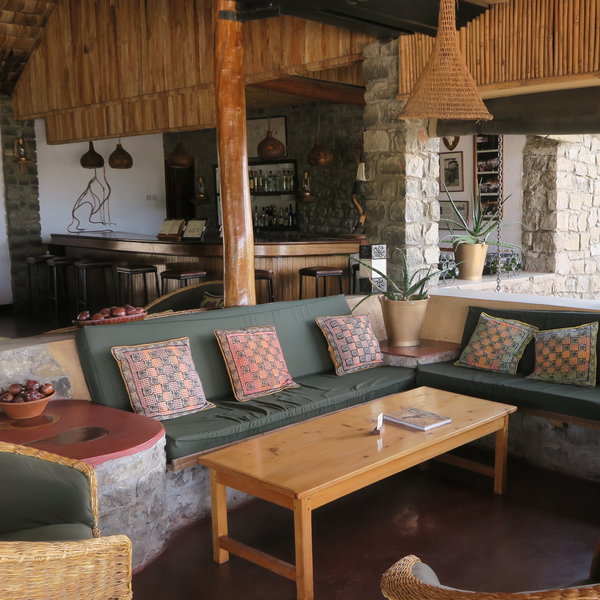
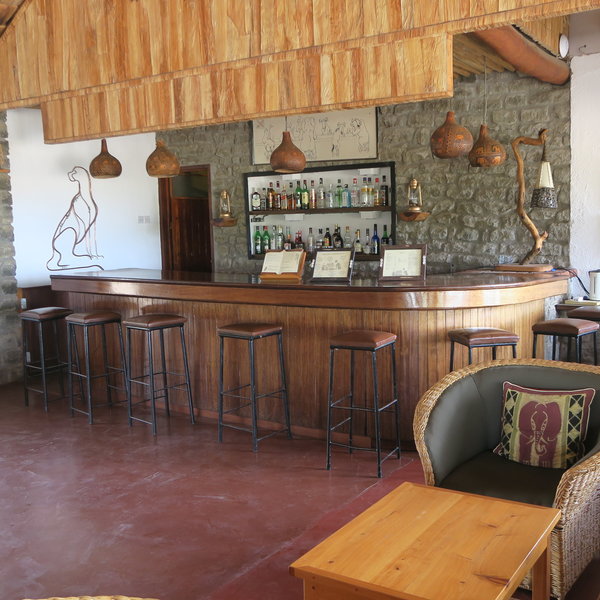
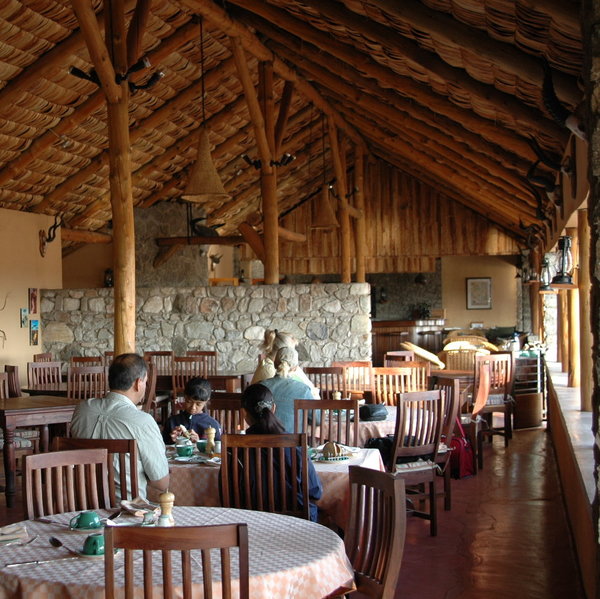
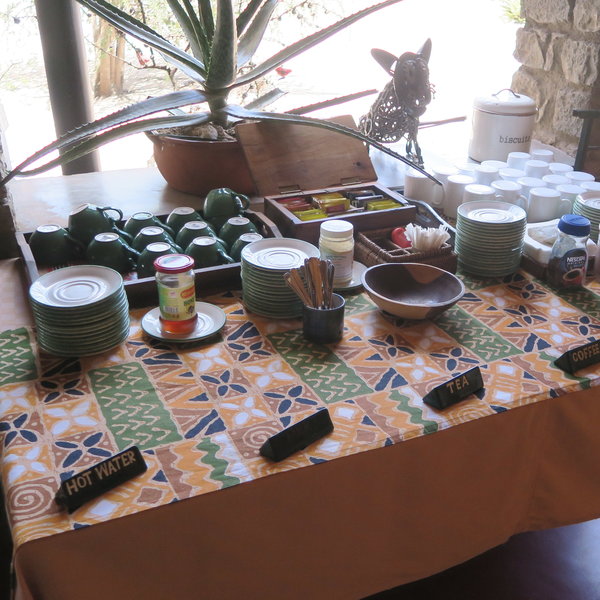
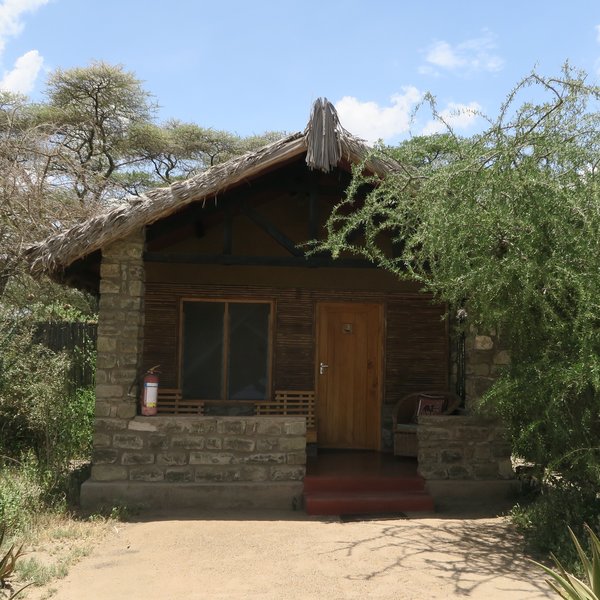
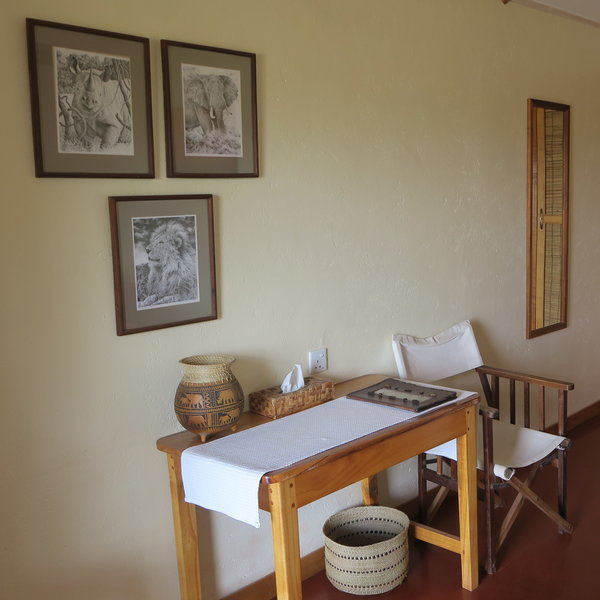
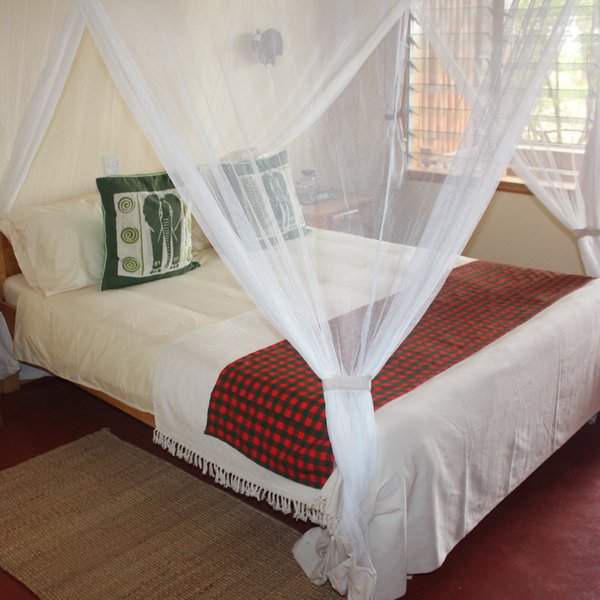
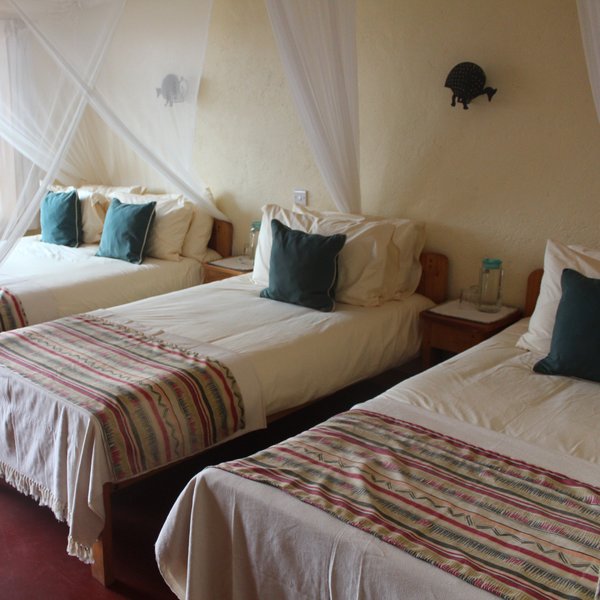
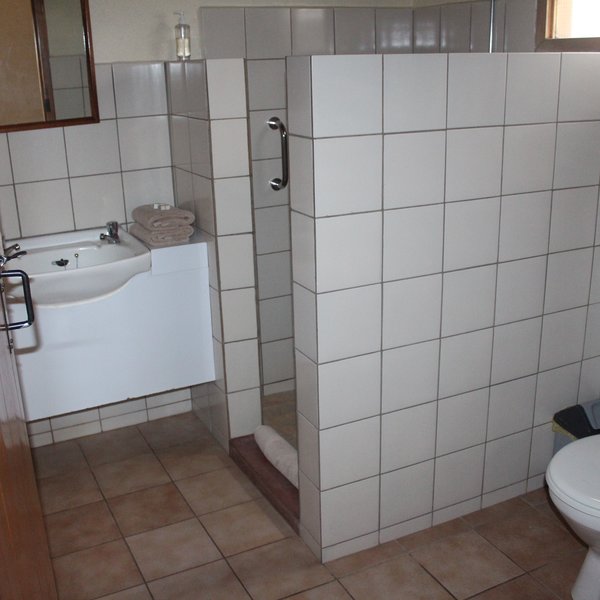
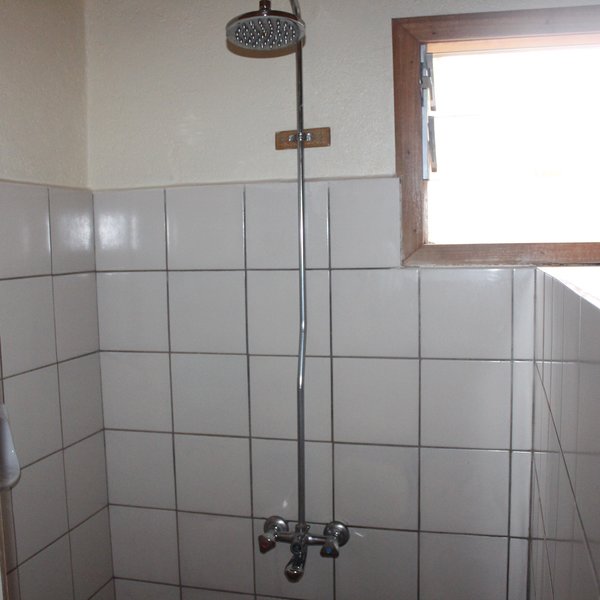
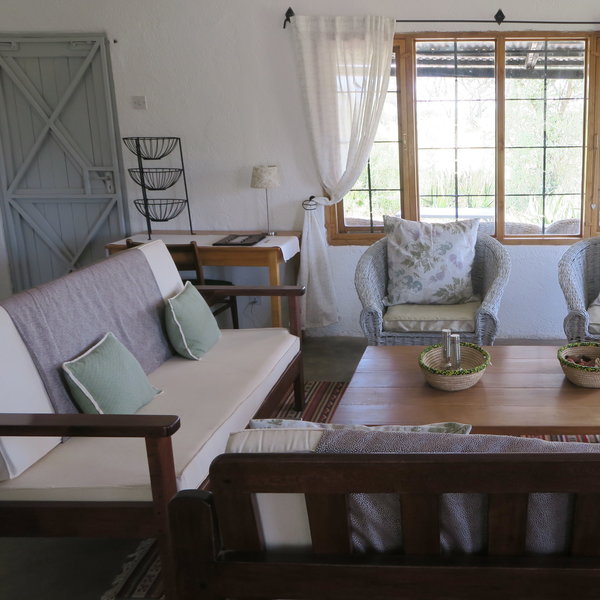
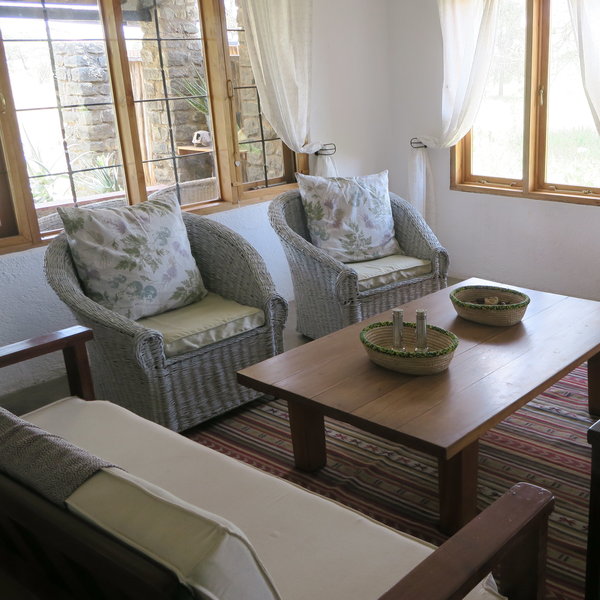
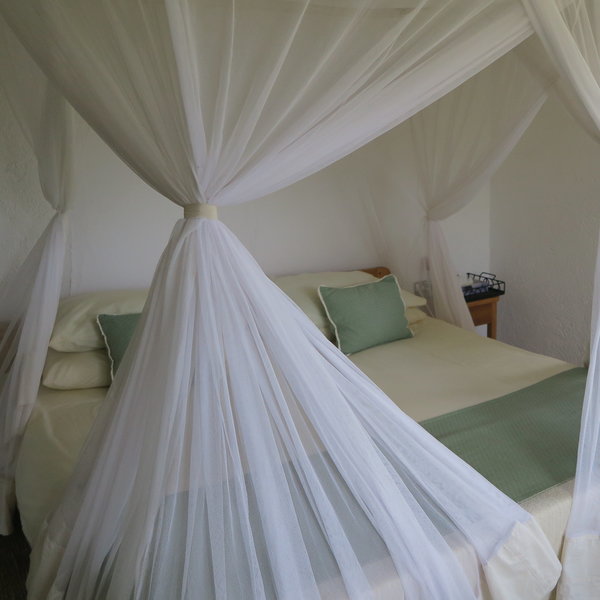
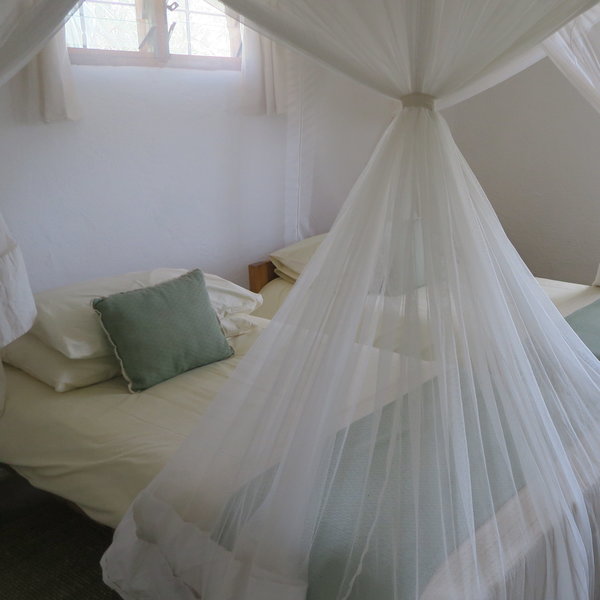
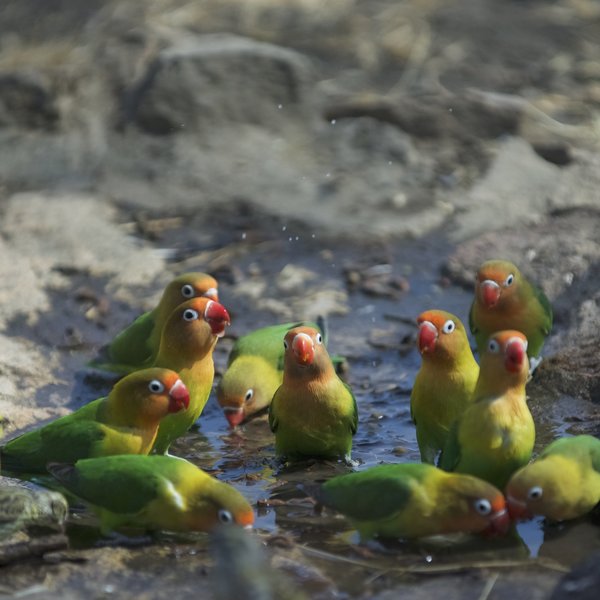
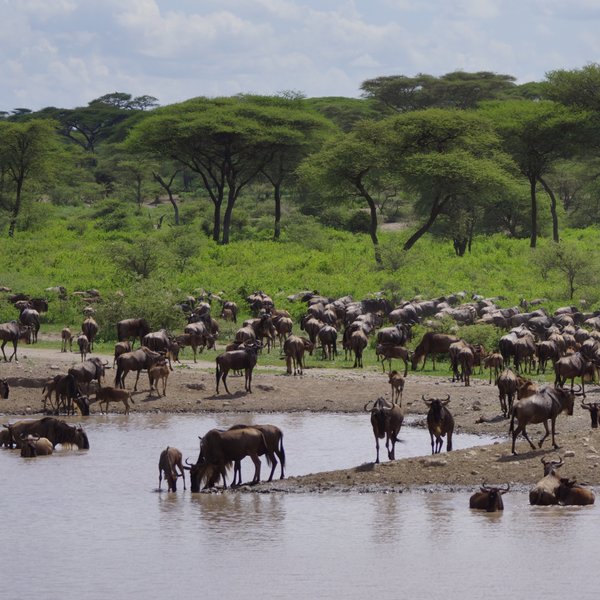
Expert Africa's gallery
When we travel we take lots of photos ourselves to give you a real and un-edited view of the safaris. See our 19 pictures and 1 videos of Ndutu Safari Lodge to get the candid view.
View galleryNdutu Safari Lodge: Our full report
Ndutu Safari Lodge, is in the heart of the Ngorongoro Conservation Area, right on the edge of the Southern ...
... Serengeti plains. The lodge is well established with an authentic atmosphere, warm hospitality and exceptional game-viewing access, especially during the Great Migration season and the wildebeest calving season, between December and March.
Ndutu Safari Lodge is a classic safari lodge with a rich history in one of the finest locations., overlooking Ndutu Lake.
The main area features a cosy bar and dining area. Guests gather here in the evenings to share stories by the fire. The atmosphere is very friendly and relaxed with warm hospitality.
Outside, a ground-level birdbath just 20m in front of the restaurant attracts a stream of small birds, particularly flocks of Fischer's lovebirds, adding colour and noise to the scene. There is a small shop sells a range of curios, many of which are made by local women and people with disabilities as a source of income.
There are 34 stone-and-thatch cottages at Ndutu Safari Lodge. All are fairly close together in a long line that extends either side of the bar and restaurant area. All the cottages have a view of Lake Ndutu and each has its own small veranda, where you can sit and watch the wildlife.
Of the 34 cottages, 26 have twin or double beds, and five are triples and one family cottage accommodates two adults and two children, so would be suitable for a family. There are also two 'honeymoon cottages' (numbers 12 and 34), which are both fairly distant from the centre. These are slightly more spacious than the twin-bedded cottages, and are dominated by beautiful, king-size beds made from the wood of a Zanzibari dhow.
The cottages are very cool inside, thanks to their stone construction and polished concrete floors, with no need for fans or air conditioning. Clean white walls are offset by the odd photo of African wildlife. Furnishings are simple, yet comfortable: cream director's chairs, sturdy wooden tables, fun wrought-iron wall lights, shaped like guinea fowl, and cream bedspreads. Batik African cushions and Maasai throws add a touch of colour. Mosquito nets hang from hooks over the beds, and there are extra blankets for cool nights, while an umbrella is provided in case of rain.
Each cottage has a small en-suite bathroom, with a white-tiled shower, flushing toilet and single basin. Although fairly Spartan, these are perfectly adequate; just don't expect the toiletries to extend beyond small bars of soap. Filtered water for brushing teeth and drinking is provided.
For guests looking to stay active or unwind between game drive activities, Ndutu Safari Lodge offers a small but well-equipped gym, for yoga enthusiasts mats are provided. There is a spa providing a selection of treatments.
Ndutu tries quite hard to maintain an eco-friendly stance. Leaflets in each room detail the ways the lodge saves water and encourage guests to help. The lodge has a generator but power consumption is kept to a minimum. Solar heaters provide hot water for the showers. The meat comes from Arusha, while half of the fresh vegetables come from an organic farm near Kilimanjaro and the other half from the nearby town of Karatu, thereby supporting the local community.
As the lodge is unfenced and wildlife in the district has become habituated to visitors over many decades, encounters with large mammals in the lodge grounds are not unheard of. During the hours of darkness and early in the morning, you must never walk unaccompanied by an askari (escort) when walking between your room and the central areas.
Activities at Ndutu Safari Lodge focus on game drives with your private driver in the vehicle that brought you here. Ndutu is a fascinating area to visit at any time of year, particularly for those interested in photography, as you can get very close to the wildlife. The game is at its most prolific during the wildebeest migration, typically between December and March. As the rain moves on, the plains game follows, although lion, leopard and cheetah remain, as do giraffe, buffalo, elephant and many of the antelope. Having said this the resident game between June and October is still very good and you will be sharing it with far fewer vehicles. The local landscape features marshlands, two lakes (Lake Ndutu and Lake Masek) and expanses of woodlands, all surrounded by the Serengeti's grassy plains.
For trips further afield, the Oldupai (aka Olduvai) Gorge museum is an hour's drive from the lodge, and the Ngorongoro Crater rim is about two-and-a-half hours' drive away.
Activities
4WD Safari
Birdwatching
Hot air ballooning
Private activities
Families & children
- Attitude towards children
- Children of all ages are welcome.
- Property’s age restrictions
- There are no age restrictions at Ndutu Safari Lodge.
- Special activities & services
- Earlier children's meals can be arranged.
- Equipment
- Cots are available for babies. During meal times, extra cushions can be placed on chairs.
- Generally recommended for children
- Ndutu Safari Lodge is very substantial, open and spacious, so is one of the better accommodation options in the area for children. Birds and animals are seen from the lodge, and there is a small box with a few games at the bar for guests’ use. Due to the close proximity of dangerous game, we don't recommend Ndutu for very small children. Older children who can amuse themselves without excessive noise would be fine here.
- Notes
- Older children need to be closely supervised by their parents, as lions and other animals occasionally wander through camp.
Food & drink
- Usual board basis
- Full Board
- Food quality
- Meals at Ndutu Safari Lodge tend to be hearty and guests regularly rate the food as excellent.
Breakfast, from 7.00am to 9.00am, consists of a self-service buffet of fresh fruit, cereals and juices. A cooked breakfast and hot drinks can also be ordered. For guests leaving earlier or later, Ndutu will arrange a packed breakfast or, for a small extra charge, a slightly more extensive 'breakfast basket'.
Lunch is usually from 12.30pm to 2.00pm, and this is a three course set menu. For lunch we had sweetcorn chowder soup. Main was a choice of either ham quiche or butternut quiche with salad. For dessert we had a brownie with chocolate ice cream.
Like lunch Dinner is a three course set menu and starts from 7:30 pm onwards. We had a green banana soup with garlic bread, followed by stuffed peppers and steamed mixed vegetables (meat choice was beef steak with pepper sauce). Dessert was a decadent sticky toffee pudding.
There is a self-service station where guests can help themselves to tea, coffee or hot chocolate throughout the day. - Dining style
- Individual Tables
- Dining locations
- Indoor Dining
- Further dining info, including room service
- Room service is very limited. Guests can request early morning drinks to be delivered to their cottage before heading out on an early-morning game drive.
- Drinks included
- No drinks are included; these are bought separately from the bar and can go on a tab that is paid on departure. A beer or glass of wine costs around US$6, and a soft drink US$3.
Our travellers’ wildlife sightings from Ndutu Safari Lodge
Since mid-2018, many of our travellers who stayed at Ndutu Safari Lodge have kindly recorded their wildlife sightings and shared them with us. The results are below. Click an animal to see more, and here to see more on our methodology.

100% success

100% success

100% success

100% success

75% success

75% success

75% success

75% success

67% success

50% success

50% success

50% success

25% success

25% success

0% success

0% success

0% success

0% success
Getting there
- Location
- Serengeti Migration Area, Tanzania
- Ideal length of stay
- During the dry season, two or three nights is typical, although when the wildebeest migration is passing through, from about December to March, some guests stay here for up to a week.
- Directions
- Most visitors to Ndutu Safari Lodge drive here with their own safari guide and 4WD, although it's possible to fly to Ndutu airstrip, about 1km away. Ndutu Safari Lodge is around a two-hour drive from the Ngorongoro Crater.
- Accessible by
- Fly-and-Transfer
Special interests
- Walking safaris
- Ndutu Safari Lodge is just inside the Ngorongoro Conservation Area, where walking safaris in Tanzania are allowed when accompanied by a park ranger. Walks last around two hours and concentrate on the woodlands near Lake Ndutu. Must be pre-arranged.
- See ideas for Walking safaris in Tanzania
- Wildlife safaris
- Ndutu Safari Lodge is a great base for wildlife safaris in Tanzania. It is ideally located for the short-grass plains of the southern Serengeti, especially during the wildebeest migration and the northern side of the Ngorongoro Crater Conservation Area.
- See ideas for Wildlife safaris in Tanzania
Communications
- Communications
- There is limited cellphone reception at Ndutu. WiFi is only available in the main area.
- TV & radio
- There is no TV for guests at Ndutu.
- Water supply
- Other
- Water supply notes
- Bathrooms and laundry are supplied by slightly saline 'soda water' from the lake. Rainwater is collected and filtered for the kitchen and dining room, and is provided in the cottages.
Health & safety
- Malarial protection recommended
- Yes
- Medical care
- Ndutu has a first-aid room, and several staff are trained in basic first aid. The lodge has links with a flying doctor service in Arusha and there is a doctor in Karatu. For guests bringing breathing apparatus, there is normally a US$50 per night charge to keep the generator on. Alternatively, bring your own battery pack.
- Dangerous animals
- High Risk
- Fire safety
- There is a firebreak around Ndutu. All the cottages have fire extinguishers and some staff have been trained to use them.
Useful info
- Disabled access
- On Request
- Laundry facilities
- A laundry service is available at an extra charge of US$1–2 per item. All laundry is hand-washed and sun-dried. Weather permitting, items sent to the laundry in the morning are usually returned later that day.
- Money
- Ndutu is happy to exchange small amounts of currency for guests in US dollars, euros and GB pounds.
- Accepted payment on location
- Ndutu accepts most major currencies, as well as Visa and Mastercard credit cards with a slight surcharge.
Plan and book your trip with Expert Africa
All of our trips are tailor-made, so we'll always adapt them to suit you. Talk to an Expert and let us plan and arrange your perfect trip.

Talk to an Expert
Call or email us now! We’ll match you with the Specialist in our team who is best suited to help you. Then together we can start planning your trip.

Set up your itinerary
Based on our experience and your ideas, your specialist will create a detailed, costed itinerary. We’ll refine it together, until we have a trip that you’re perfectly happy with.

Prepare for your trip
The same Specialist will make the seamless arrangements for your trip, send you detailed travel documents, and be available to answer any questions before you depart.

Travel with peace of mind
After you set off, you’ll be cared for by our partners in Africa, most of whom have worked with Expert Africa for decades. And if you ever need us urgently, we’re available 24/7.

When you return
We love to learn about your trip, and so will always be grateful if you’ve the time to give feedback to your Specialist when you return.
Ndutu Safari Lodge's location
Look closer at the environment and surroundings of Ndutu Safari Lodge.
Excursions from Ndutu Safari Lodge
Optional extra day-trips and excursions possible whilst you're staying at Ndutu Safari Lodge. Talk to us: these are usually best arranged before you go.
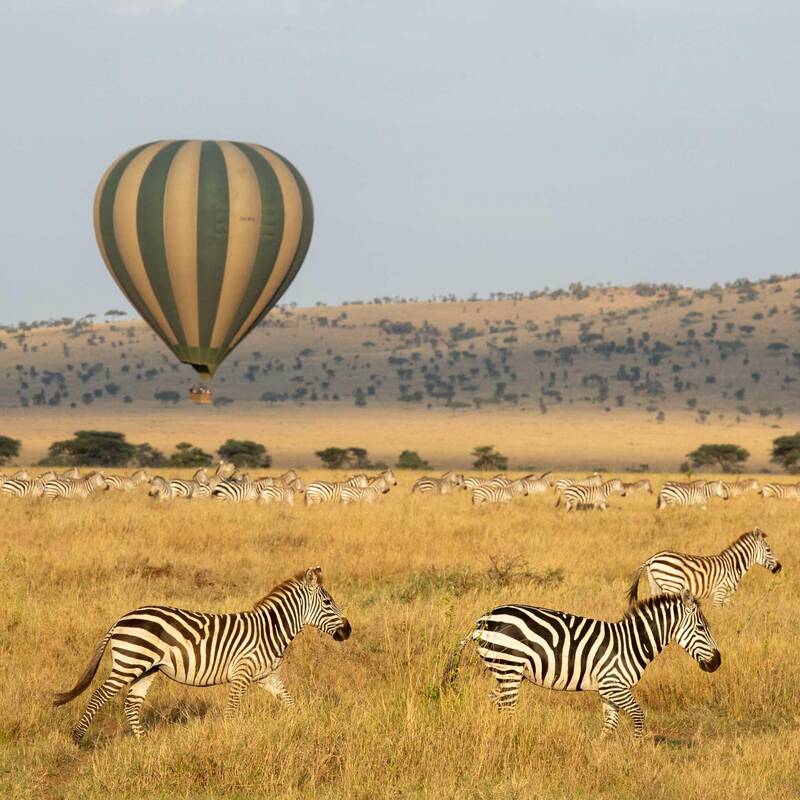
Balloon Safari over the Serengeti
Three hours - approx. one hour flight
As the sun rises over the Serengeti National Park in northern Tanzania, climb aboard for an extraordinary adventure. For an hour you’ll float in a hot air balloon over beautiful savannah and woodland and a diversity of plains wildlife.
More about Balloon SafariOther lodges in Serengeti Migration Area
Alternative places to stay in this same area.
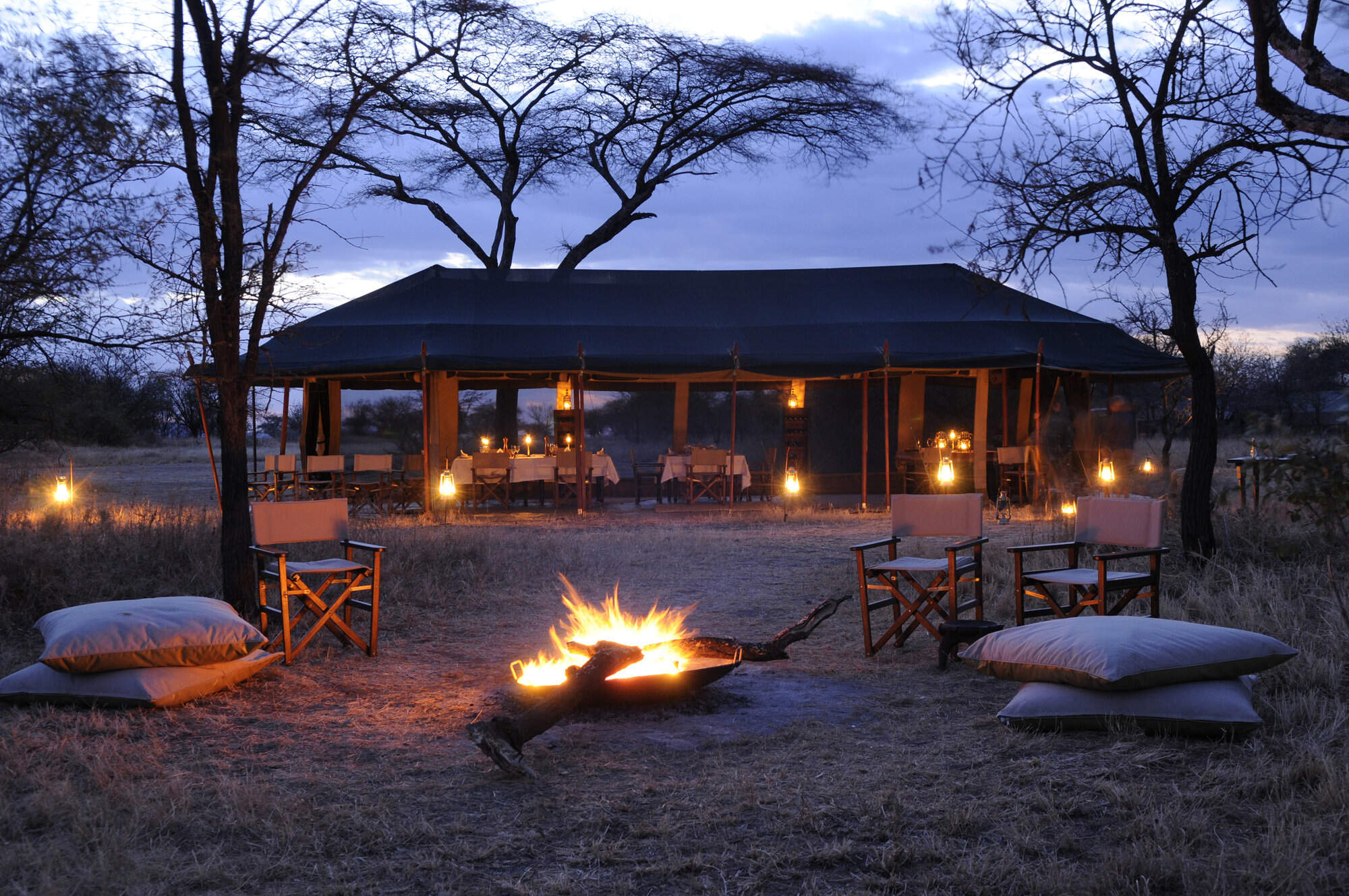
Olakira Camp
Comfortable, friendly and relaxed, Olakira Camp moves between the Mara River and the southern Ndutu area, in line with the wildebeest migration.
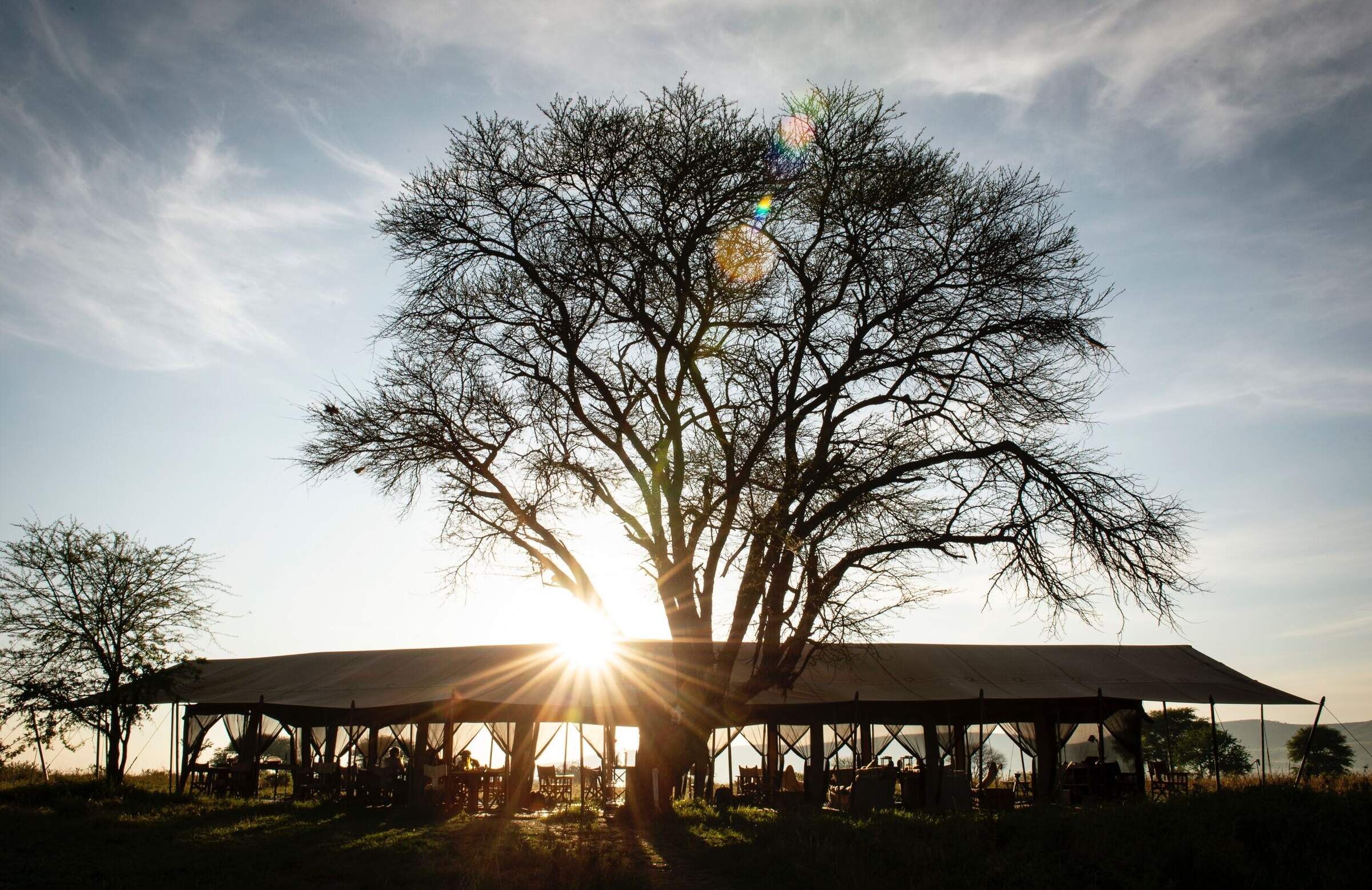
Nomad Serengeti Camp
Serengeti Safari Camp is a well-appointed tented camp that moves several times a year to follow the predicted path of the migration.
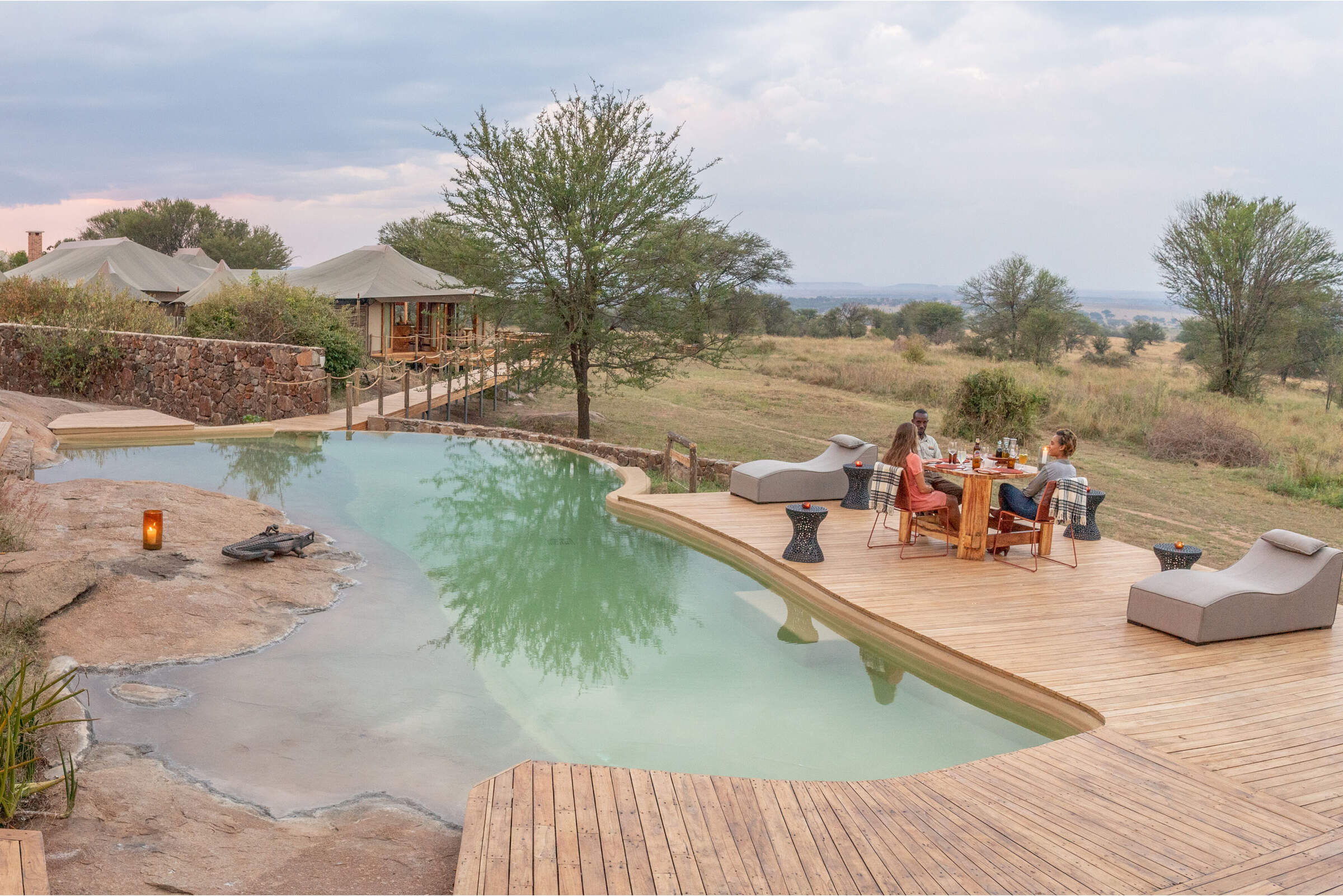
Sayari Camp
In the northern Serengeti, near the Mara River, luxurious Sayari Camp offers excellent wildife all year – boosted further by the wildebeest migration.
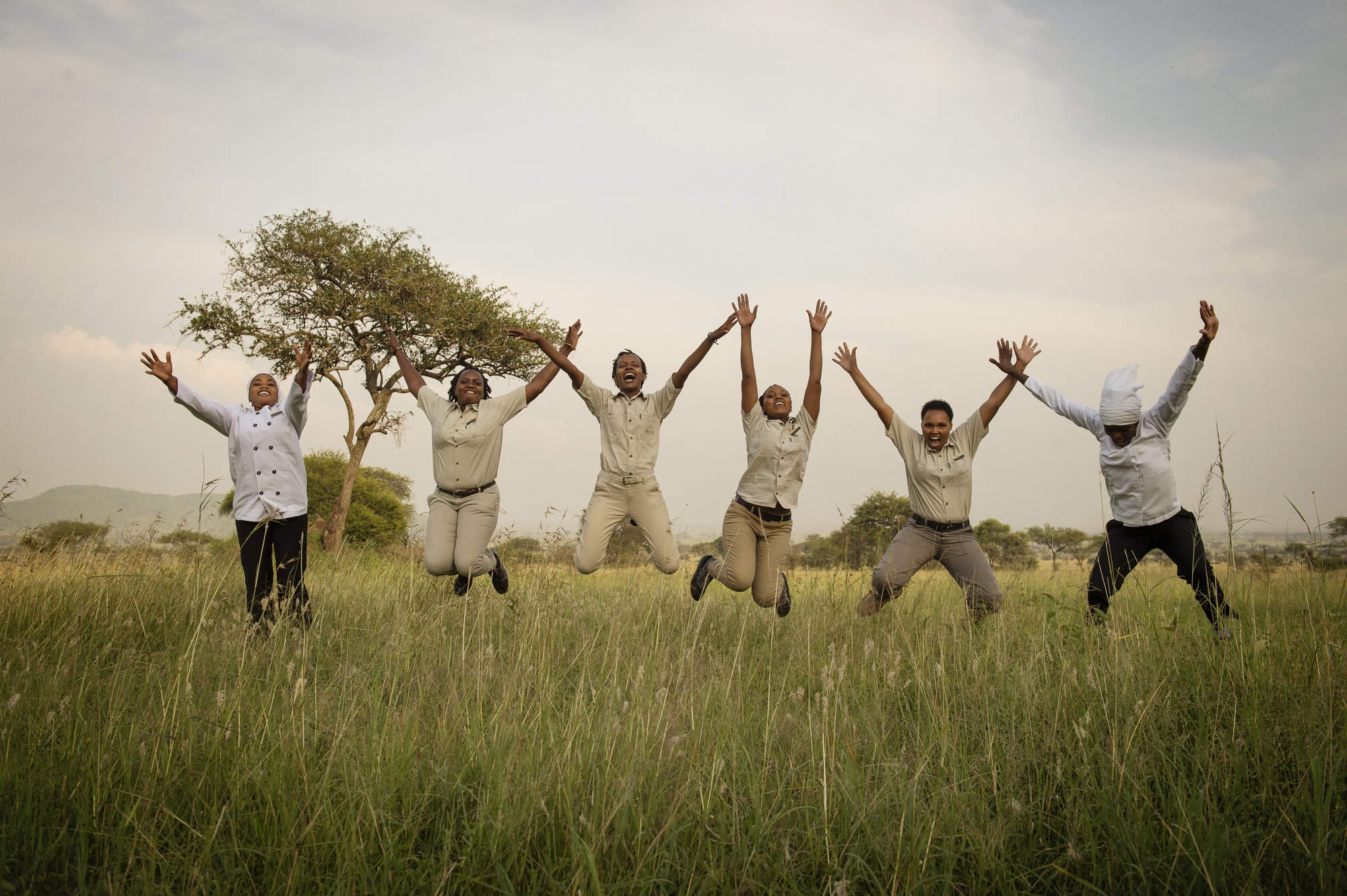
Dunia Camp
Dunia Camp is well located for the migration from December to March, and has excellent game viewing for the rest of the year.
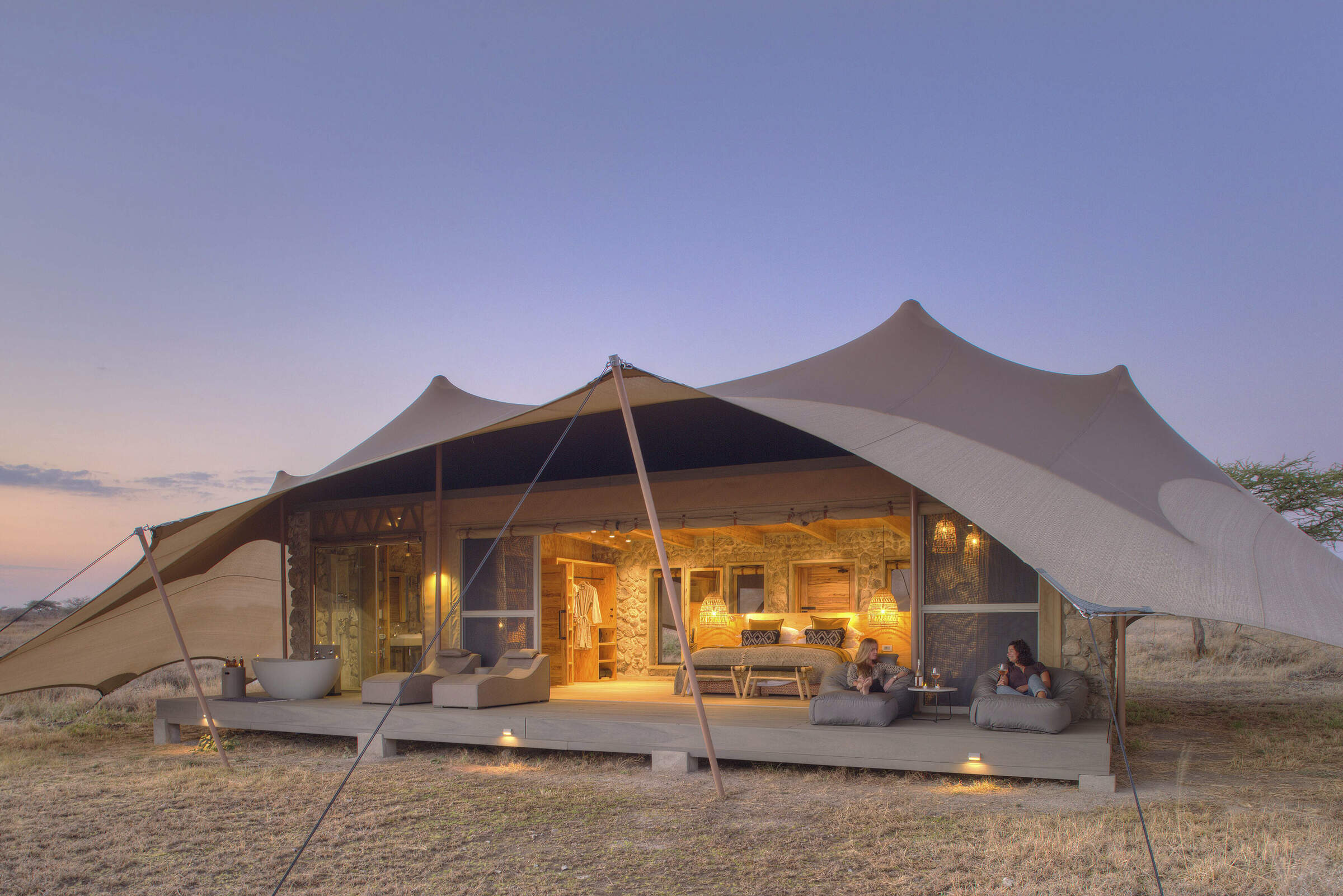
Namiri Plains Camp
Namiri Plains is one of the best camps in the Serengeti and its remoteness ensures a fantastic wildlife experience away from the crowds.
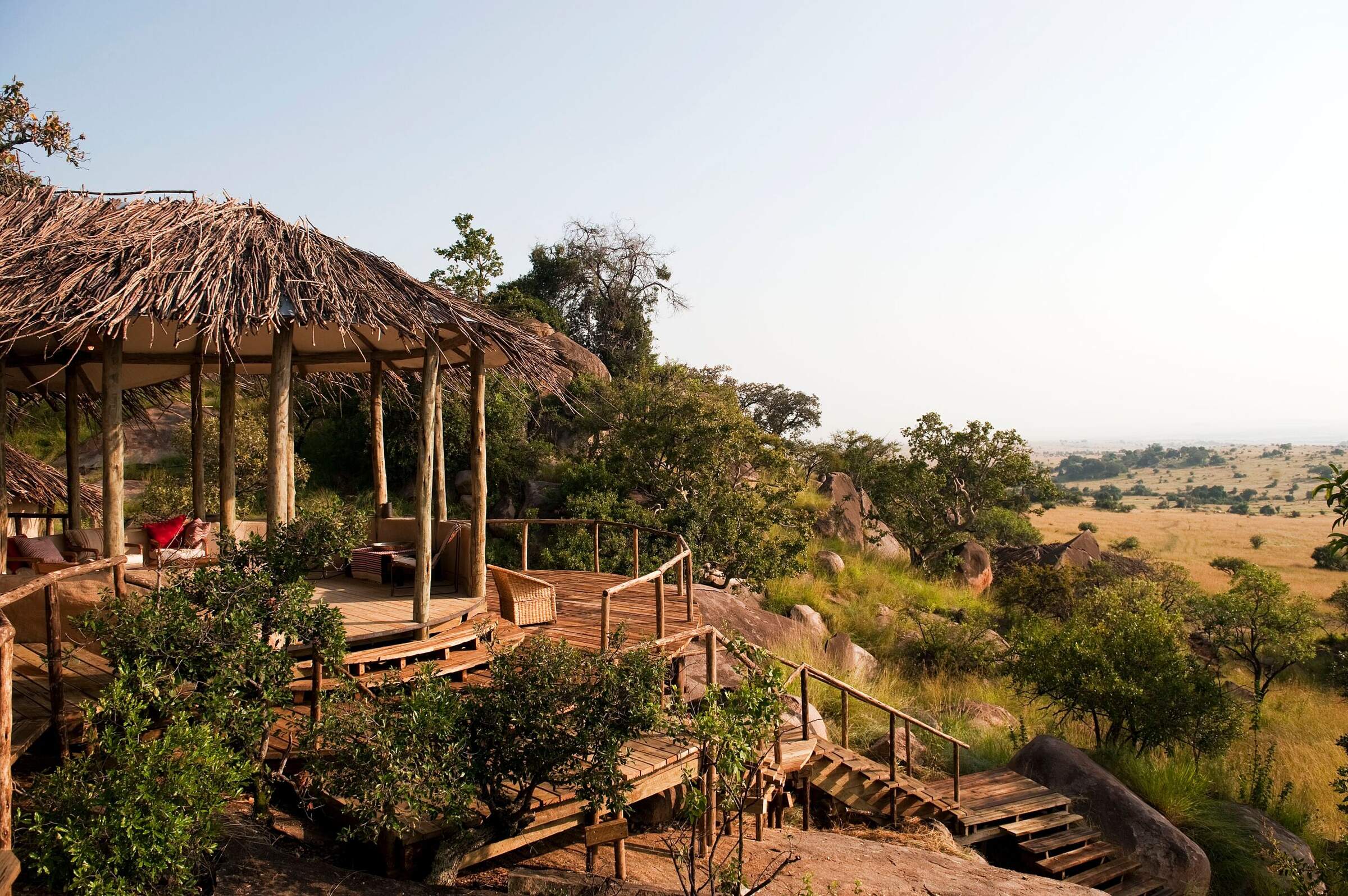
Lamai Serengeti
Set high in the kopjes with fantastic views, Lamai Serengeti offers top service and guiding and good migration sightings from Jul-Oct.
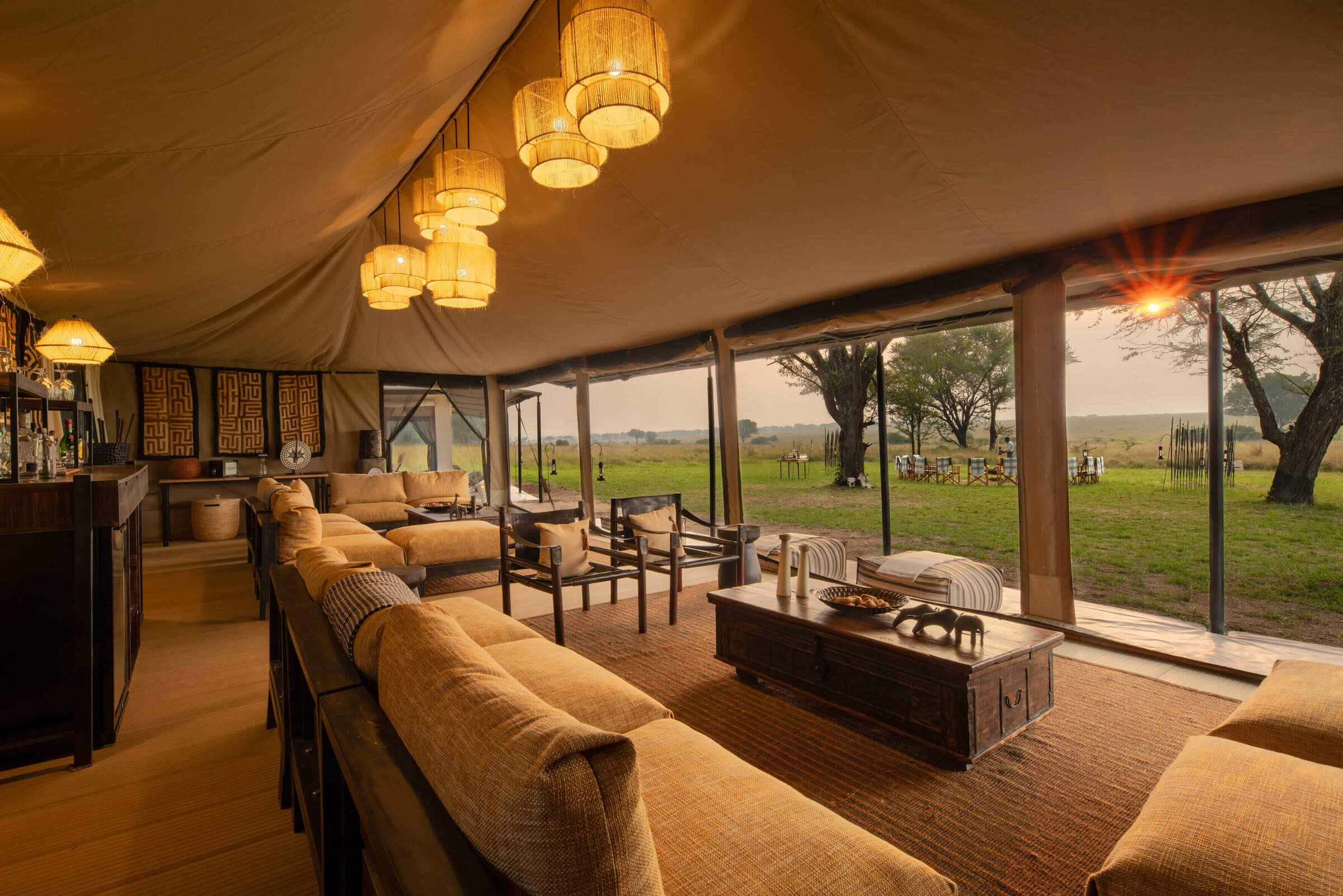
Ubuntu Camp
Ubuntu Camp has several locations in the Serengeti, following the wildebeest migration, so it is often in a great location to see the herds.
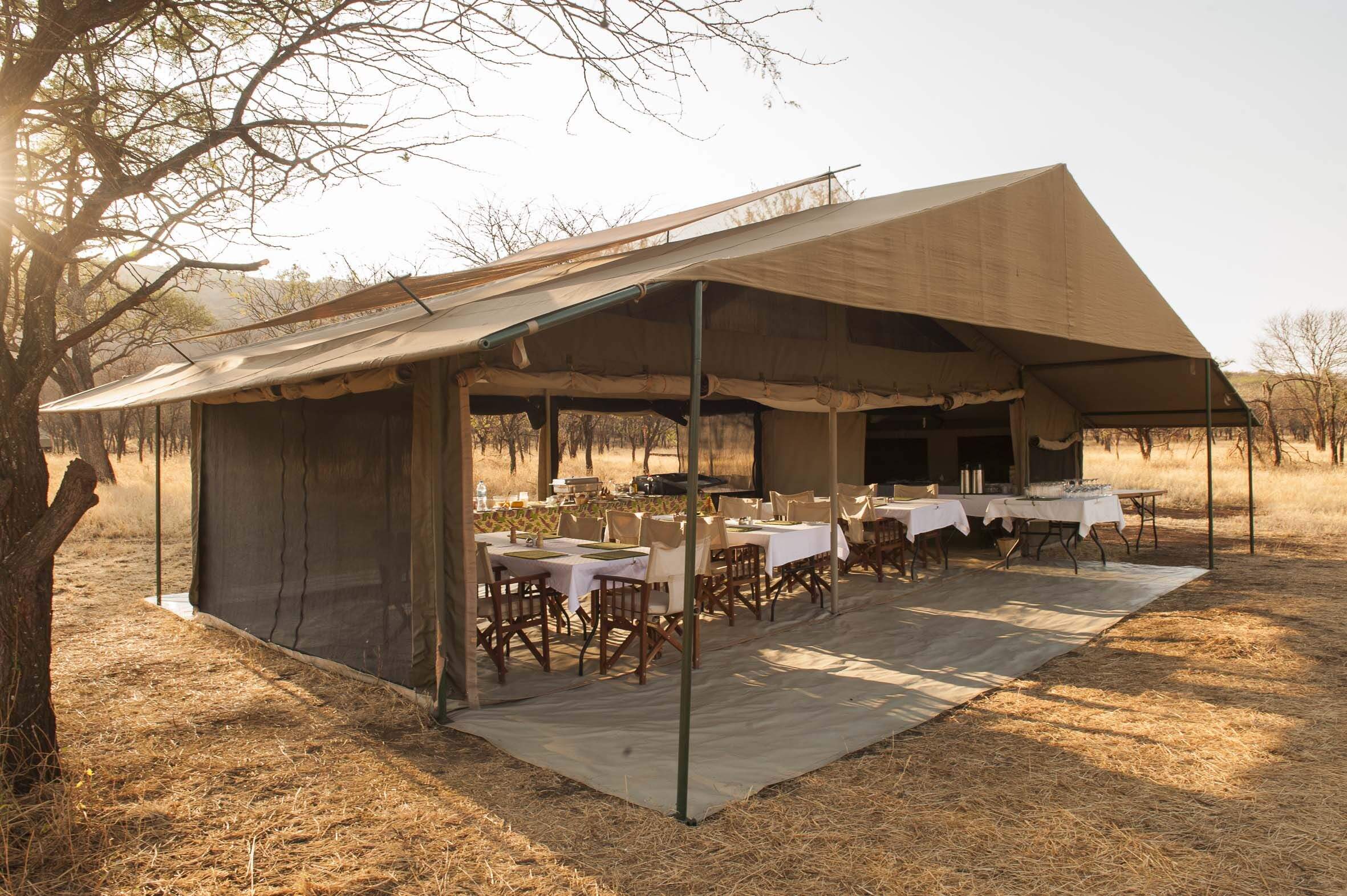
Kati Kati Camp
Kati Kati is a small, very simple bushcamp, which is well-positioned to explore the wildlife-rich Seronera area.
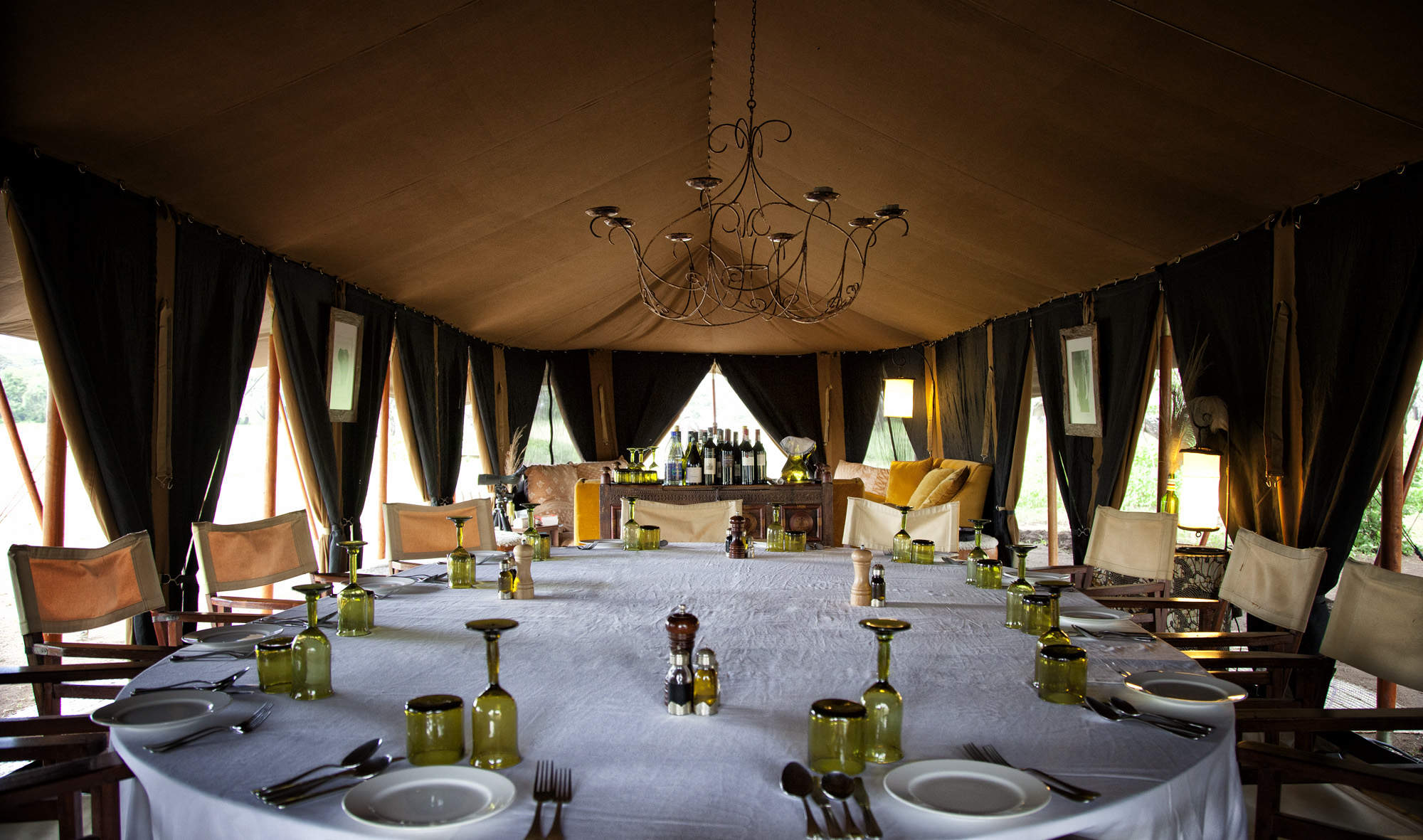
Serian Serengeti
Serian Serengeti is a mobile tented operation run by Alex Walker which moves between two locations following the wildebeest migration.
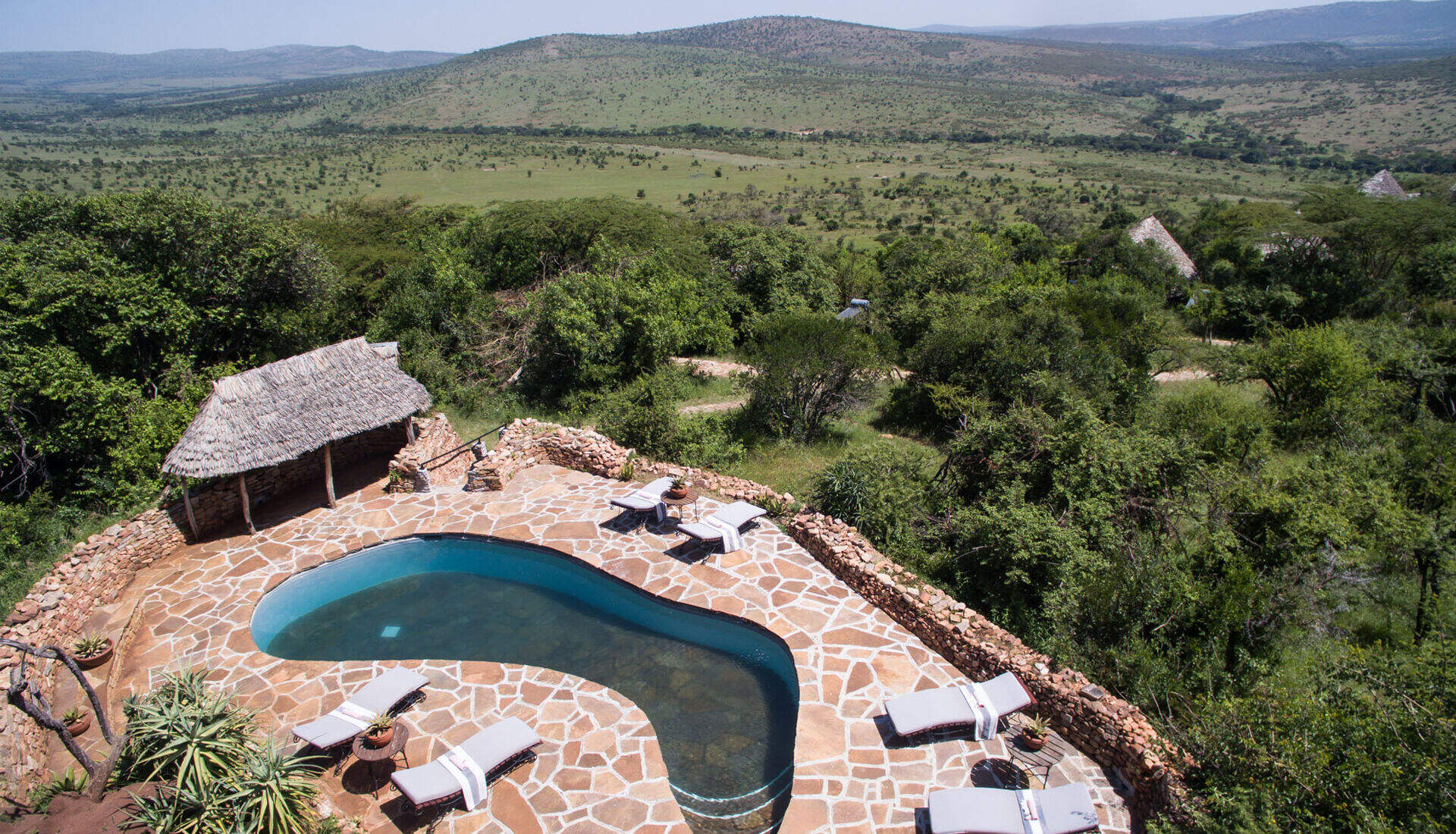
Klein's Camp
Klein's Camp, in a private area of the northern Serengeti, sets high standards. Activities include walks, nights drives and Maasai village visits.
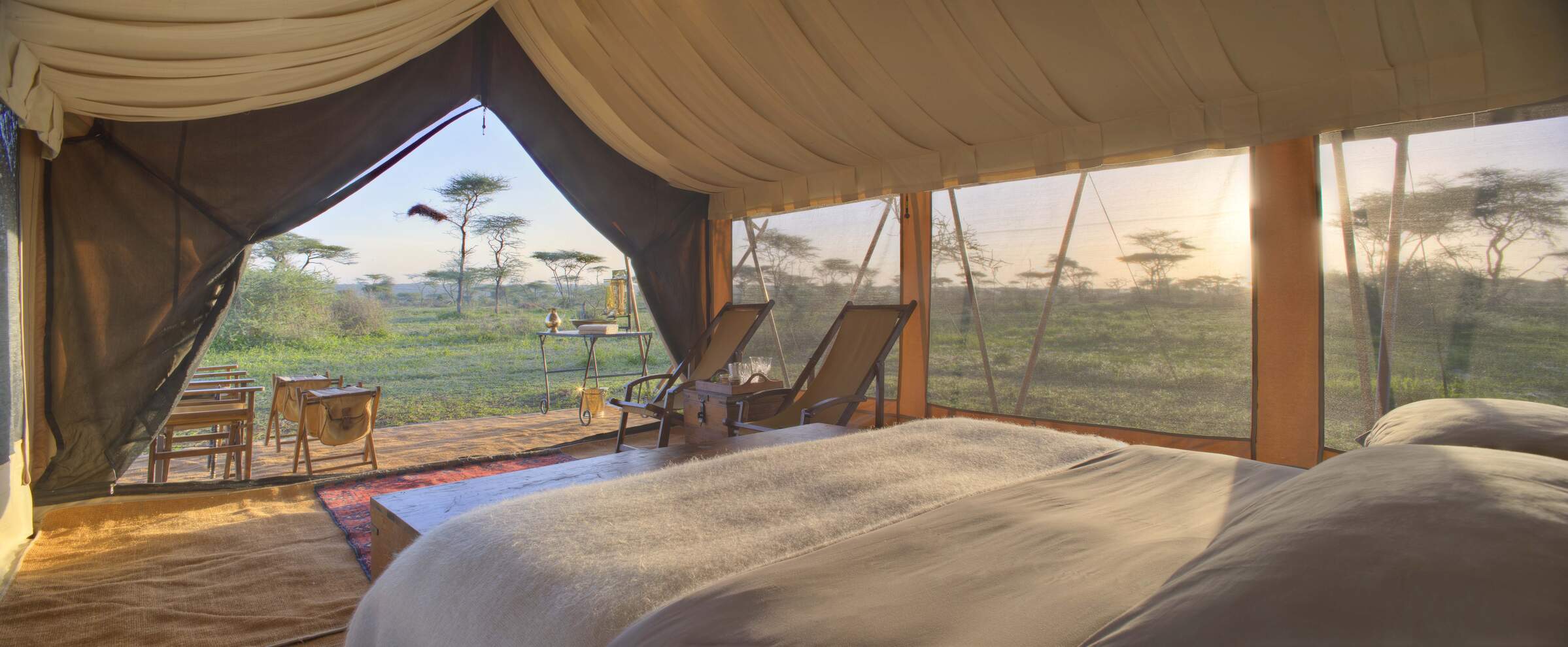
Serengeti under Canvas
Two of the three Serengeti under Canvas camps move through the Serengeti National Park every few months to follow the wildebeest migration.
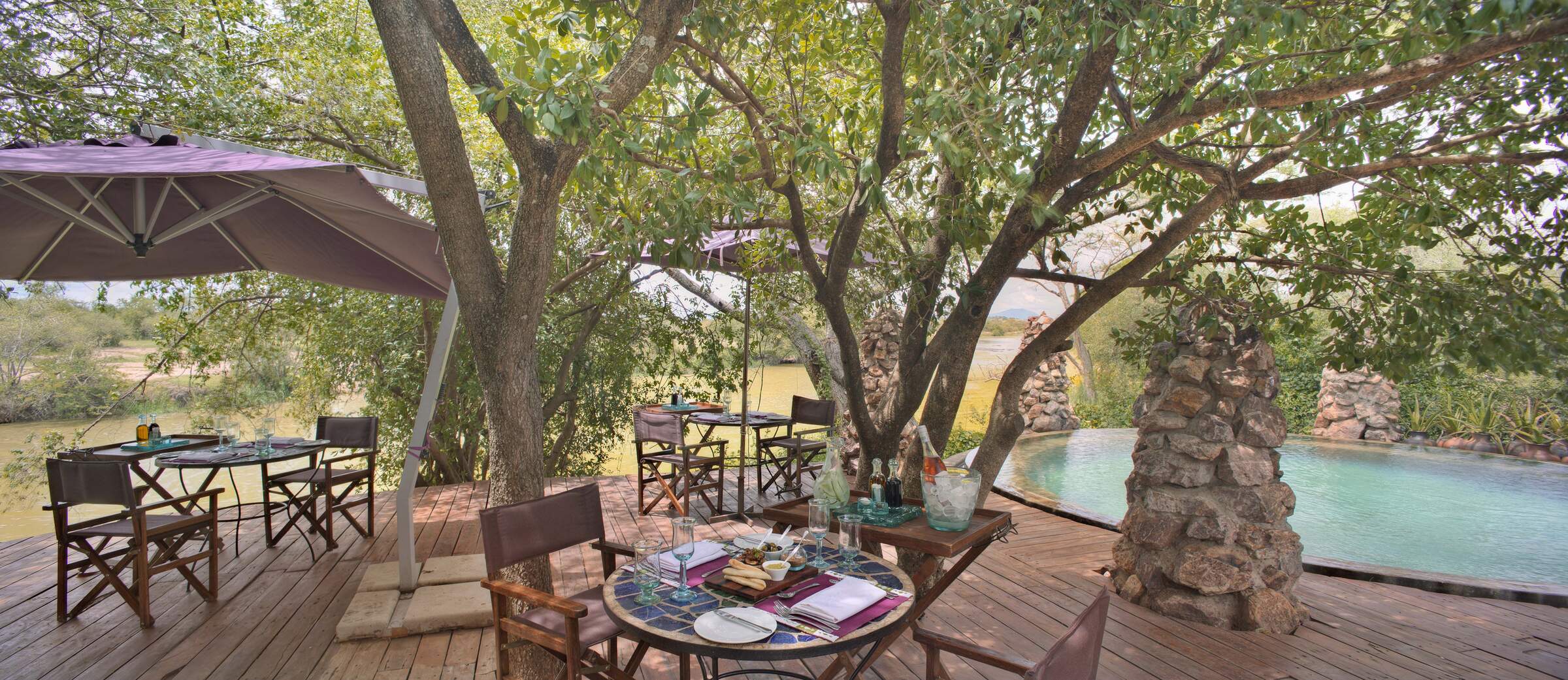
Grumeti River Camp
Grumeti River Camp offers a laid-back atmosphere combined with top service, first-rate food, expert guiding and an excellent location.
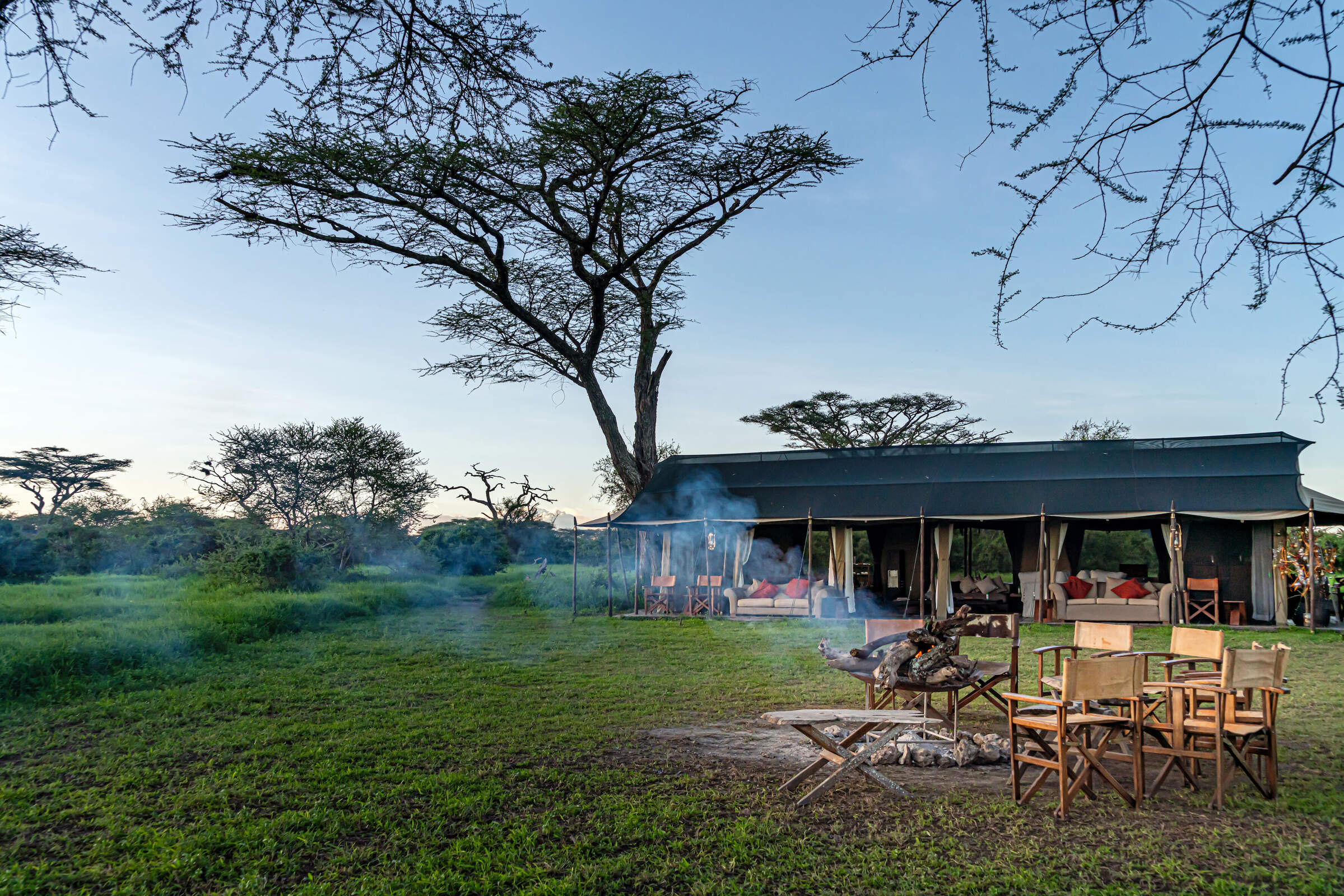
Lemala Mara-Ndutu
Lemala Mara-Ndutu is a semi-permanent camp that moves between the north and south of the Serengeti to witness the wildebeest migration.
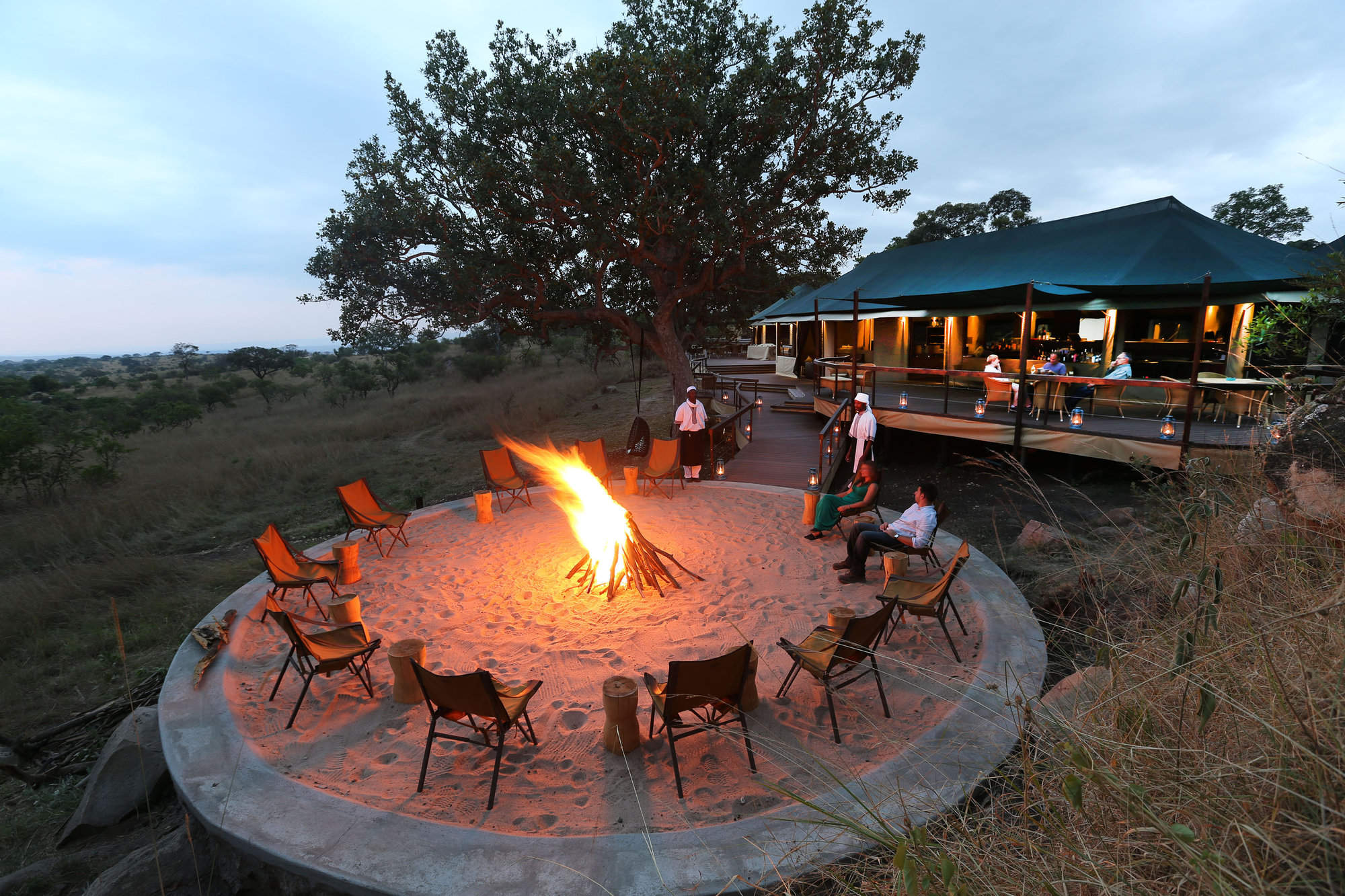
Lemala Kuria Hills
Lemala Kuria Hills is a luxury permanent camp that is ideally located for wildlife all year around, but especially during the wildebeest migration.
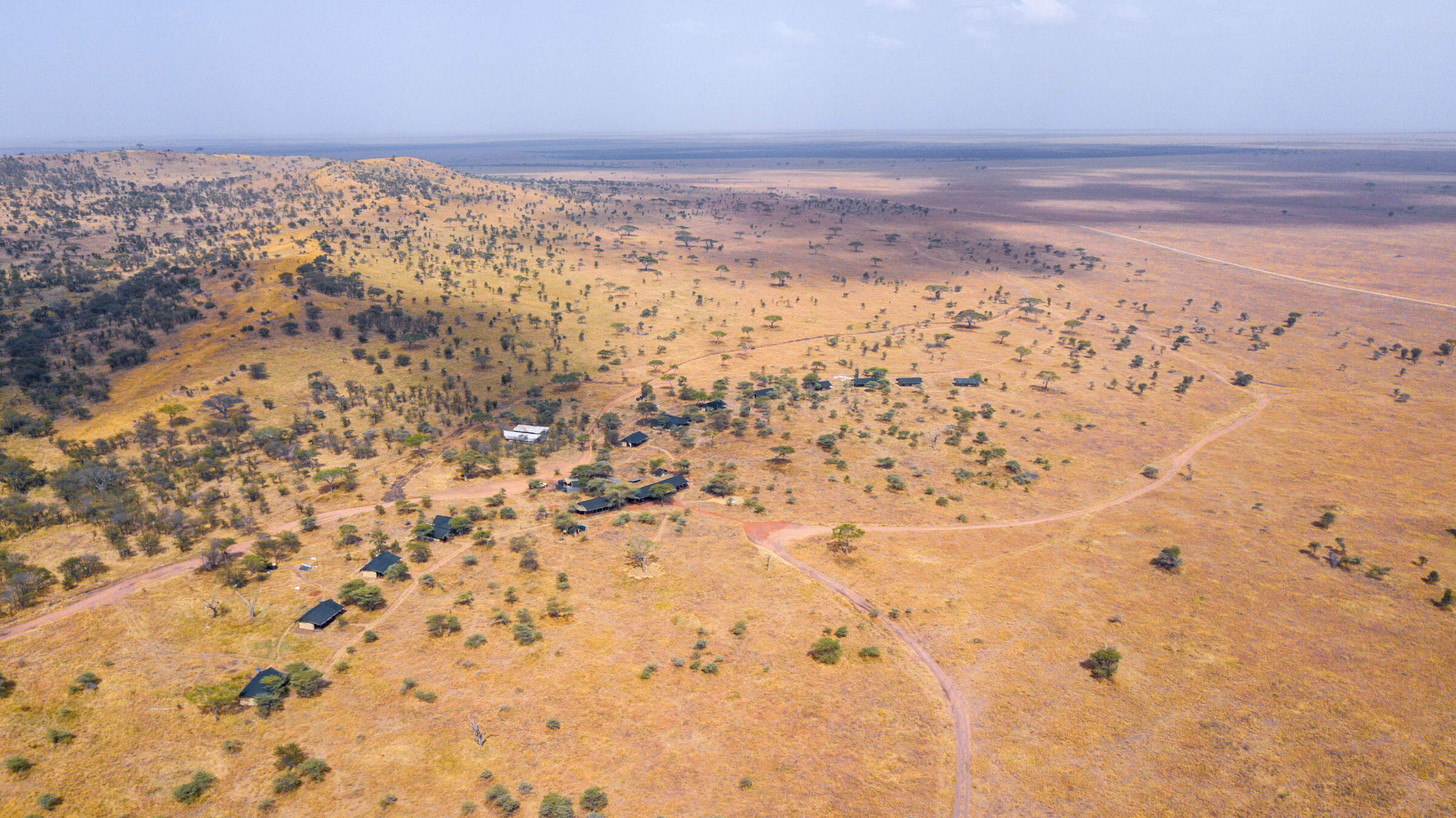
Lemala Ewanjan
Lemala Ewanjan is a comfortable and stylish tented camp in the Seronera area of the central Serengeti National Park.
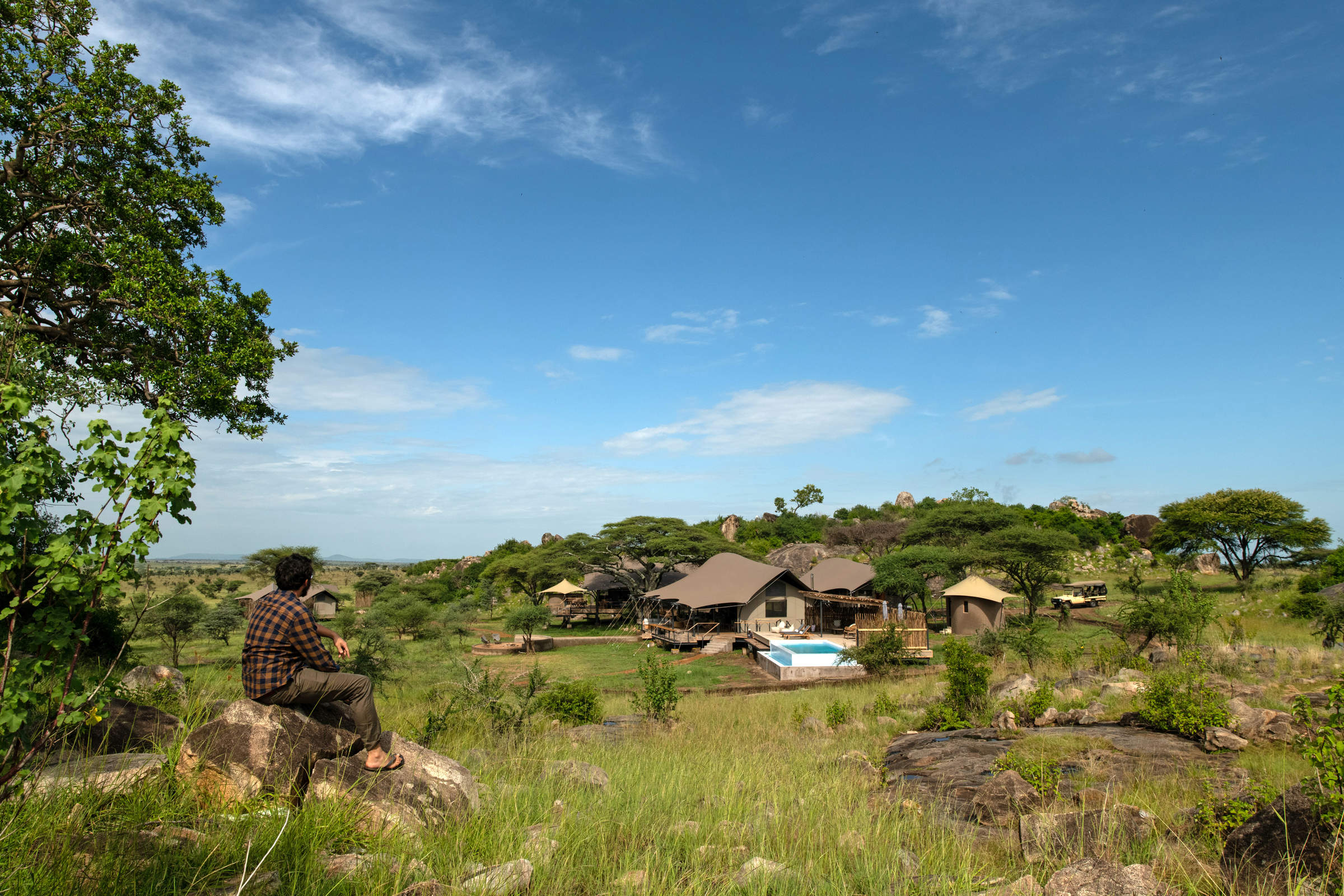
Lemala Nanyukie
Lemala Nanyukie is a stylish camp located in the quieter part of the central Serengeti.
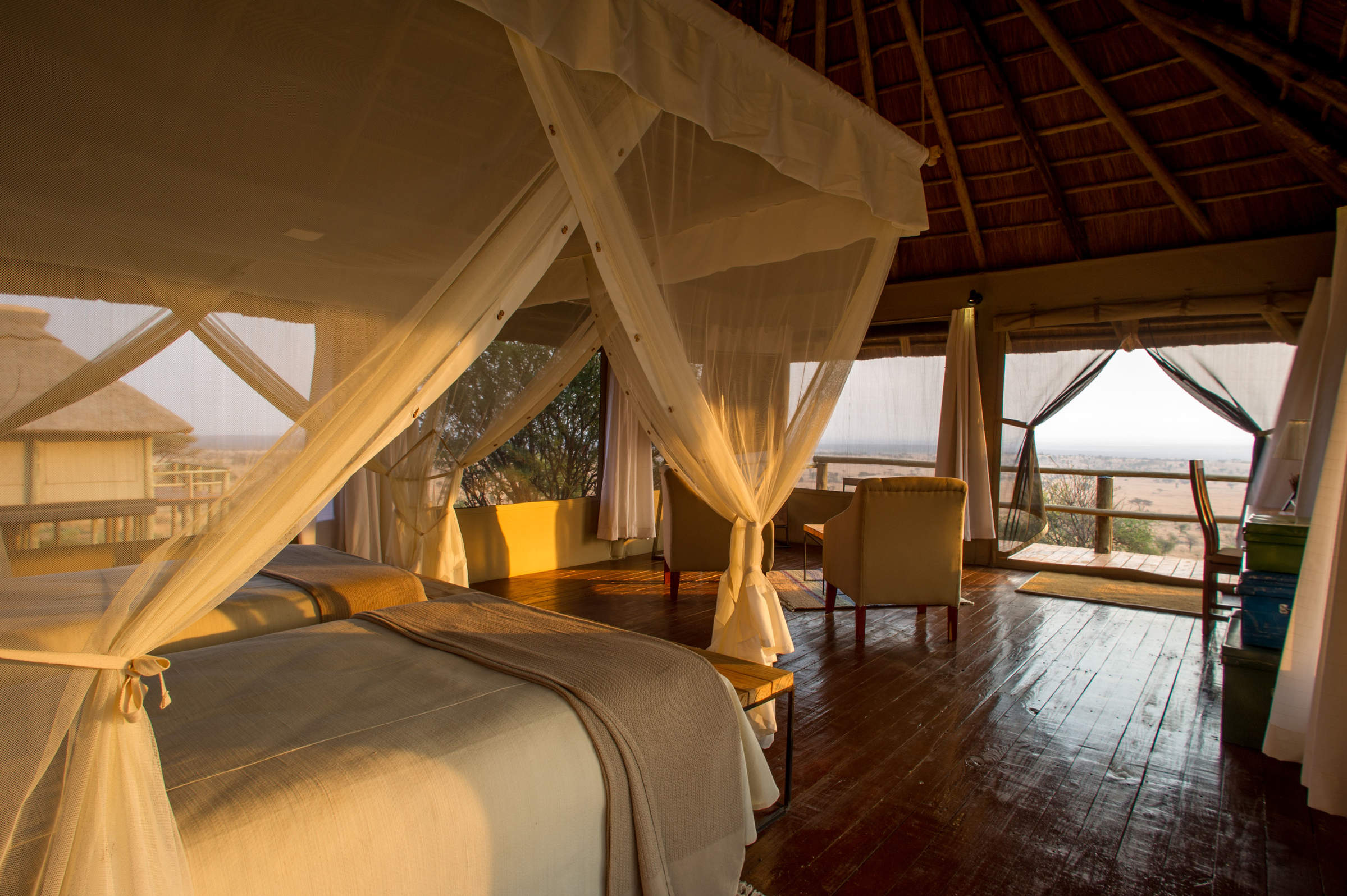
Kubu Kubu
Kubu Kubu is a contemporary, tented lodge, well located in the central Seronera area of the Serengeti National Park.
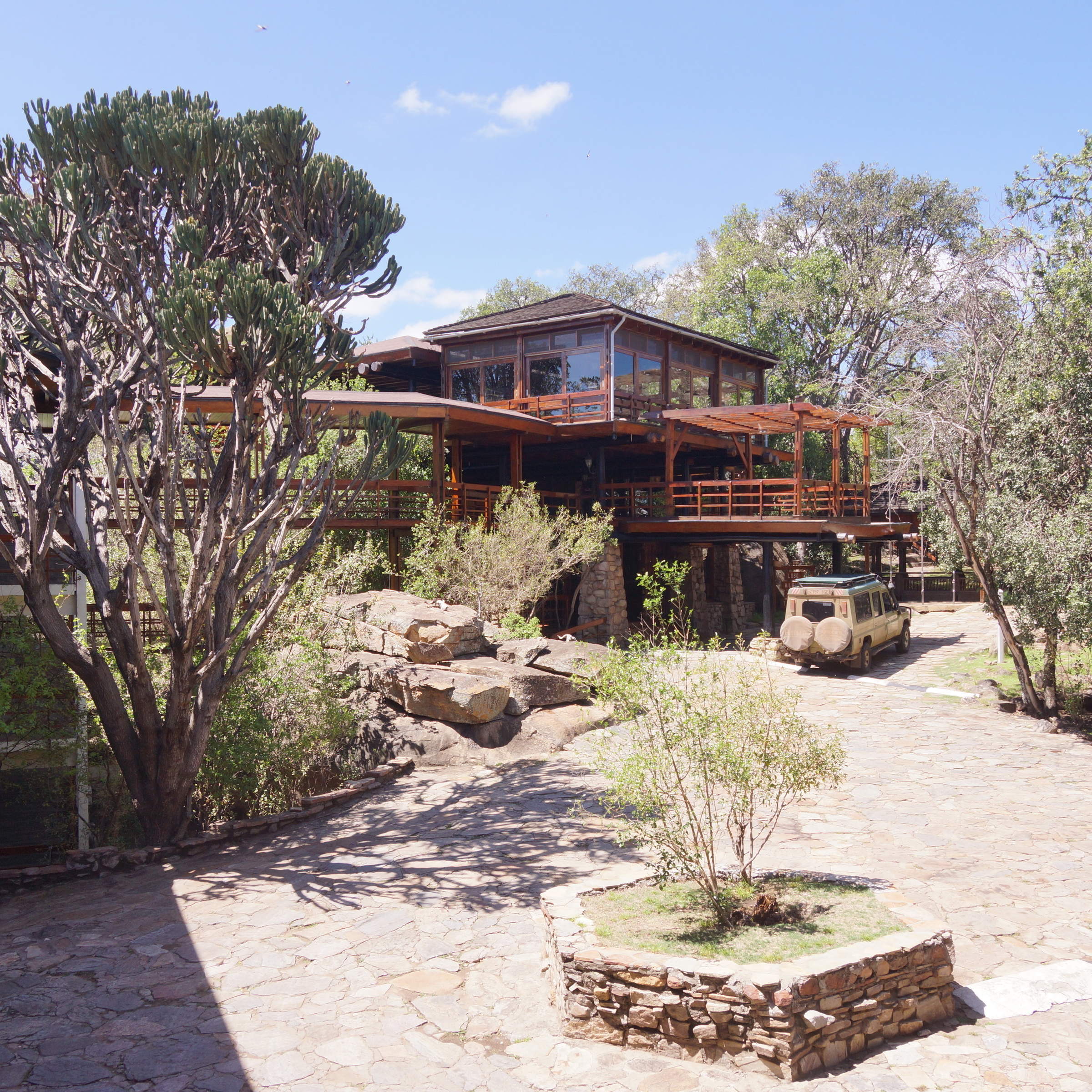
Lobo Wildlife Lodge
The large Lobo Wildlife Lodge has simple, functional rooms in a stunning location. It's a good base for exploring the north-eastern Serengeti.
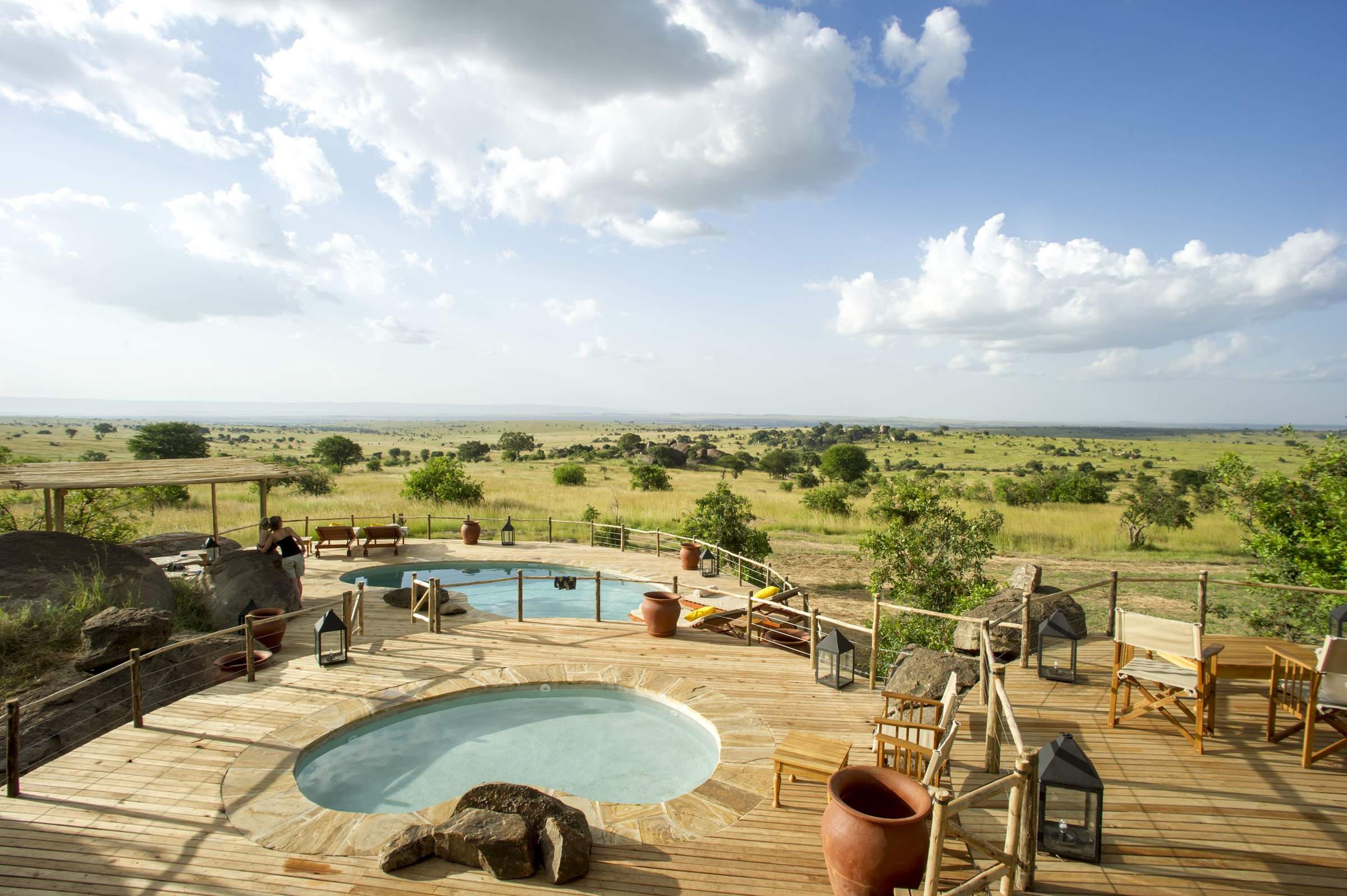
Mkombe's House Lamai
Mkombe's House Lamai is a fully staffed private house in the Wogakuria Kopjes district of Serengeti National Park.
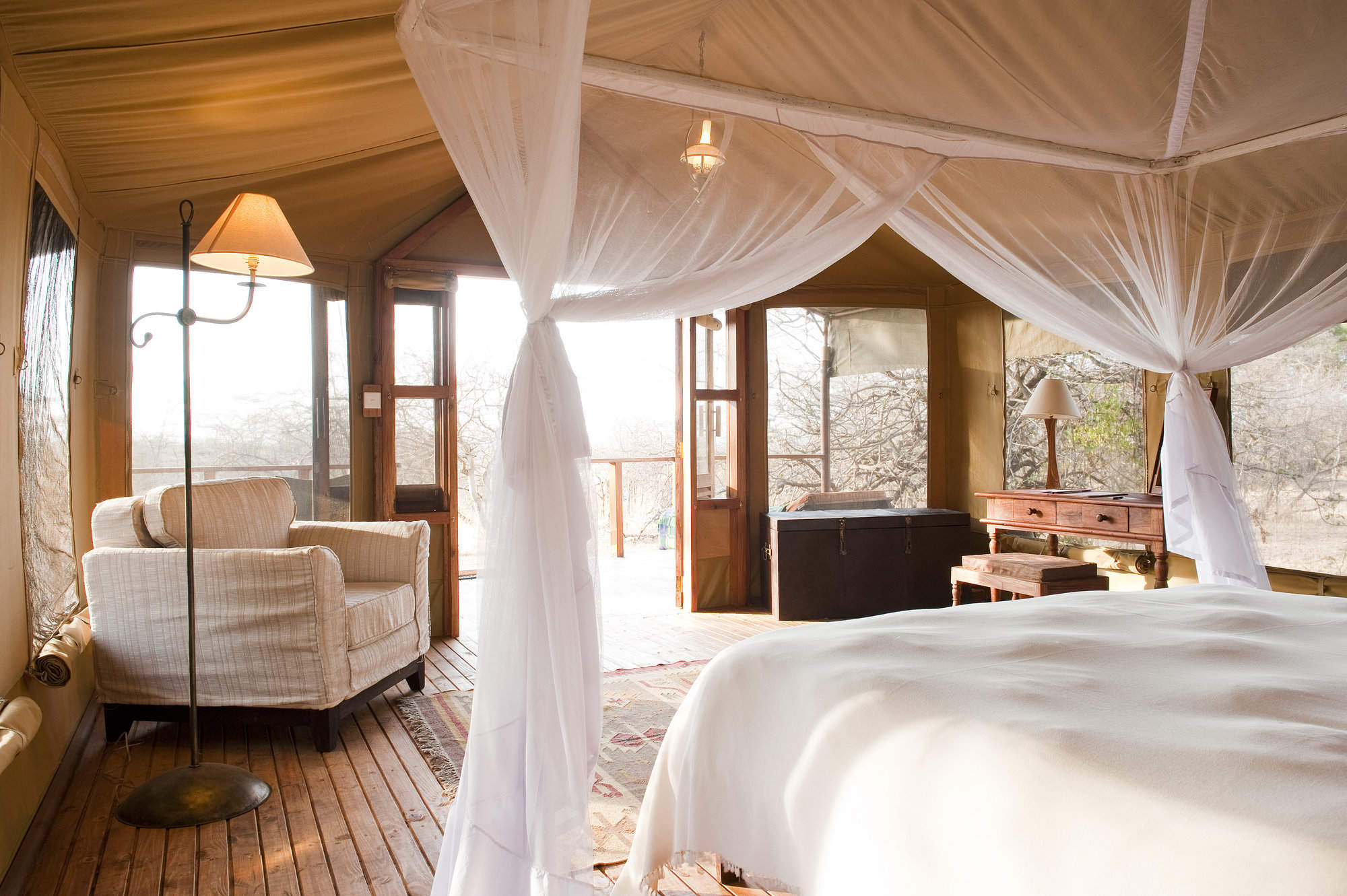
Kusini Camp
Kusini Camp is permanent, luxury camp located on a beautiful kopje in a quiet, wildlife-rich corner of the south-west Serengeti.
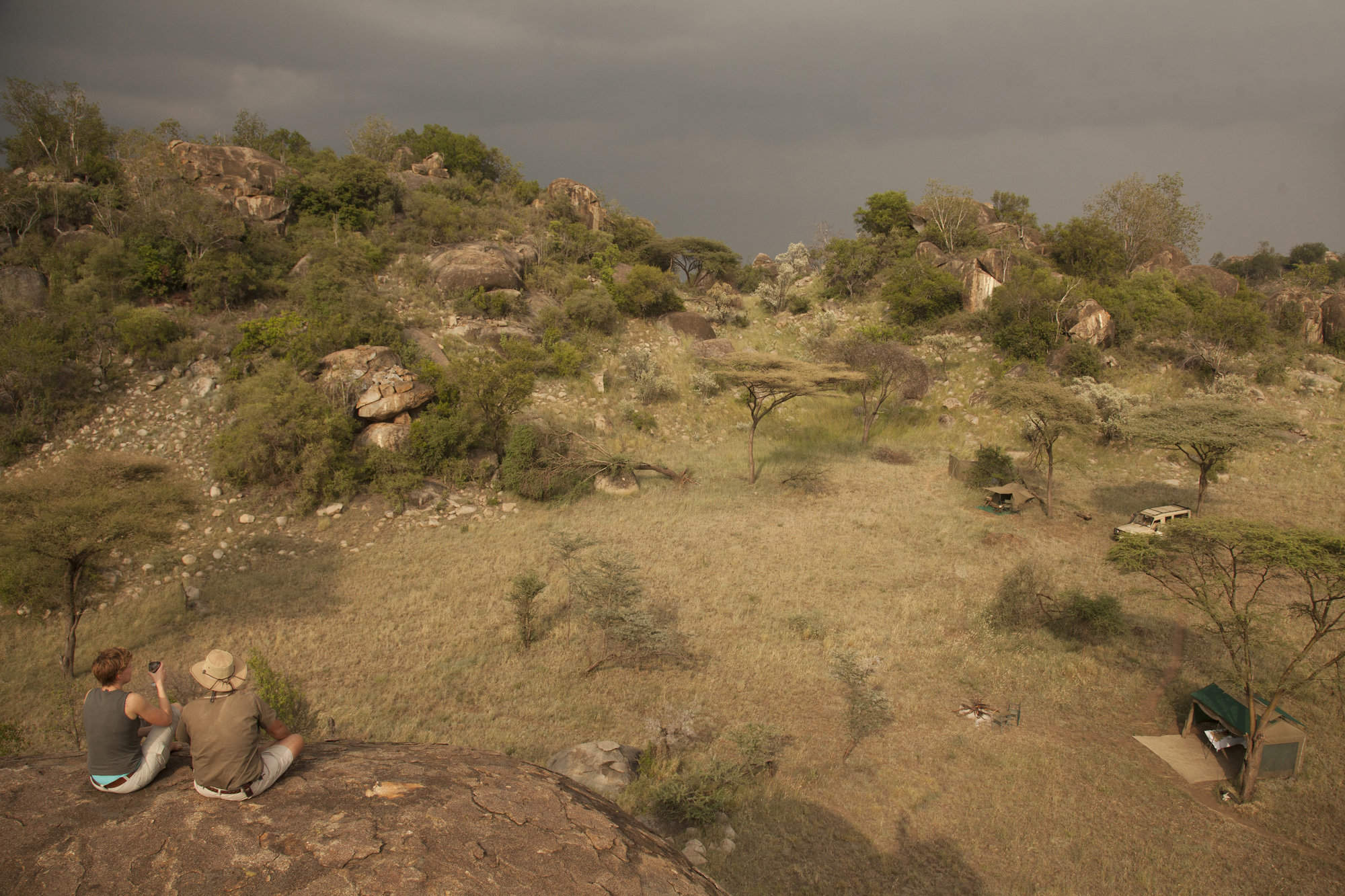
Serengeti Walking Mobile
This fairly simple camp offers only walking activities, but it's very well done and combines well with more conventional camps or lodges.
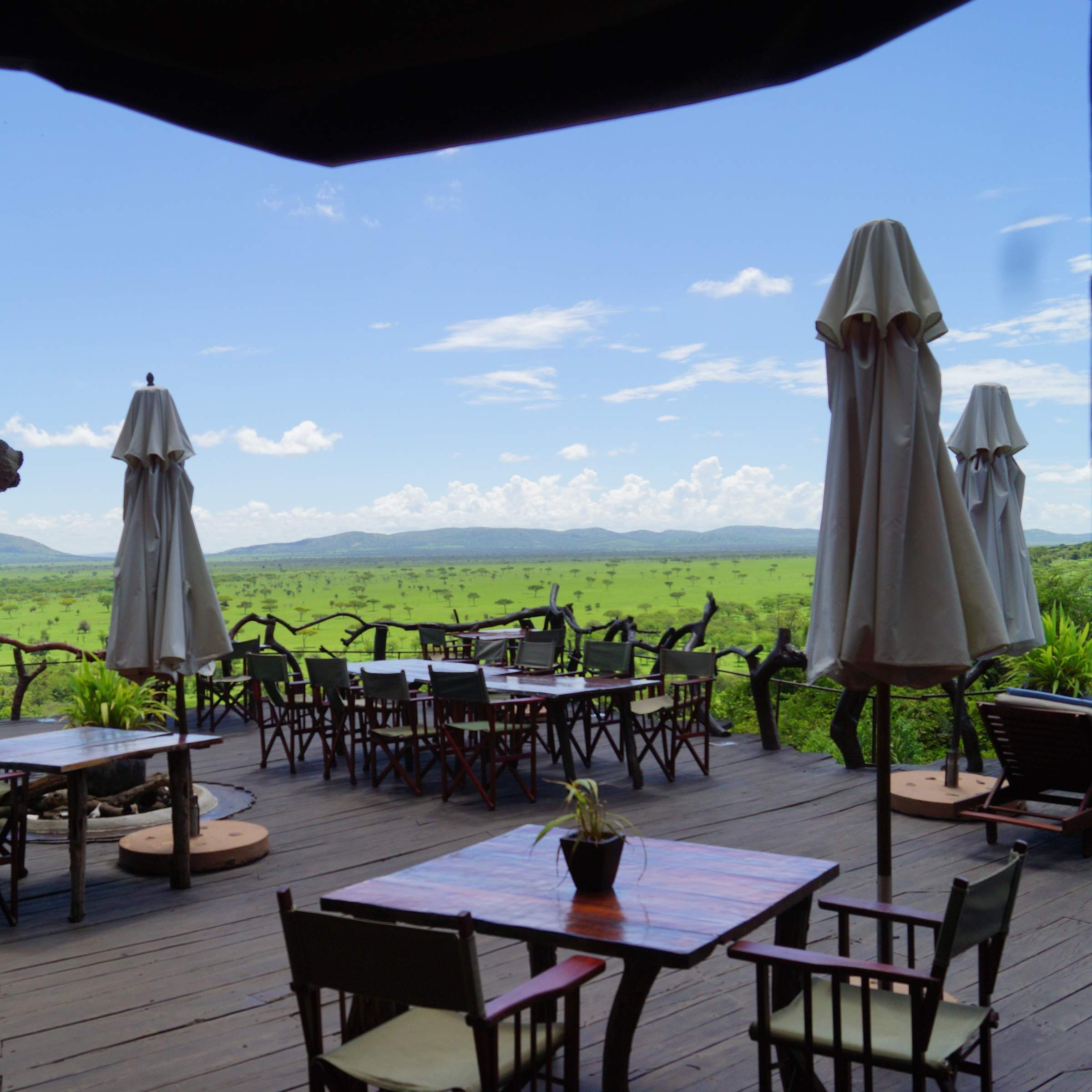
Mbalageti Lodge
Mbalageti is a well-run lodge in a quiet part of the Serengeti's western corridor – an ideal location during the Apr-Jun migration.
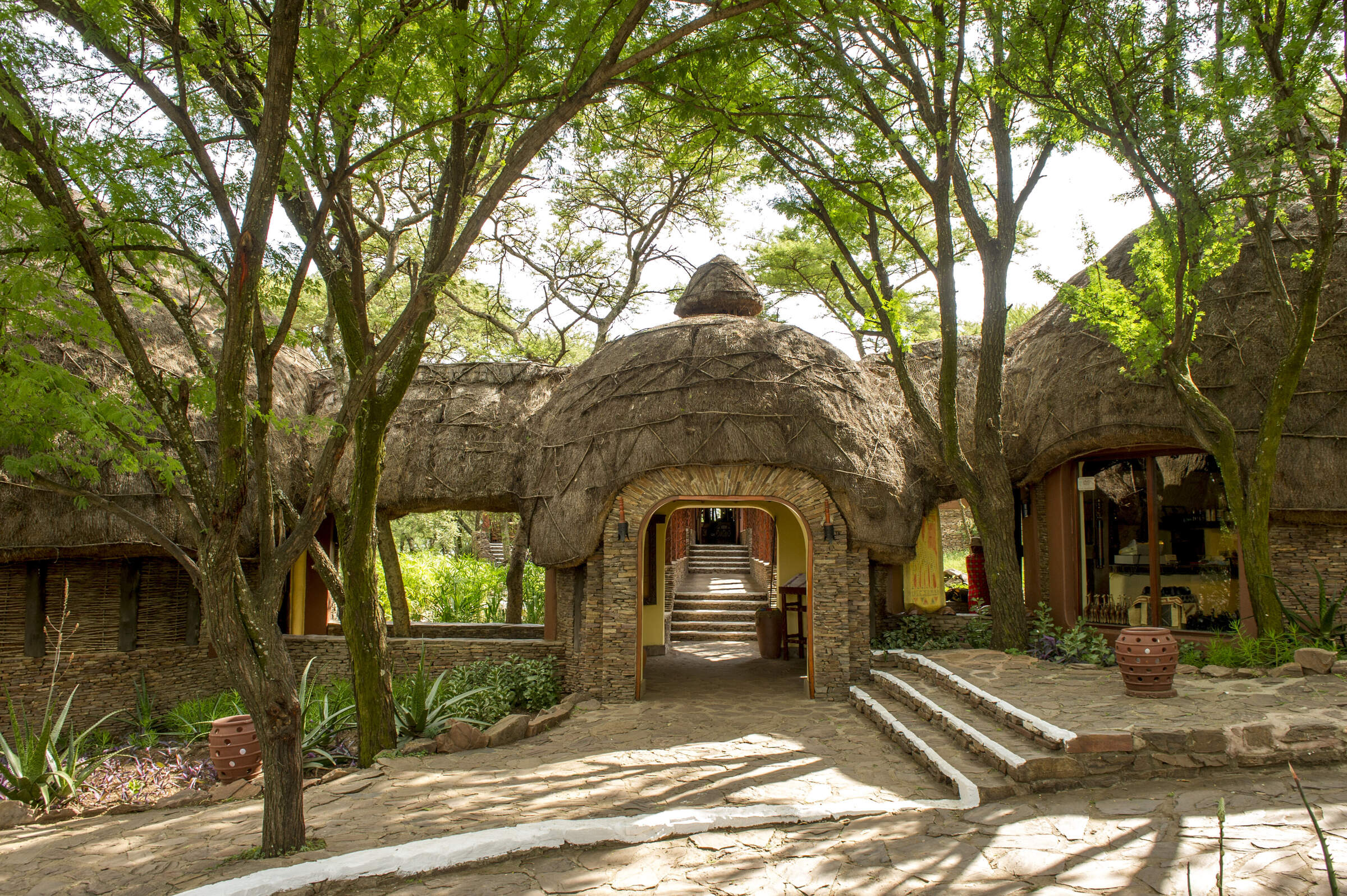
Serengeti Serena
The Serengeti Serena Safari Lodge is a large, hotel-style lodge and a good family-friendly base from which to explore the central Serengeti.
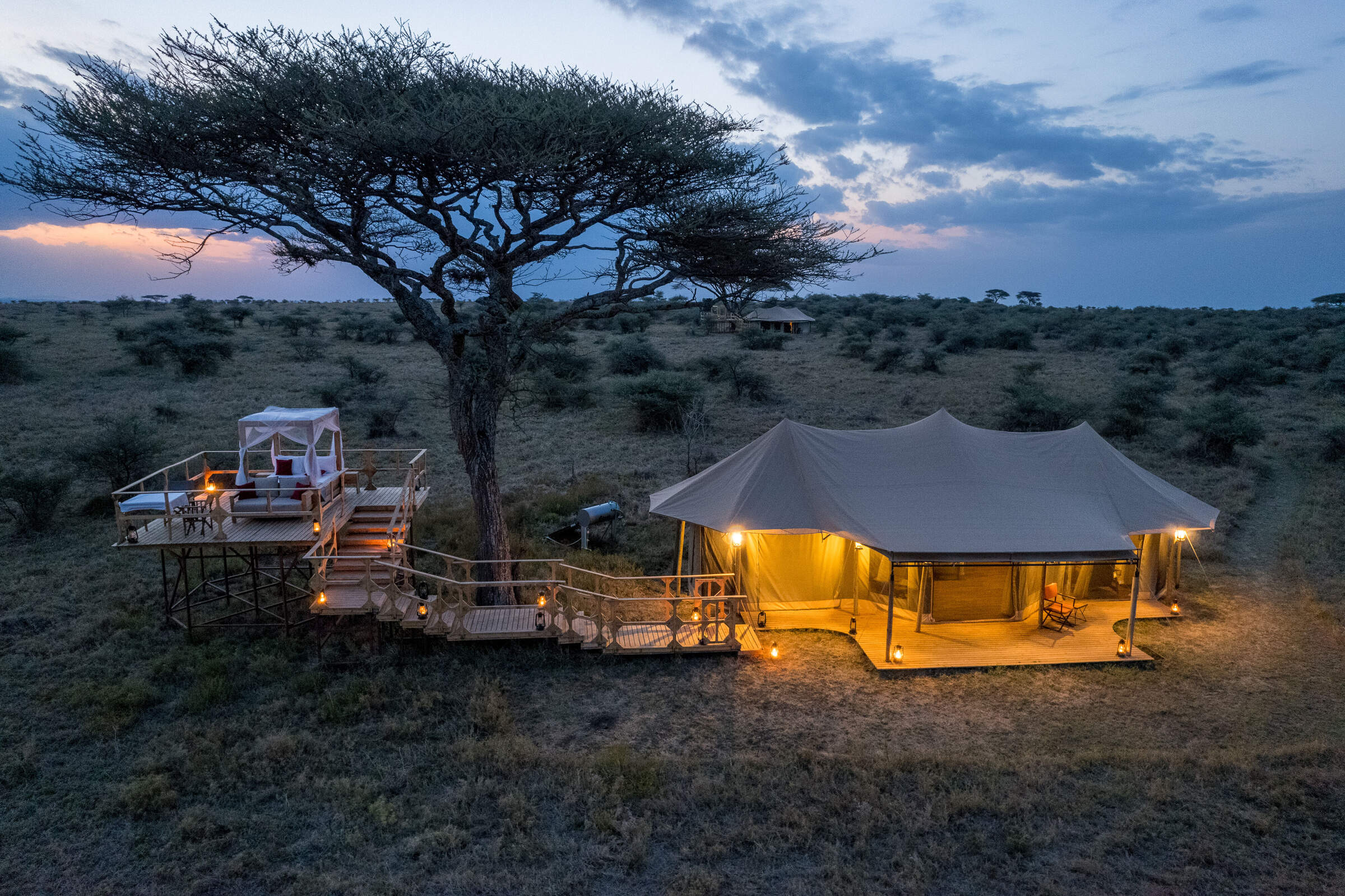
Olmara Camp
With just eight guest tents, including two family tents and three signature stargazer tents, Olmara is a simple, family-friendly camp with a wonderfully attentive team. The camp captures an authentic bush experience, welcoming travellers of every kind.
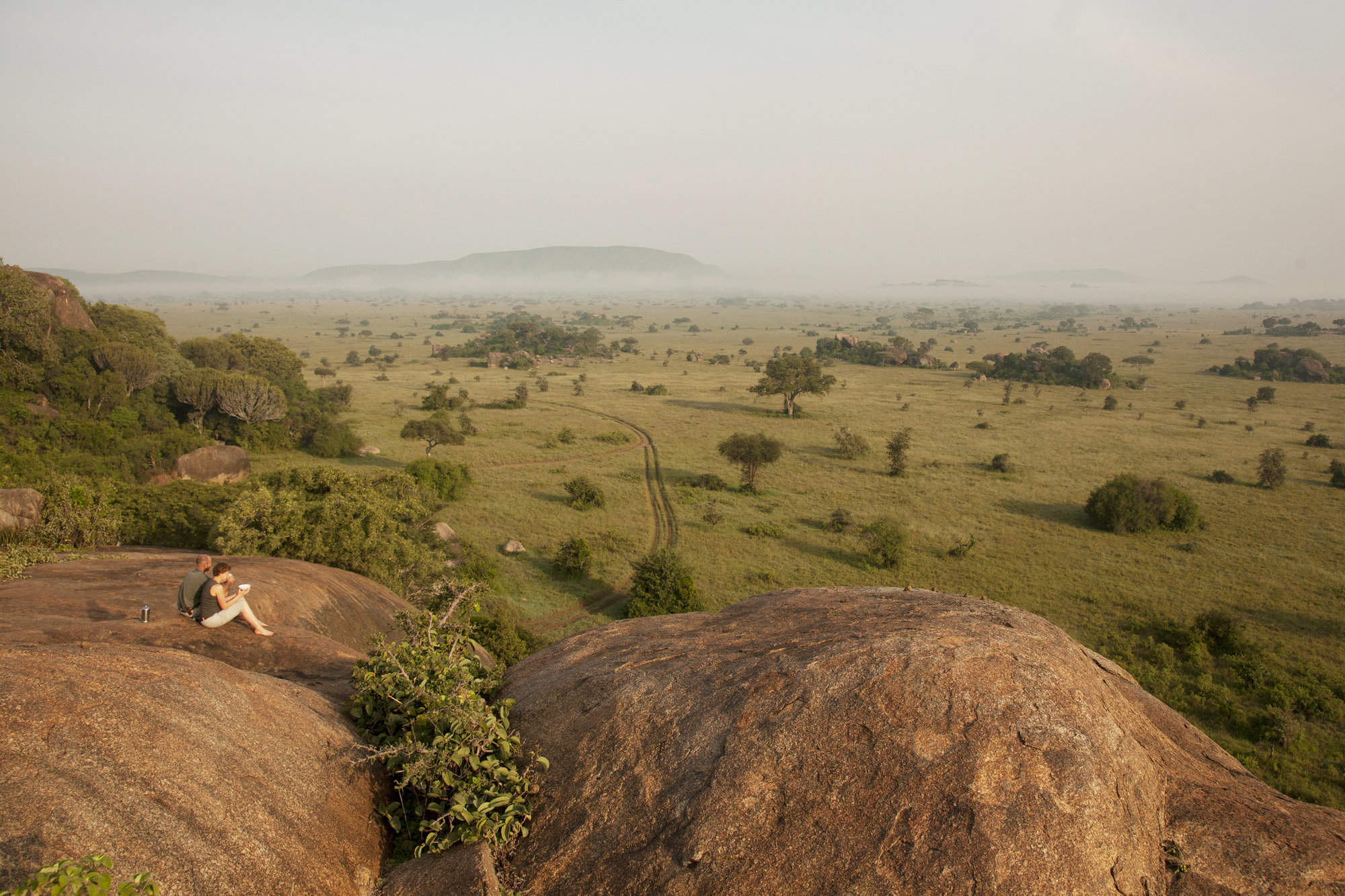
Serengeti Green Camp
Serengeti Green Camp is a comfortable camping experience, in your own private safari camp and at the heart of a great wildlife area.
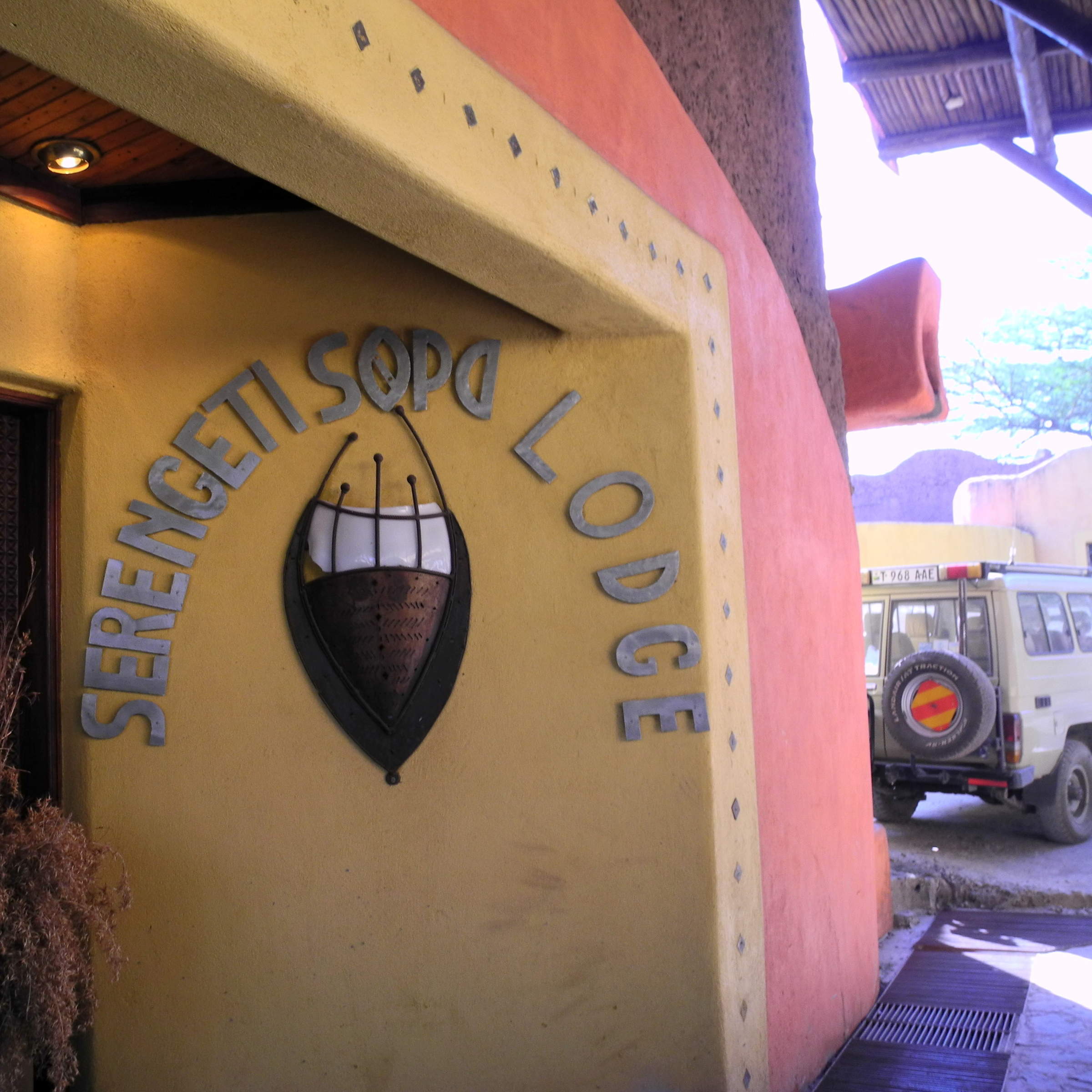
Serengeti Sopa Lodge
Serengeti Sopa Lodge is an international-style hotel offering good-value accommodation in the central Serengeti, with lovely views of the plains.
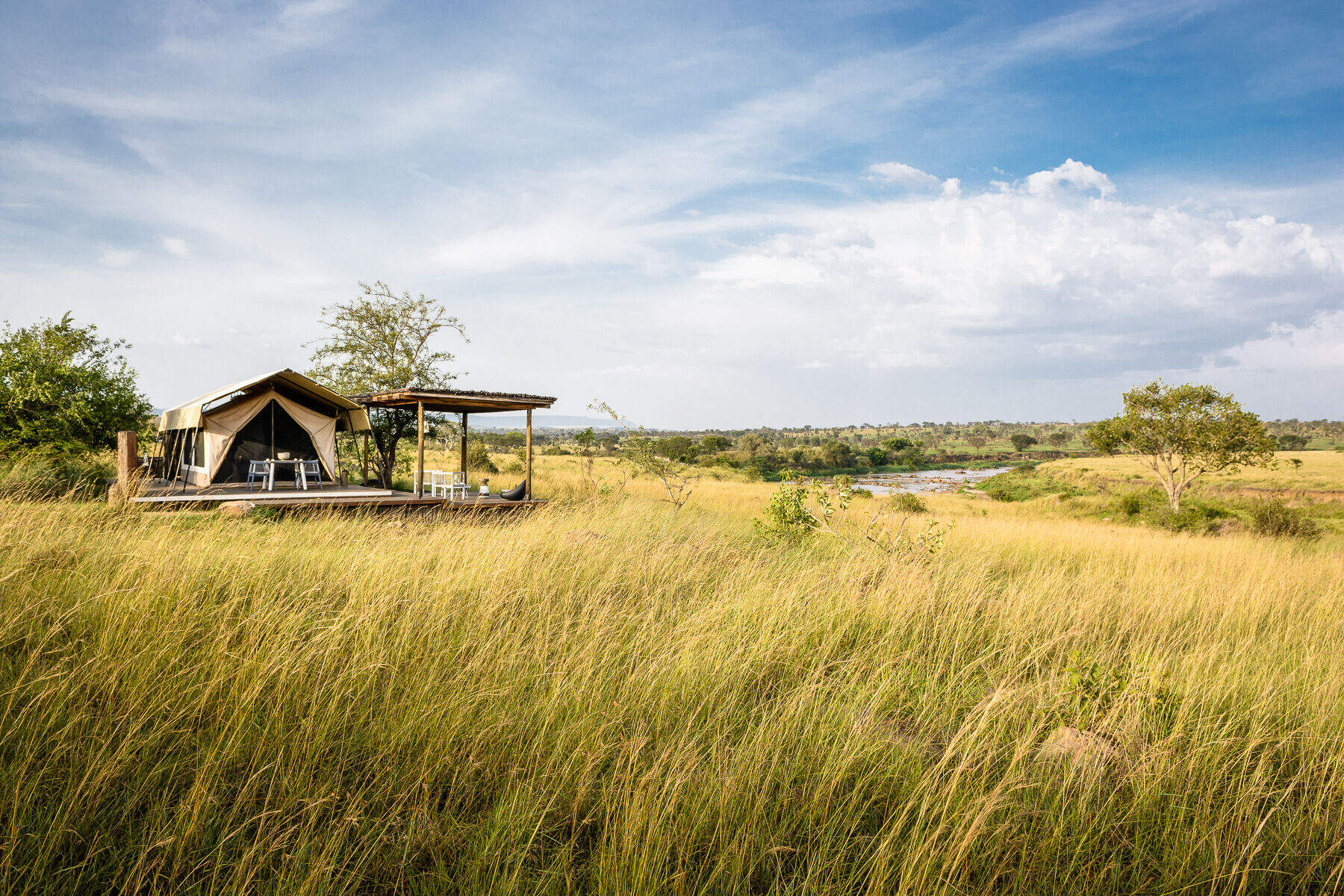
Singita Mara River
Singita Mara River Tented Camp is a luxurious camp in the isolated and rewarding Lamai wedge region of the northern Serengeti.
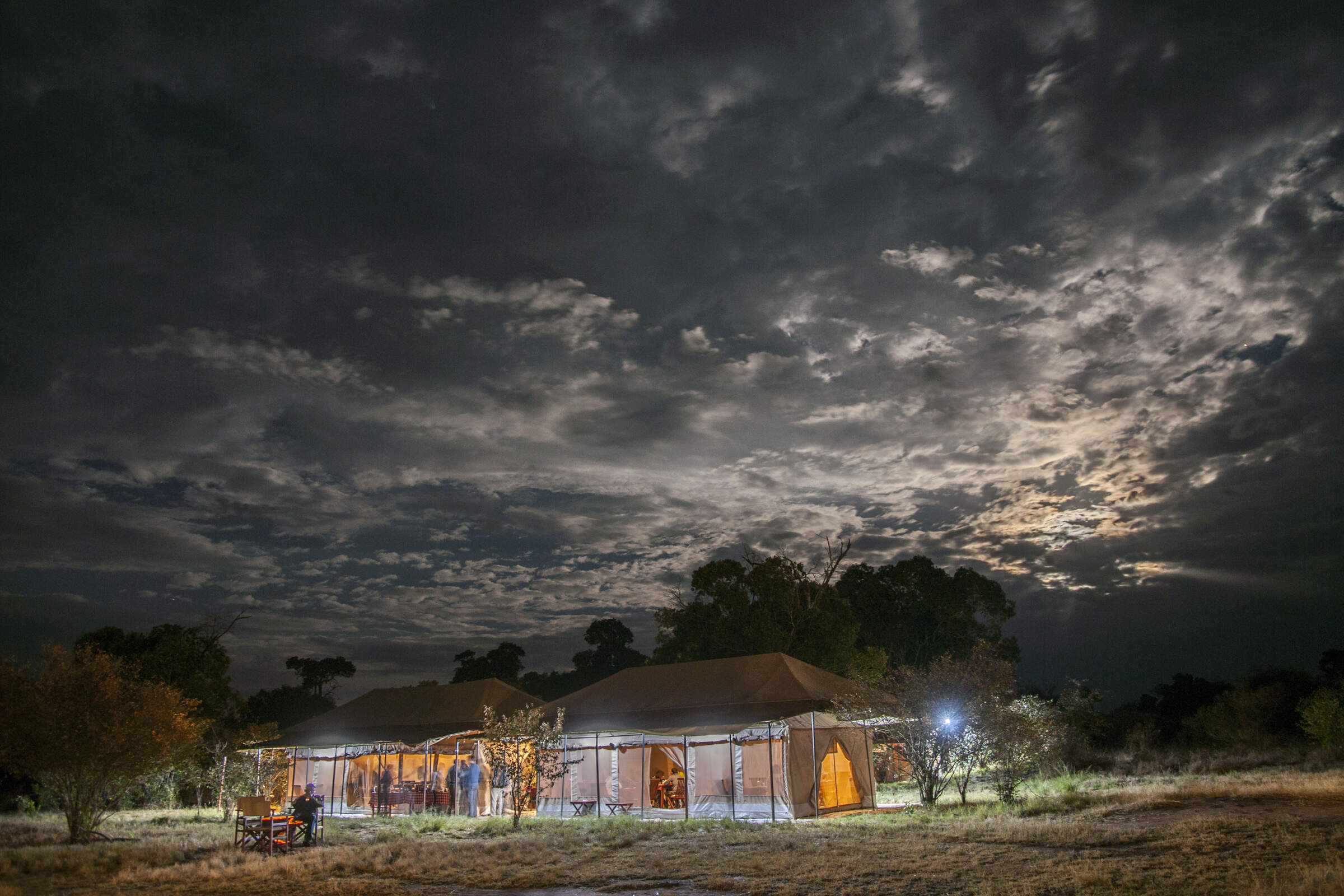
Migration Camp
Serengeti Migration Camp is a smart tented camp, good for the wildebeest migration from Jul–Aug, or to explore the Lobo Kopjes any time.
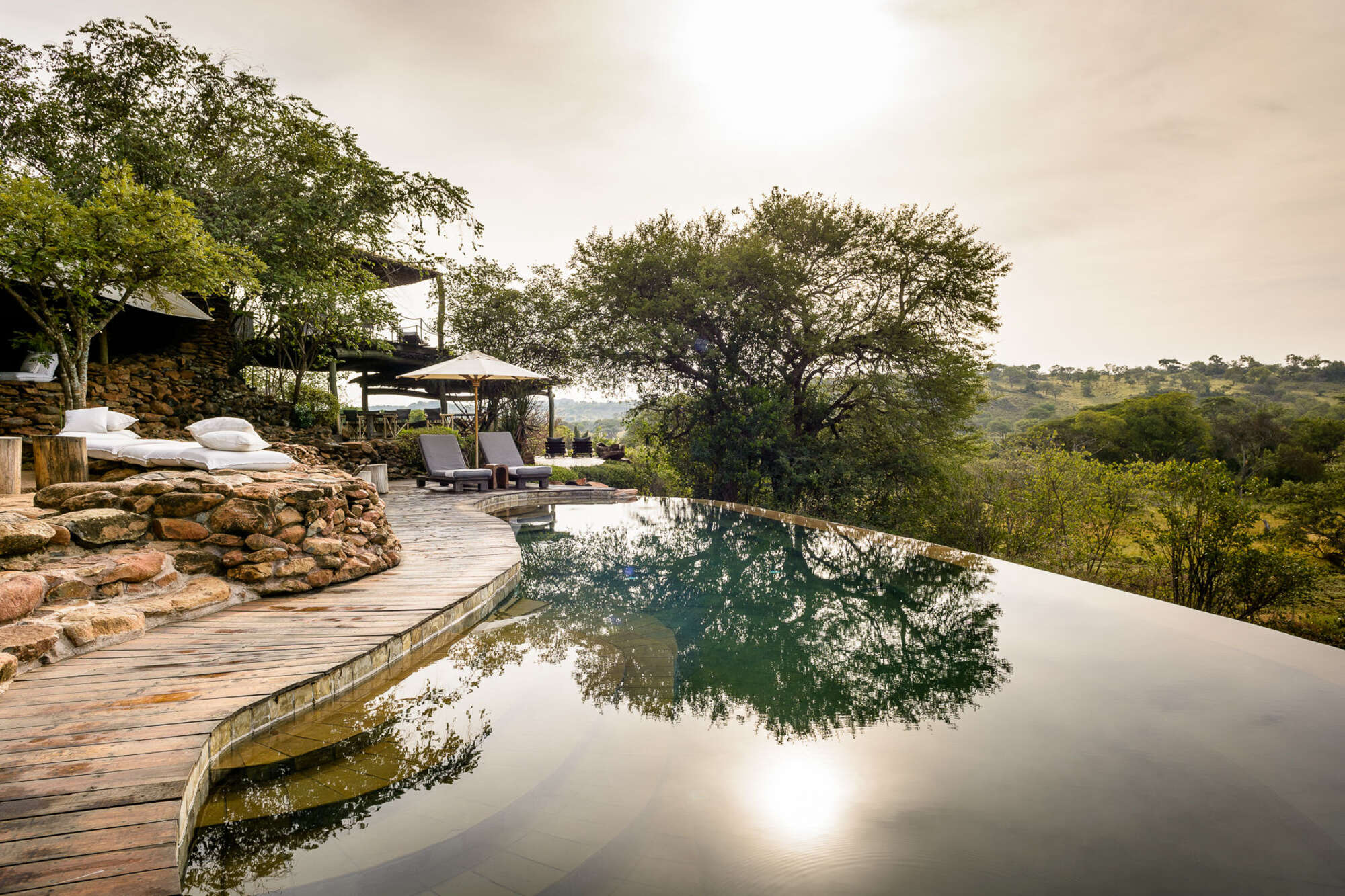
Faru Faru Lodge
On the north bank of the Grumeti River, Faru Faru is a small, chic hideaway in this exclusive corner of the Serengeti.
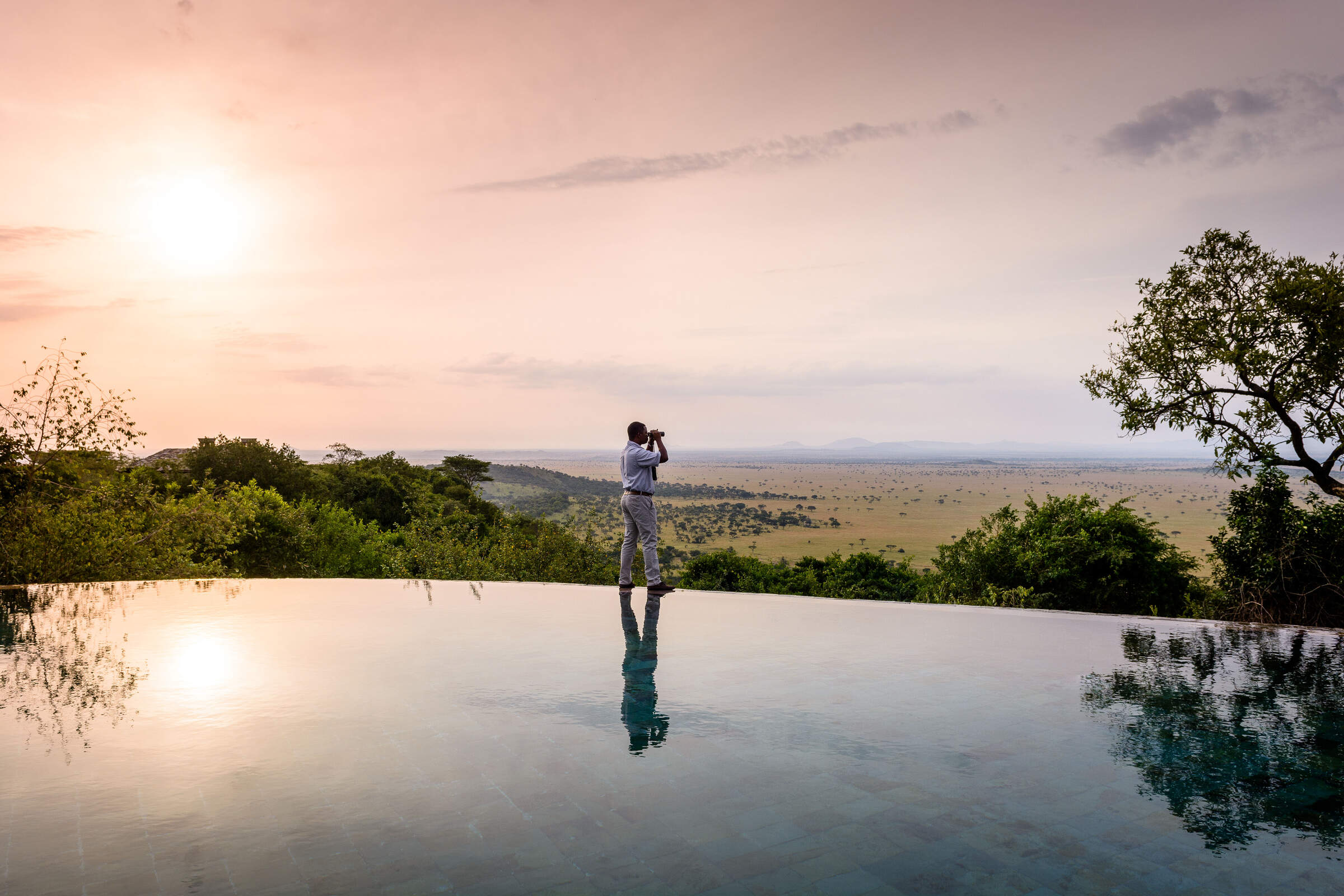
Sasakwa Lodge
On a hill looking over the Serengeti plains, Sasakwa Lodge is grand, luxurious safari camp, one of the most opulent properties in Tanzania.
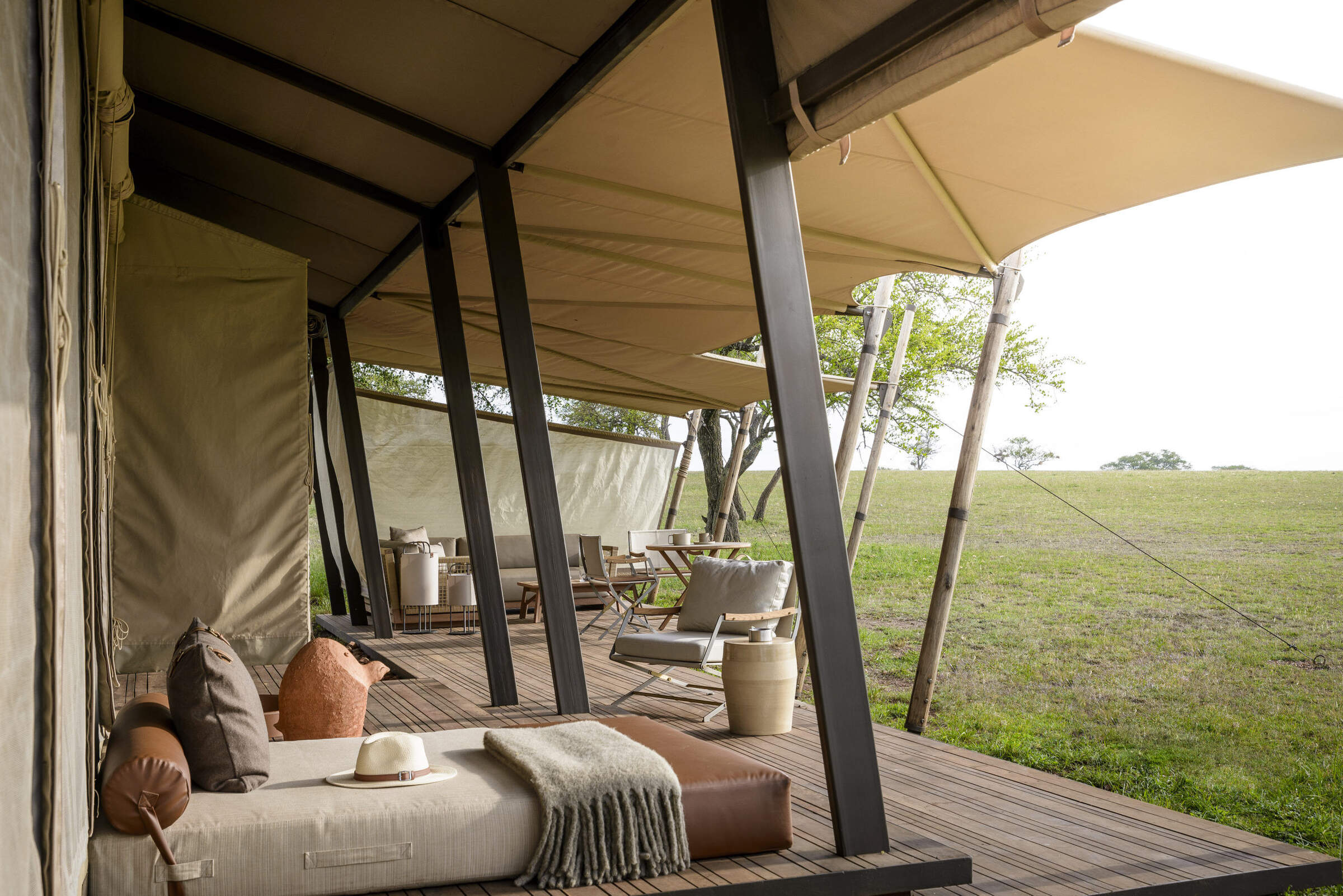
Sabora Tented Camp
Sabora Tented Camp is a smart tented camp – one of the most luxurious, professional and stylish properties to be found in Tanzania.
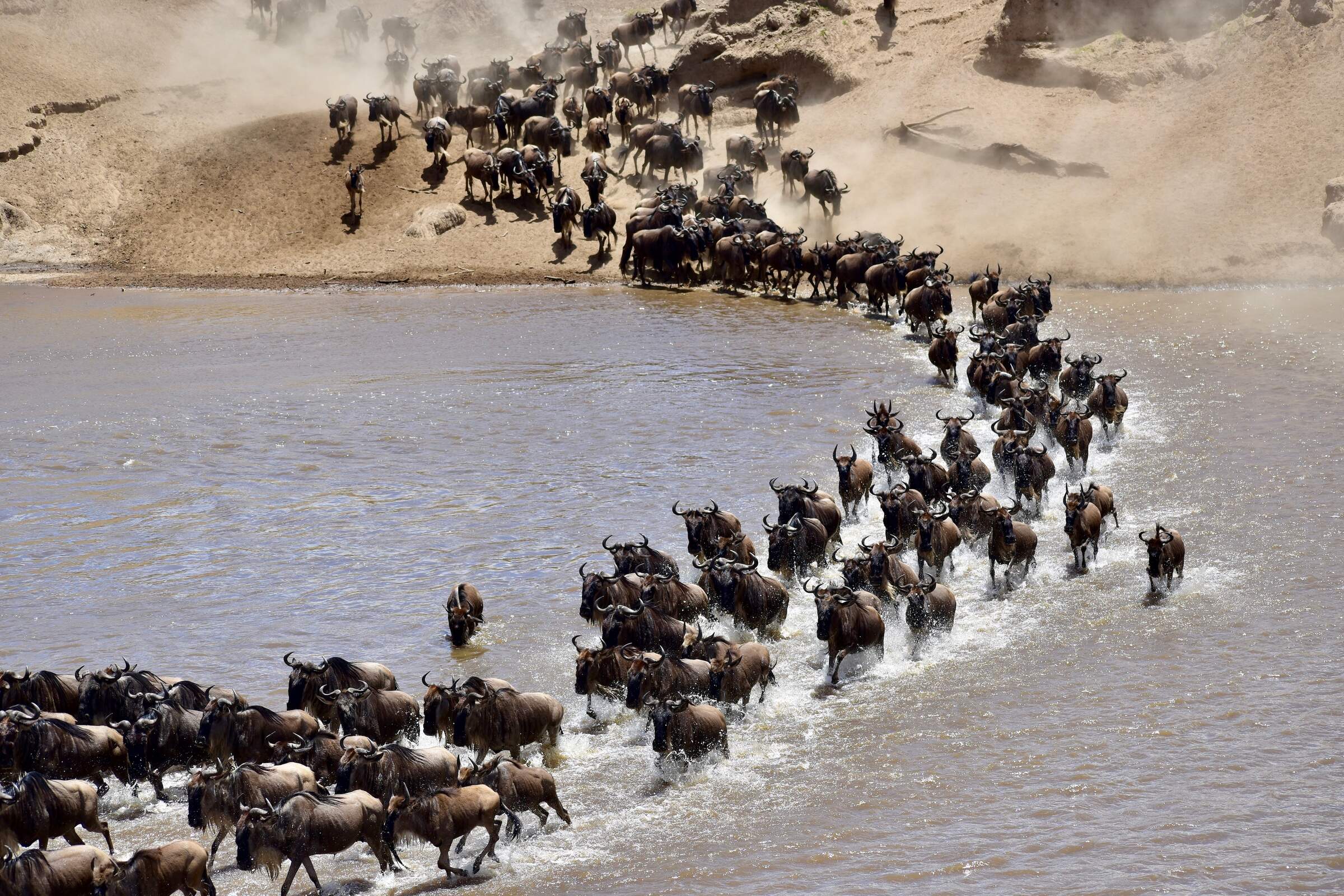
Kirurumu Migration Camp
Kirurumu is a rustic tented camp which moves around the Serengeti twice a year to follow the wildebeest migration.
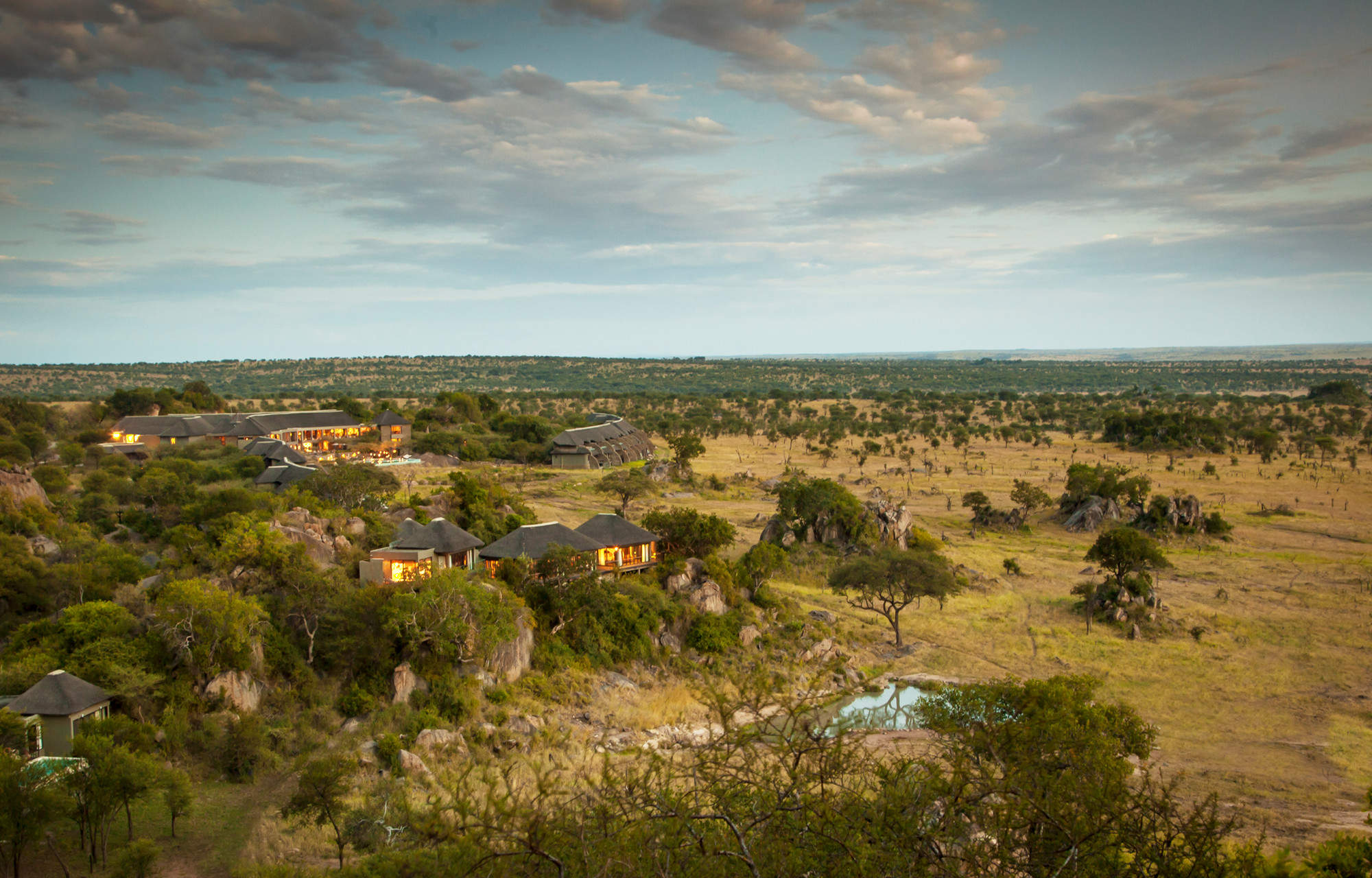
Four Seasons Serengeti
The Four Seasons Safari Lodge is the only hotel in the Serengeti offering international facilities such as a gym, spa and children’s club.
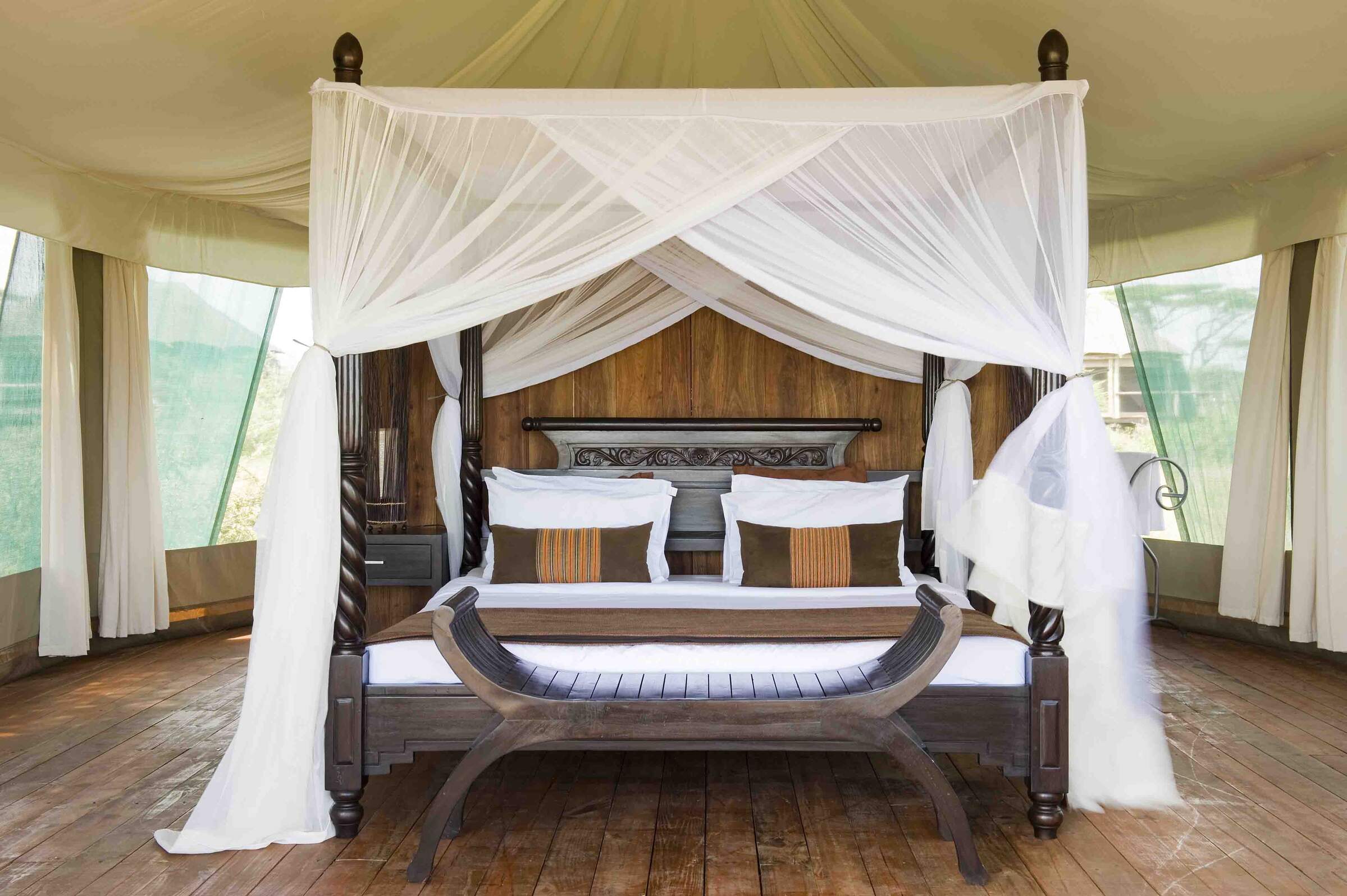
Lake Masek Tented Camp
Ideally located for the wildebeest migration from Dec–Apr, Lake Masek Tented Camp is a good, mid-market safari camp.
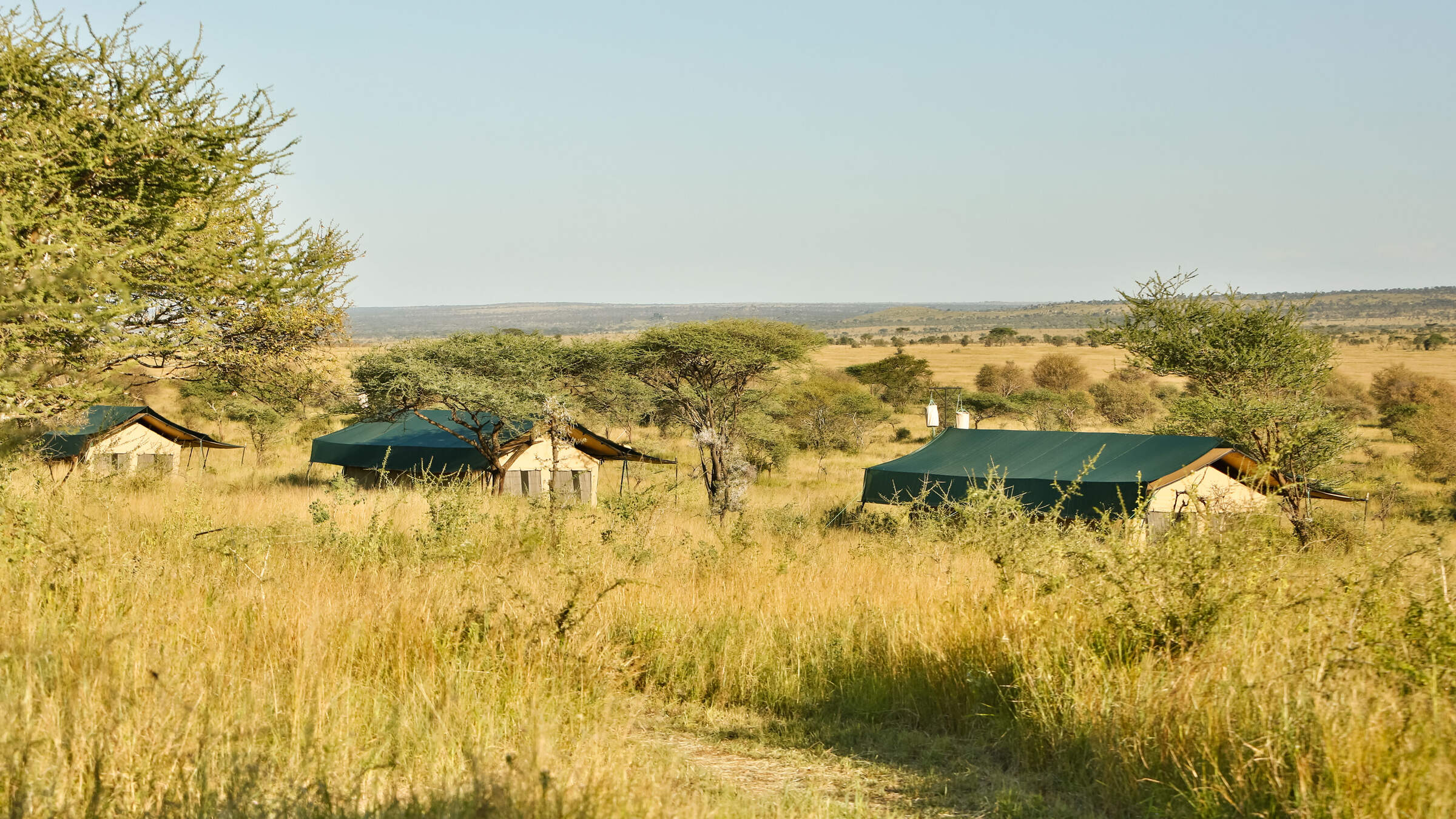
Nyikani Central
Nyikani Central is a comfortable tented camp located in the game-rich Seronera area of the central Serengeti.

Esirai Migration Camp
A season migration camp, with only 8 tents and 1 family tent and plenty of character. Esirai is ideally placed for excellent wildlife and enjoys a simplistic and comfortable under-canvas experience.
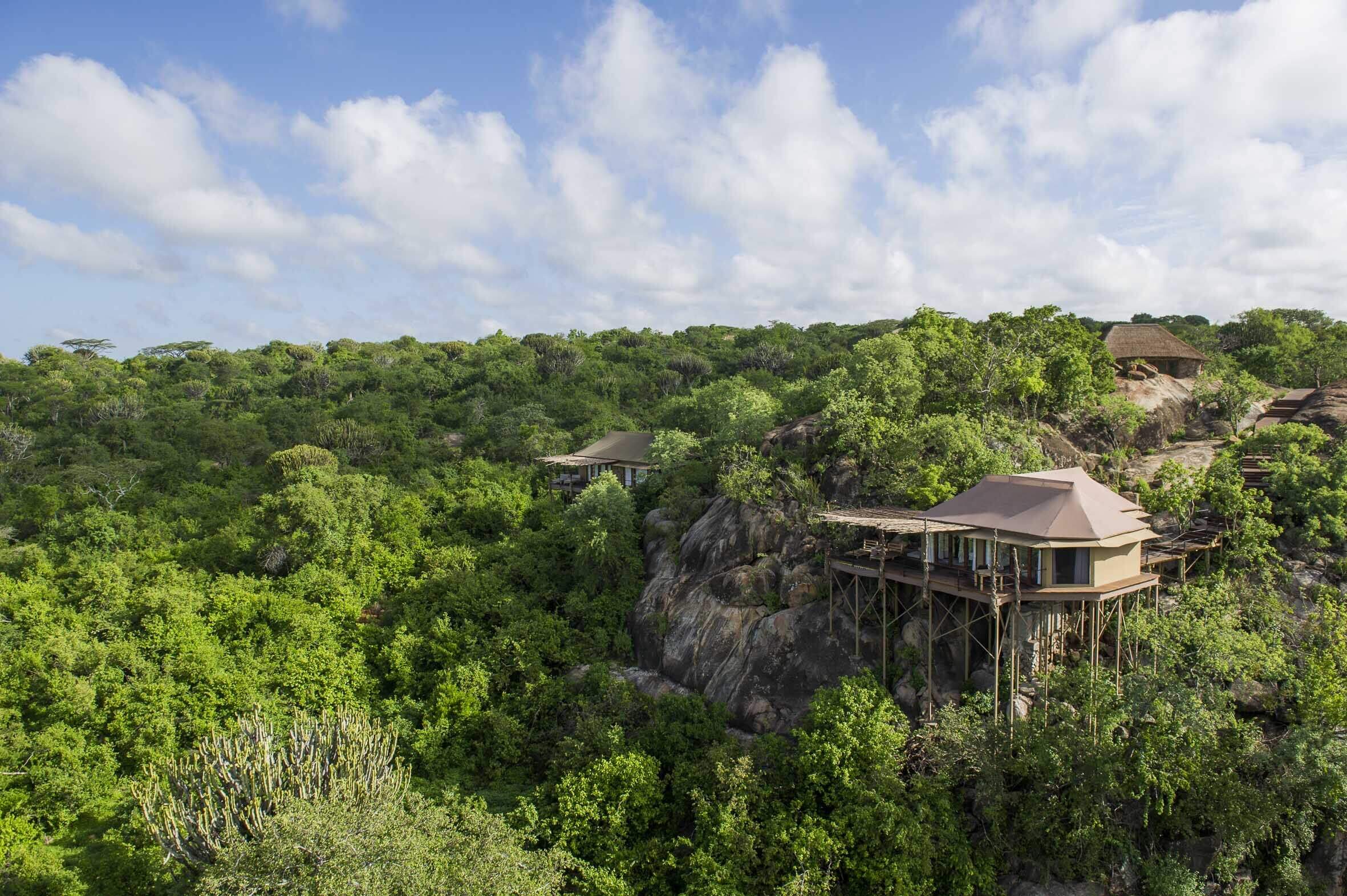
Mwiba Lodge
Mwiba Lodge is a luxurious property located on a private concession on the edge of the southern Serengeti.
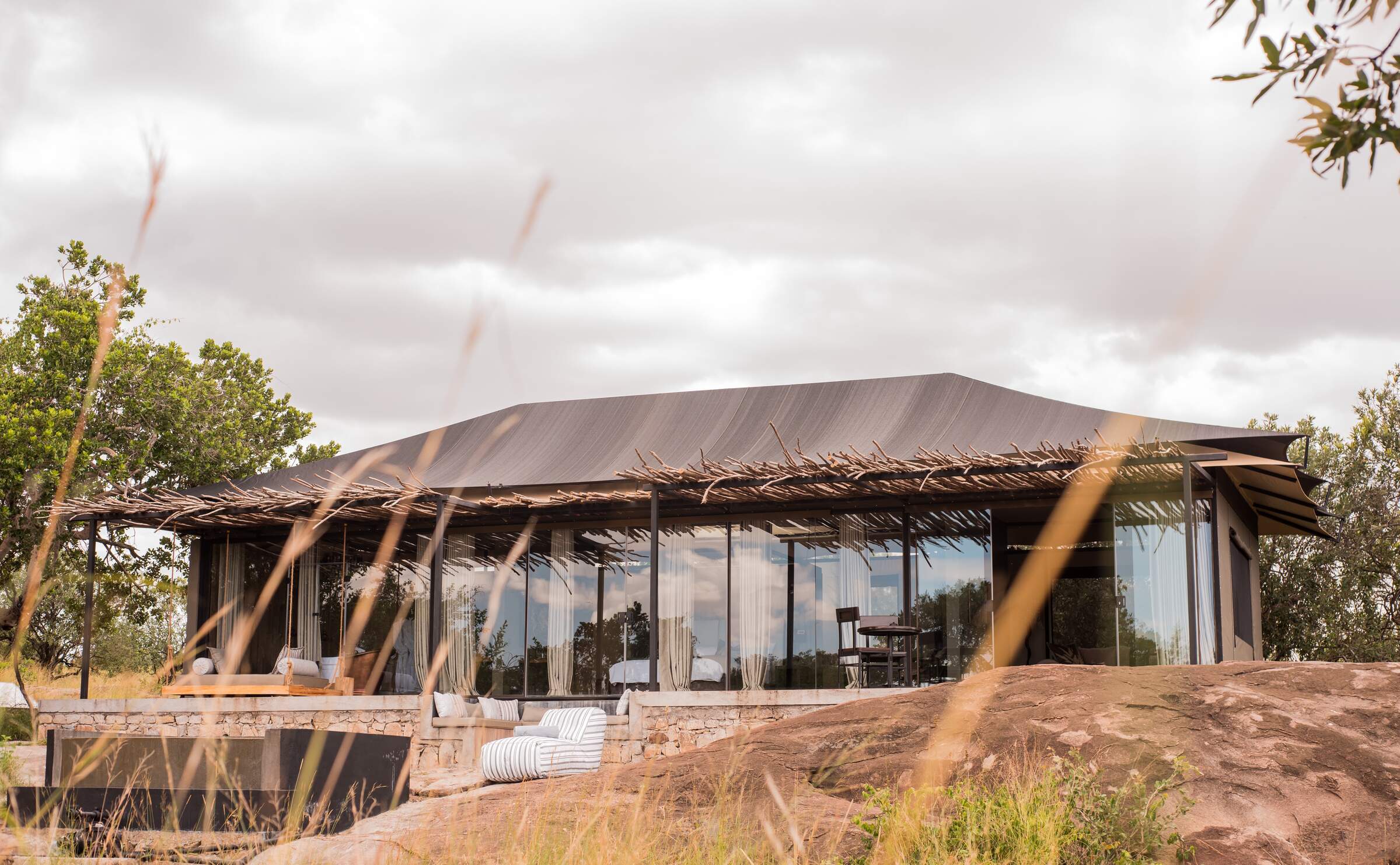
Nimali Mara
Nimali Mara is a luxurious safari lodge in a quiet region of the northern Serengeti with good access to the wildebeest migration.
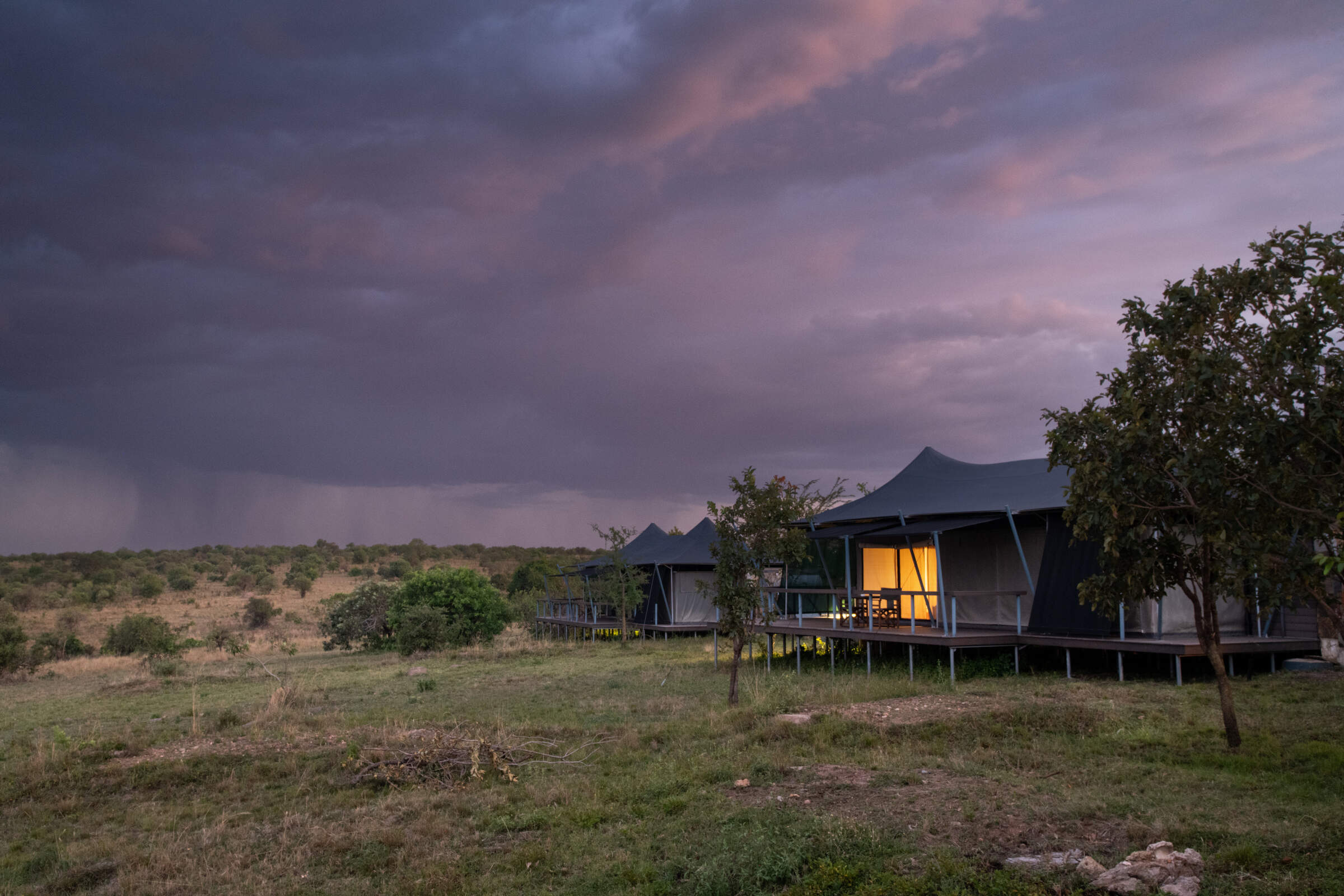
Mara Mara
Mara Mara is a smart tented camp in the northern Serengeti, situated on a small hill close to the Mara River.
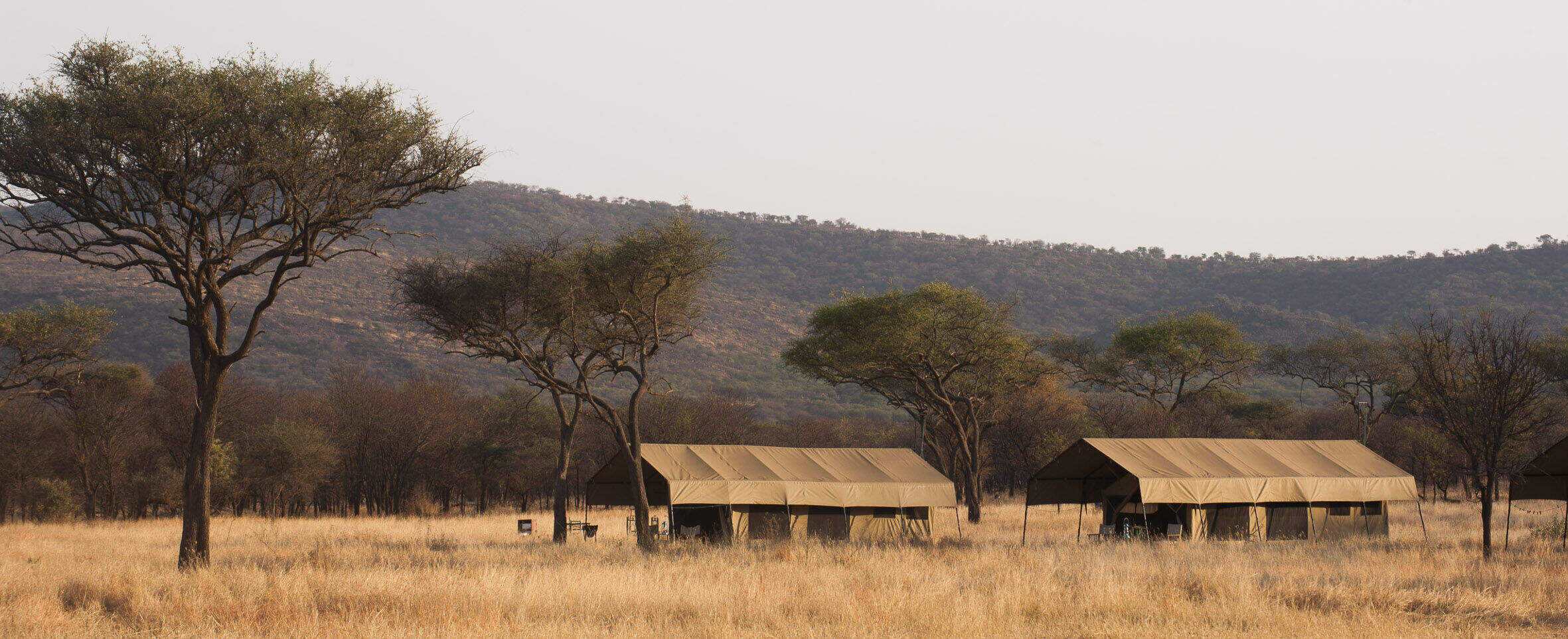
Ndutu Kati Kati
Ndutu Kati Kati is a seasonal tented camp, based in the southern Serenget from Dec-Mar, ideal for the migration as it passes through.

Olduvai Camp
Olduvai Camp lies between Ngorongoro and the southern Serengeti plains. It's a good base for the southern plains during the rainy season.
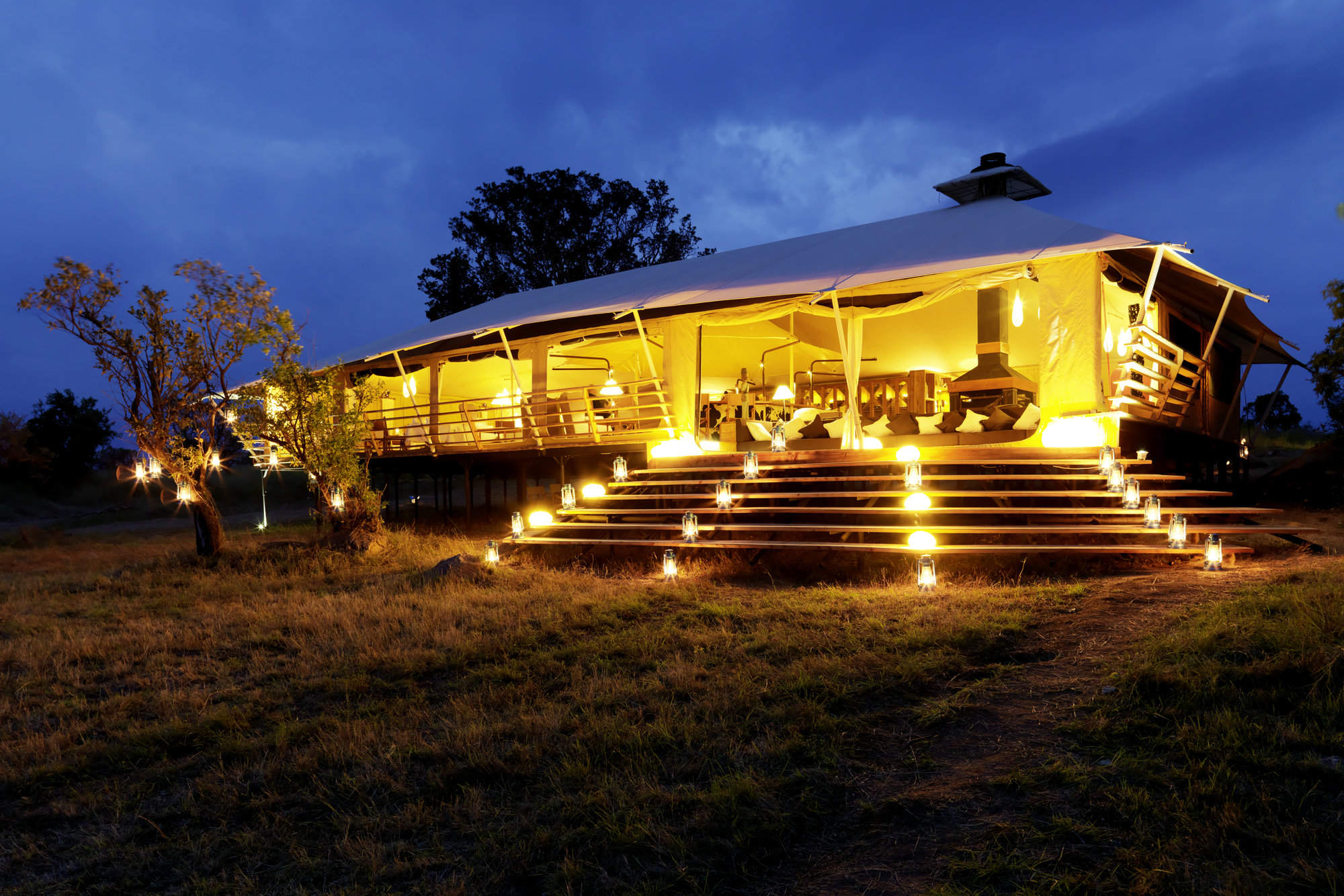
Bushtops
Serengeti Bushtops is a permanent luxury camp in the northern Serengeti, with spacious and private tents with their own hot tubs.
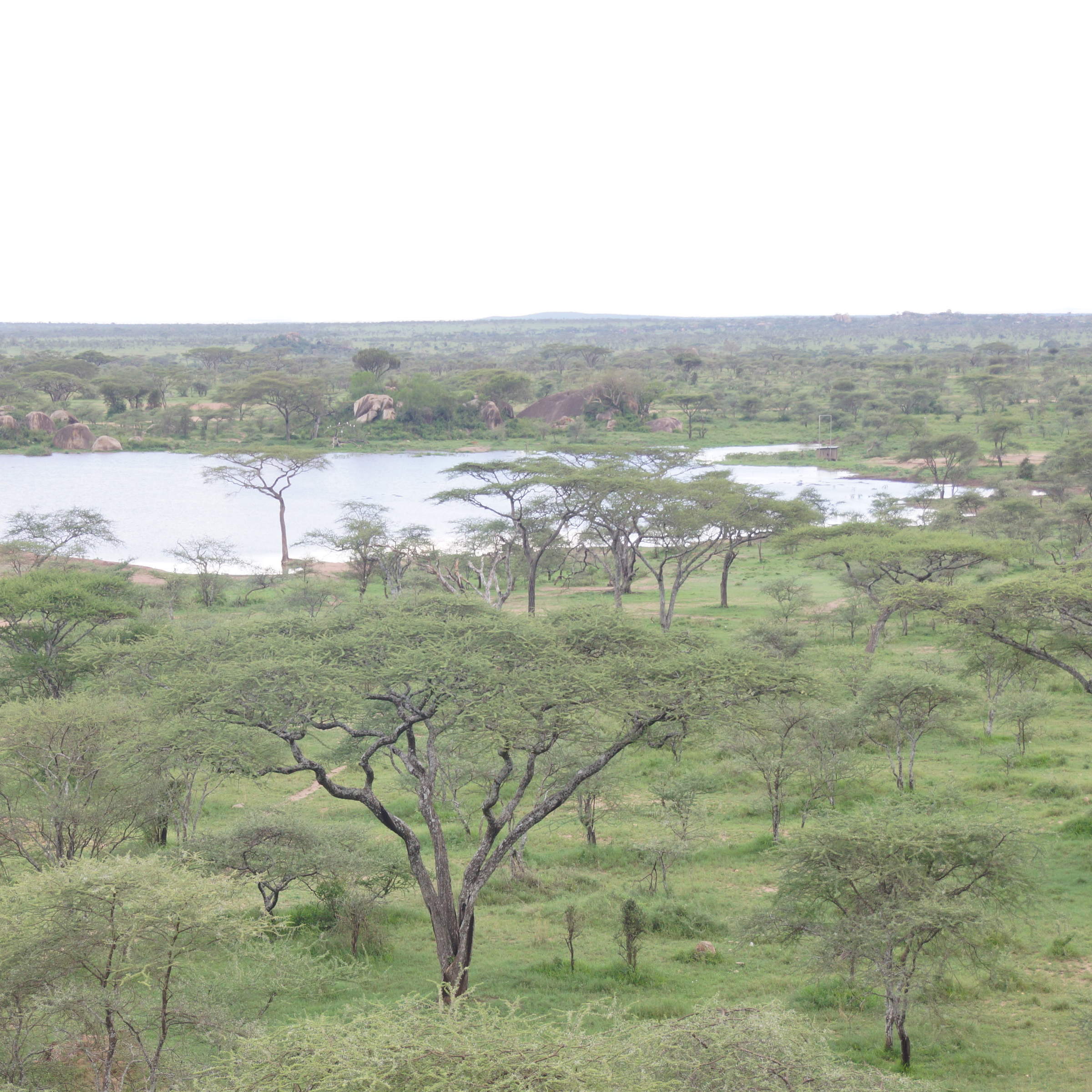
Seronera Wildlife Lodge
Seronera Wildlife Lodge is large hotel-style safari lodge in the heart of the Serengeti, offering good value and a great location.
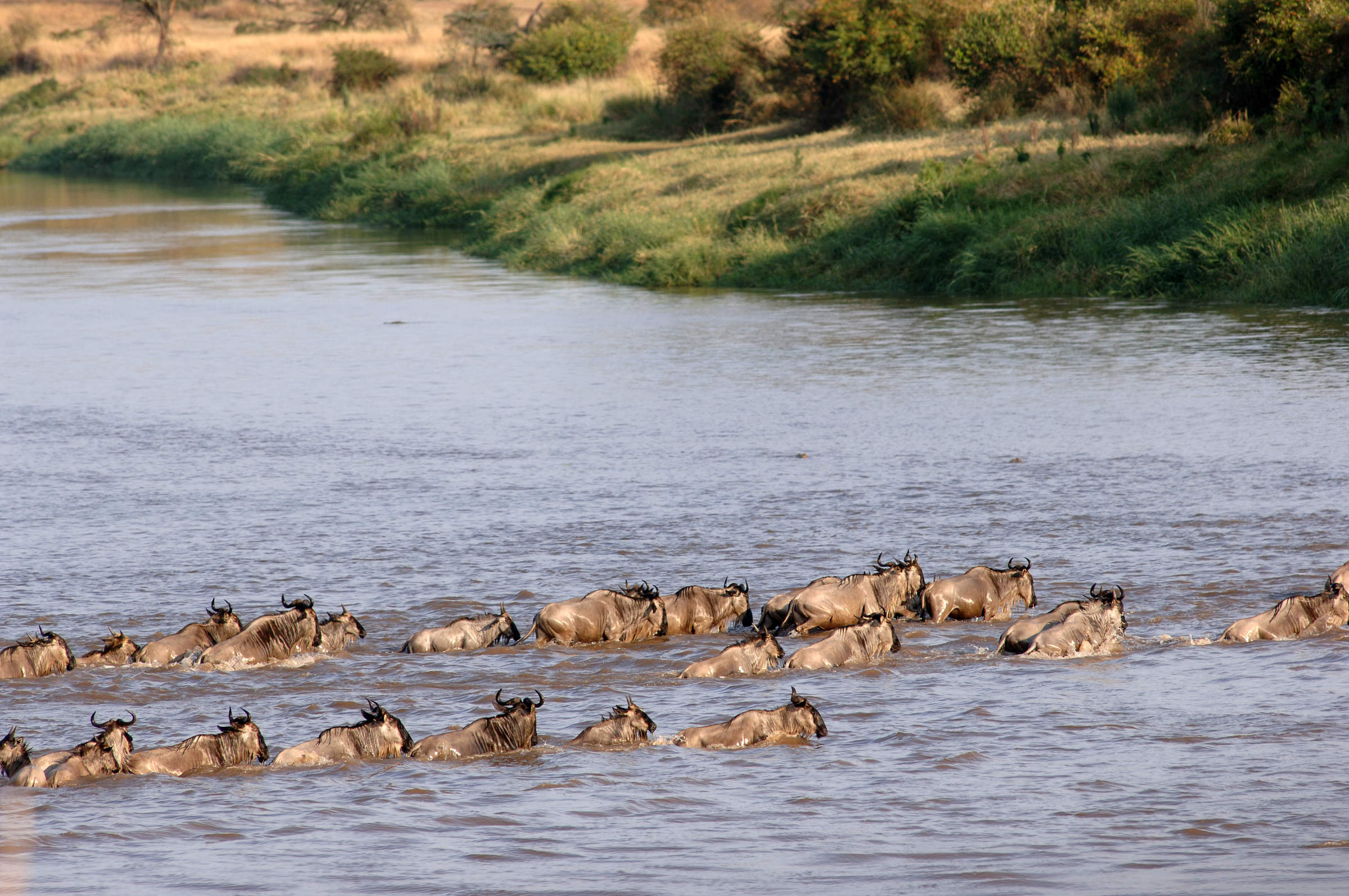
Mara Kati Kati
Mara Kati Kati is a simple bush camp in the northern Serengeti, based from Jul-Oct near the Mara River for the wildebeest migration.
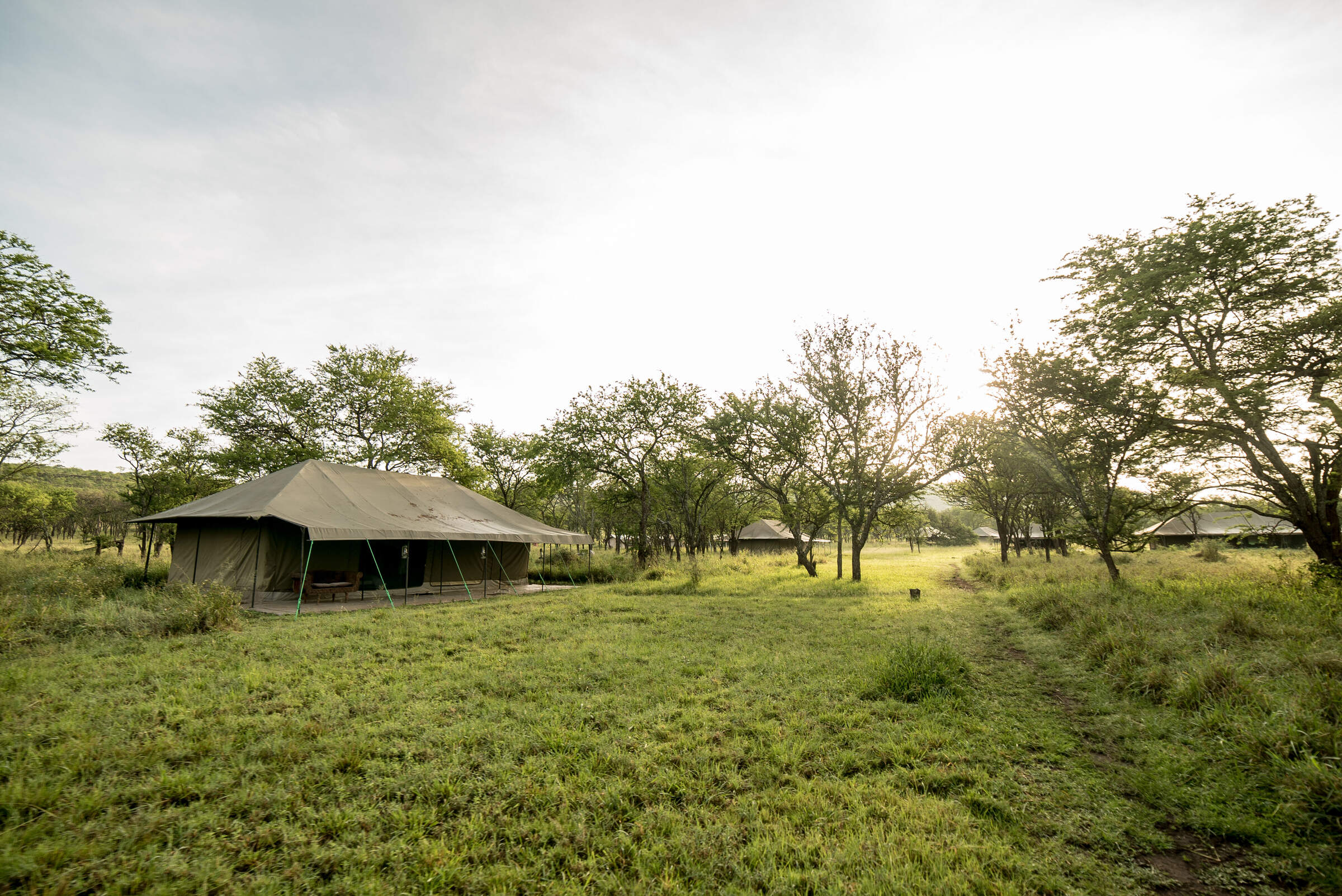
Nasikia Naona
Naona Camp is a small tented camp, located in the Moru Kopjes, west of the Serengeti central area
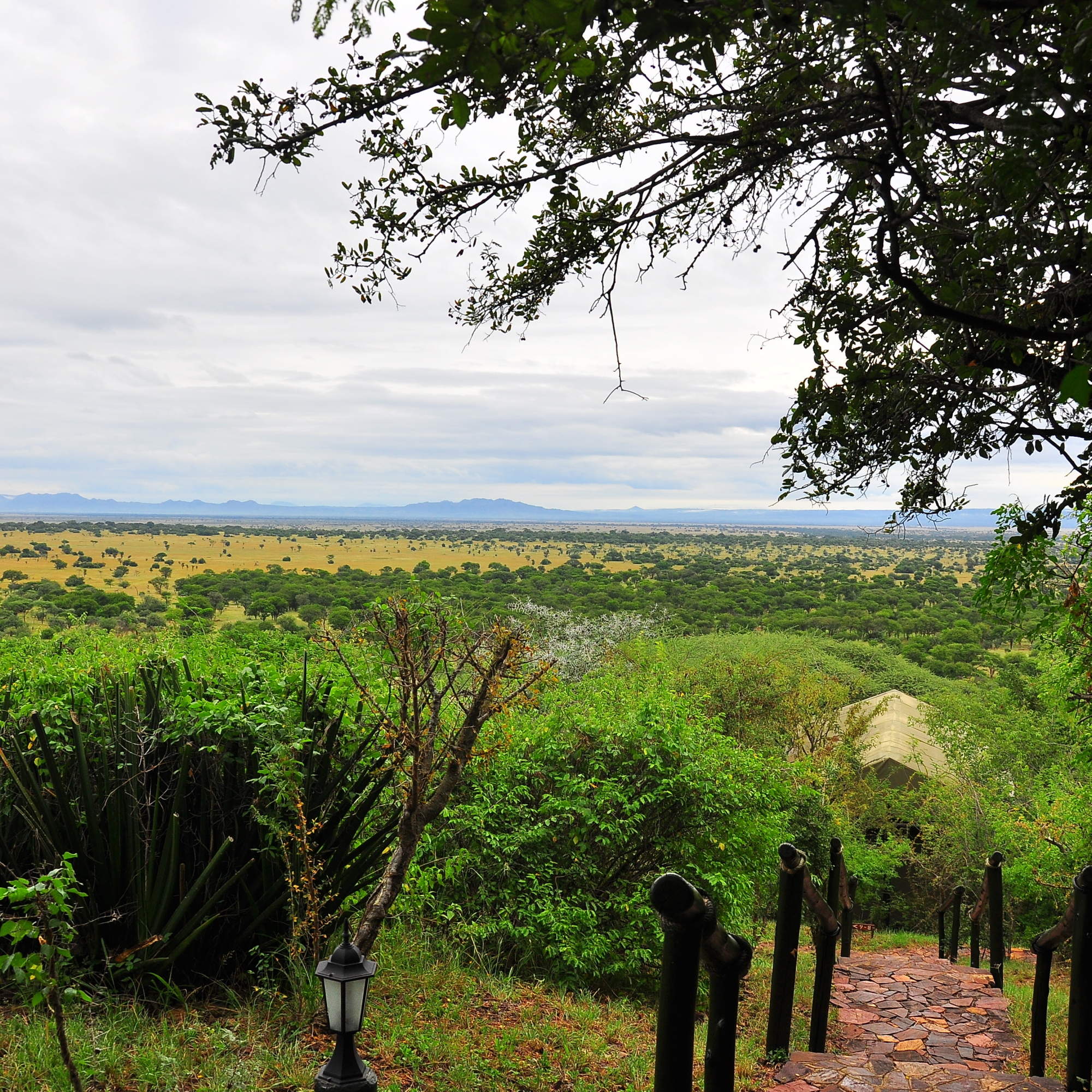
Kirawira Camp
Set high on a hill, in the Serengeti's western corridor, Kirawira is a relatively large tented camp in the Serena group.
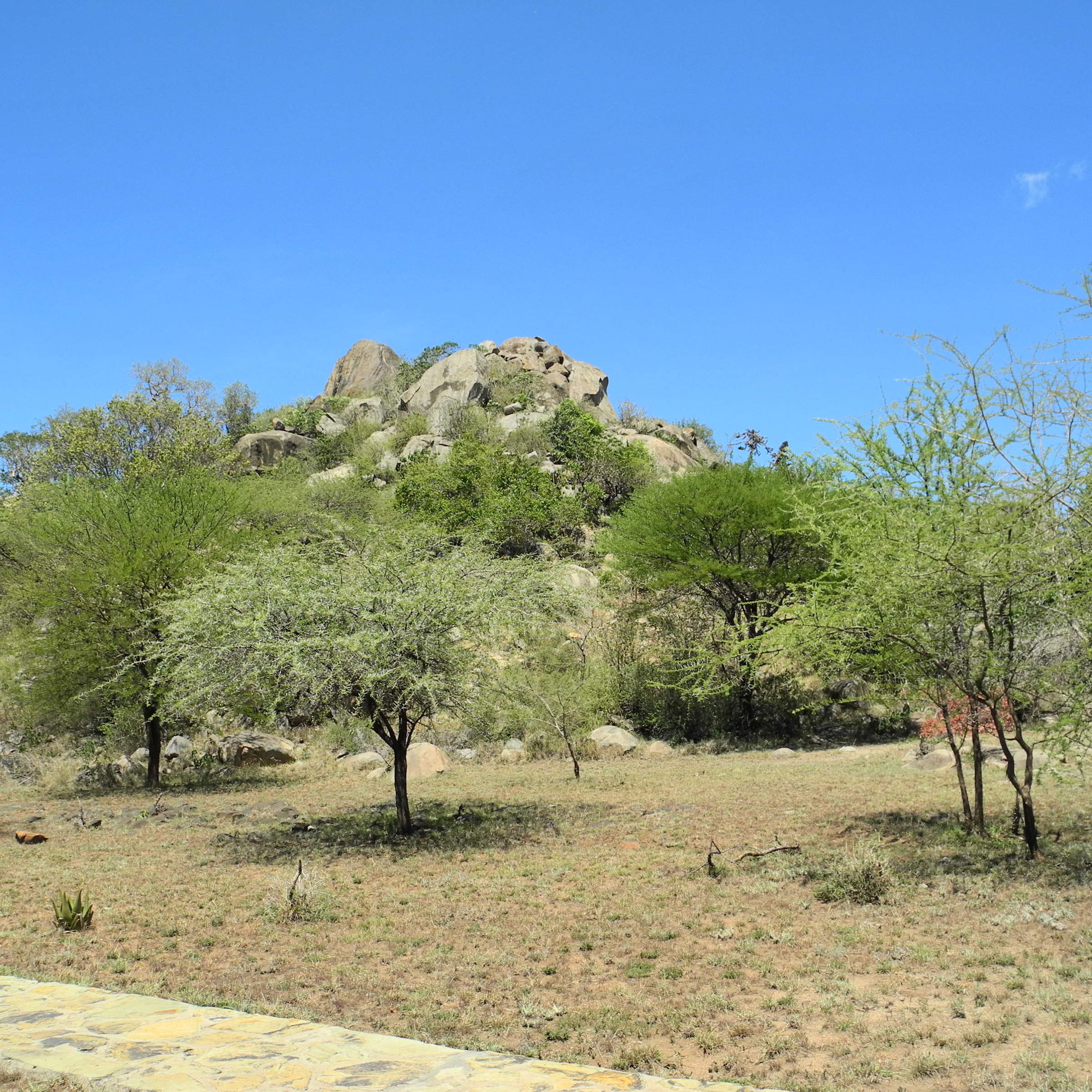
Mbuzi Mawe
Mbuze Mawe is a comfortable tented camp in a convenient, central-north location when driving through the Serengeti.
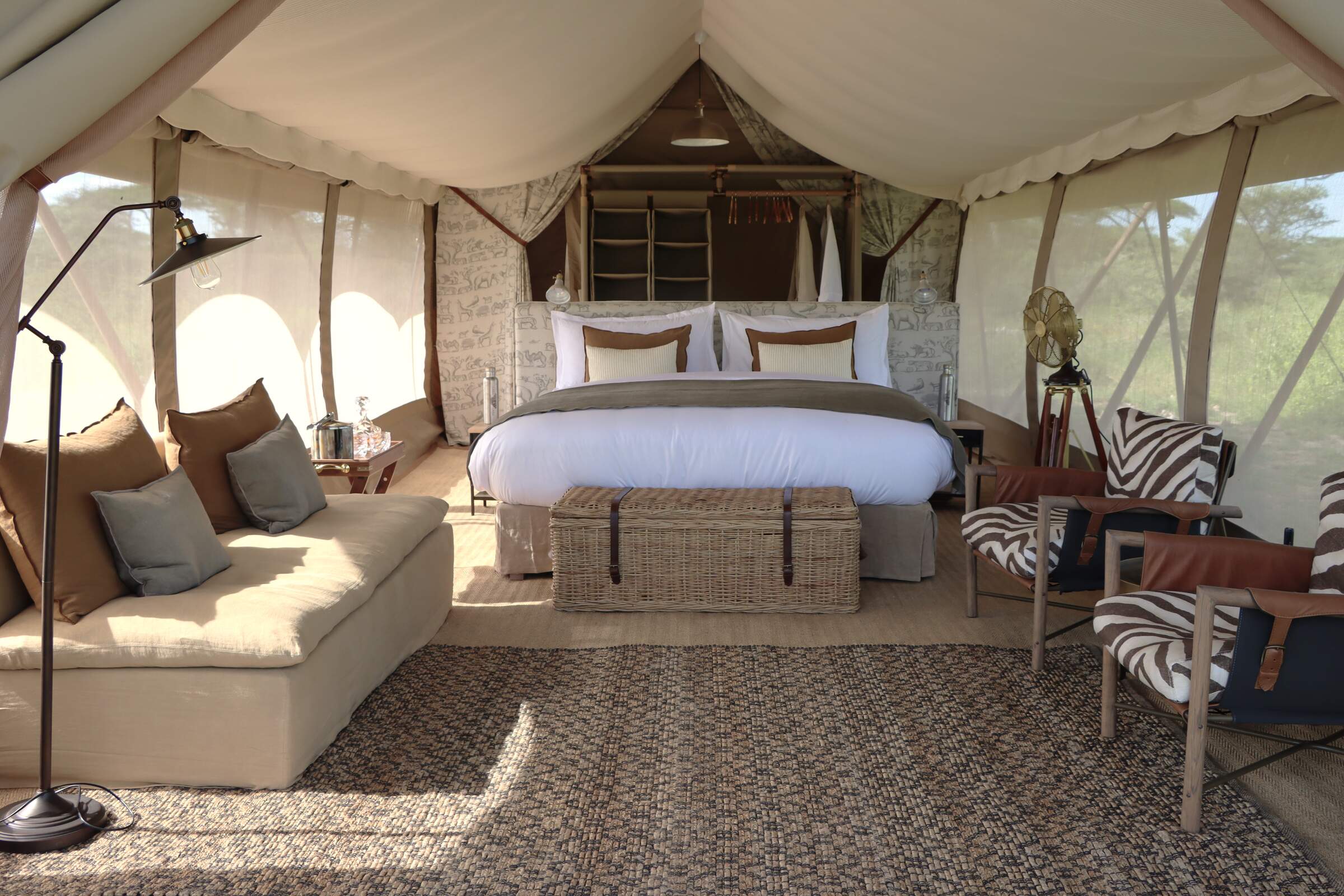
Laba Migration Camp
A luxury mobile camp that moves between the Western Corridor, Mara River and the southern Ndutu area, in line with the wildebeest migration.
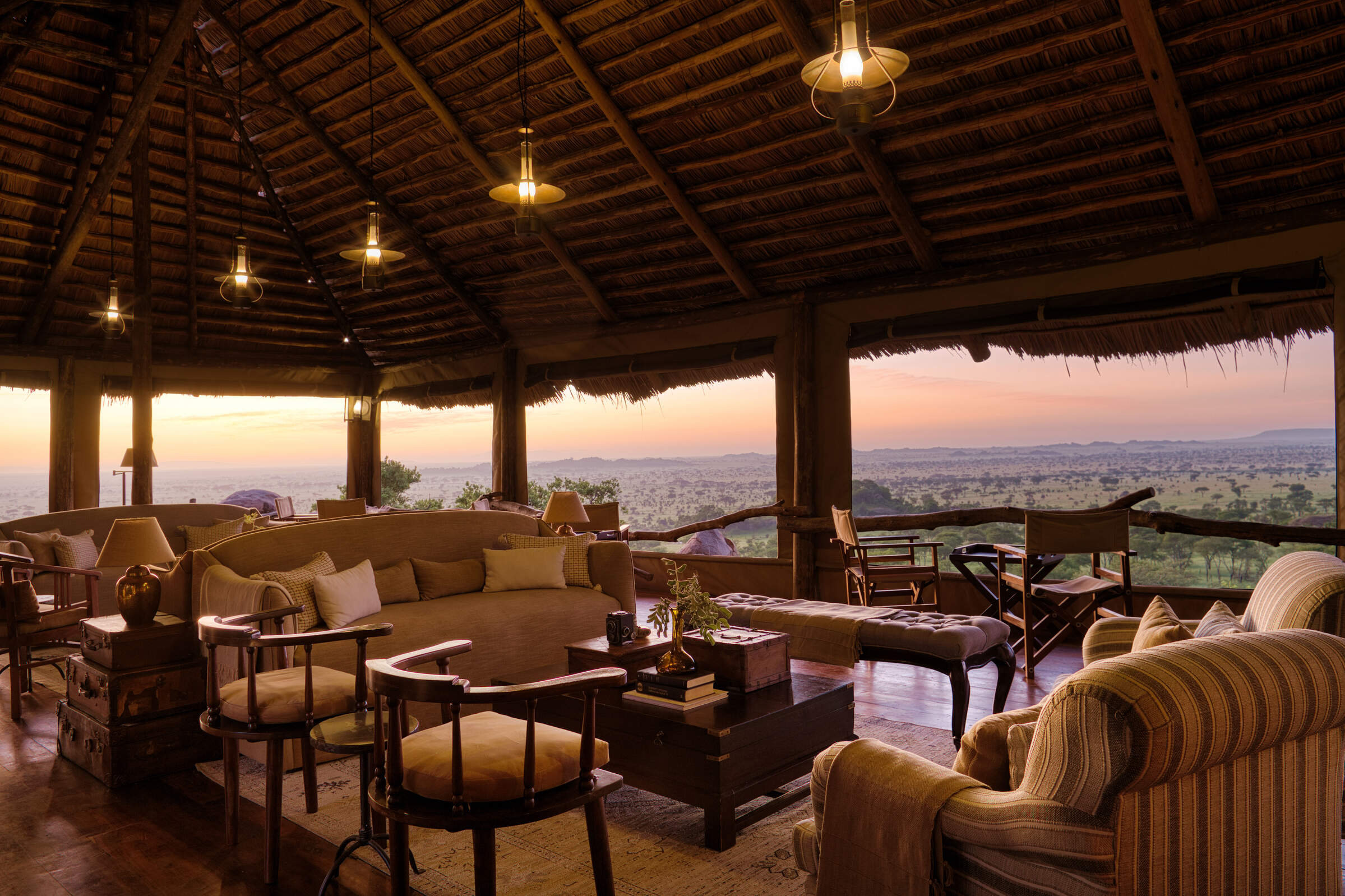
Serengeti Pioneer Camp
Serengeti Pioneer Camp is a luxurious tented camp in the central Serengeti, styled on African explorers' camps of the early 20th century.
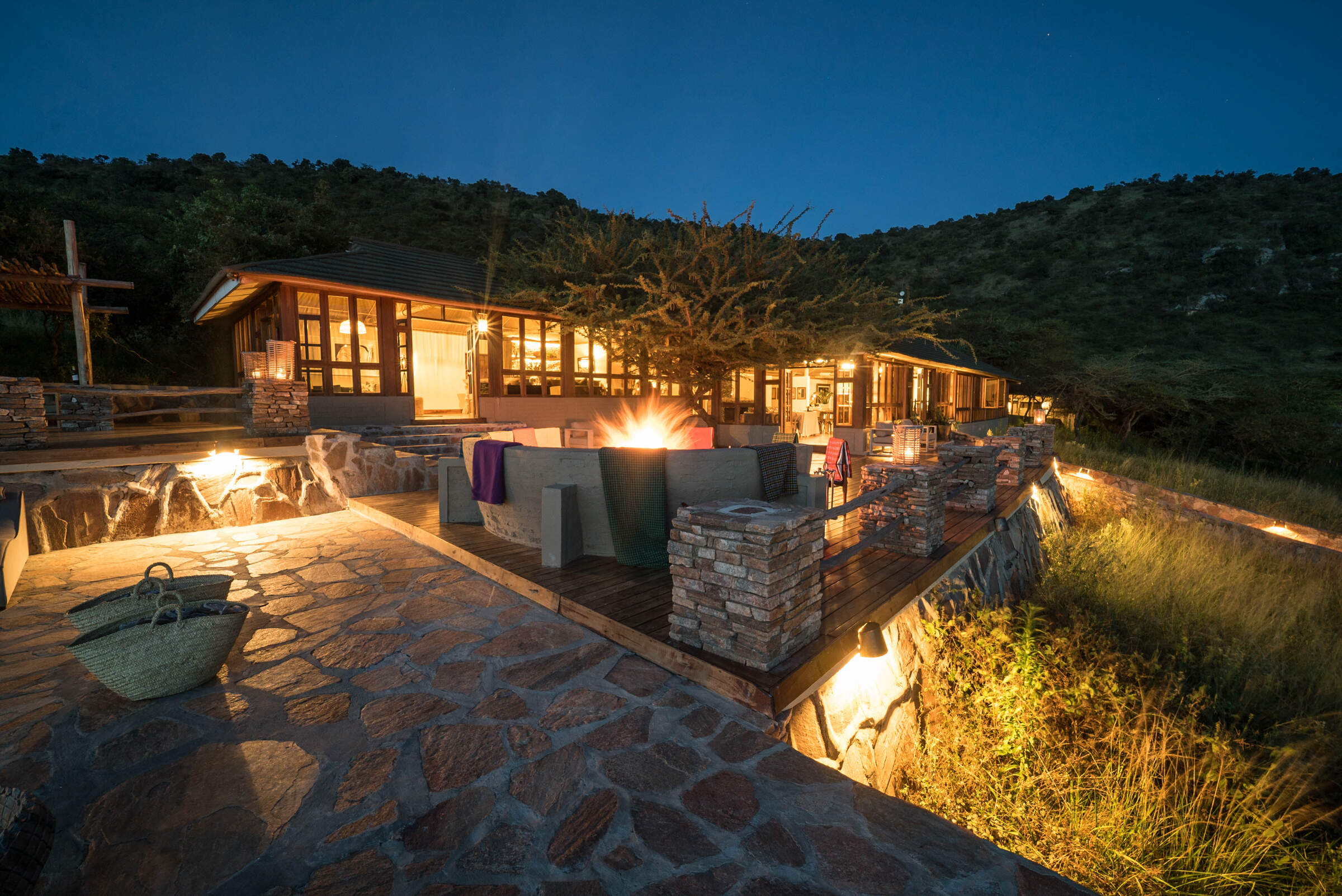
Taasa Lodge
Taasa Lodge is a slightly quirky option offering guided walks and night game drives, which are not permitted in Serengeti National Park.
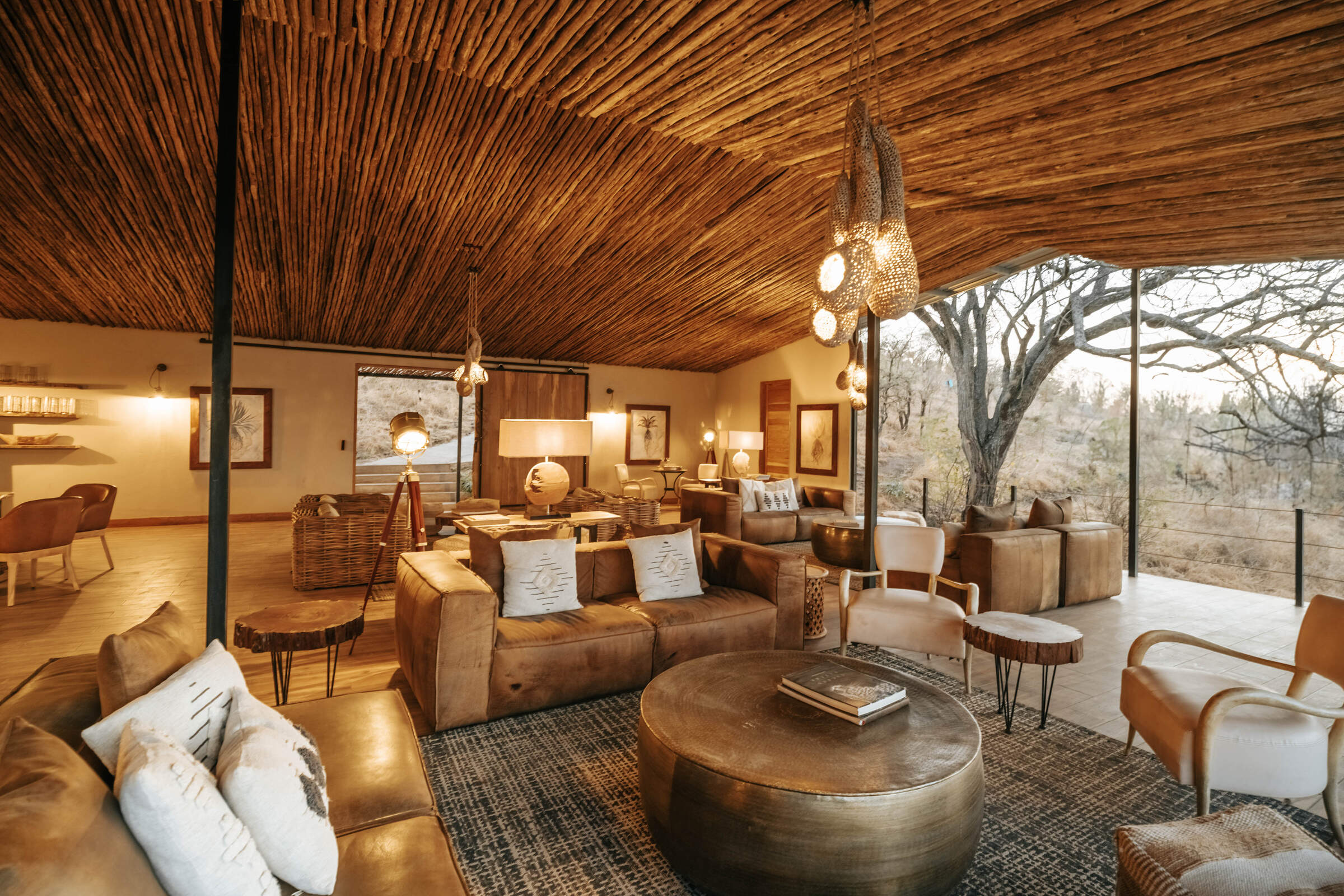
Nimali Serengeti
Opened in July 2017, Nimali Serengeti is a smart, permanent tented camp located in the Seronera area of the central Serengeti.
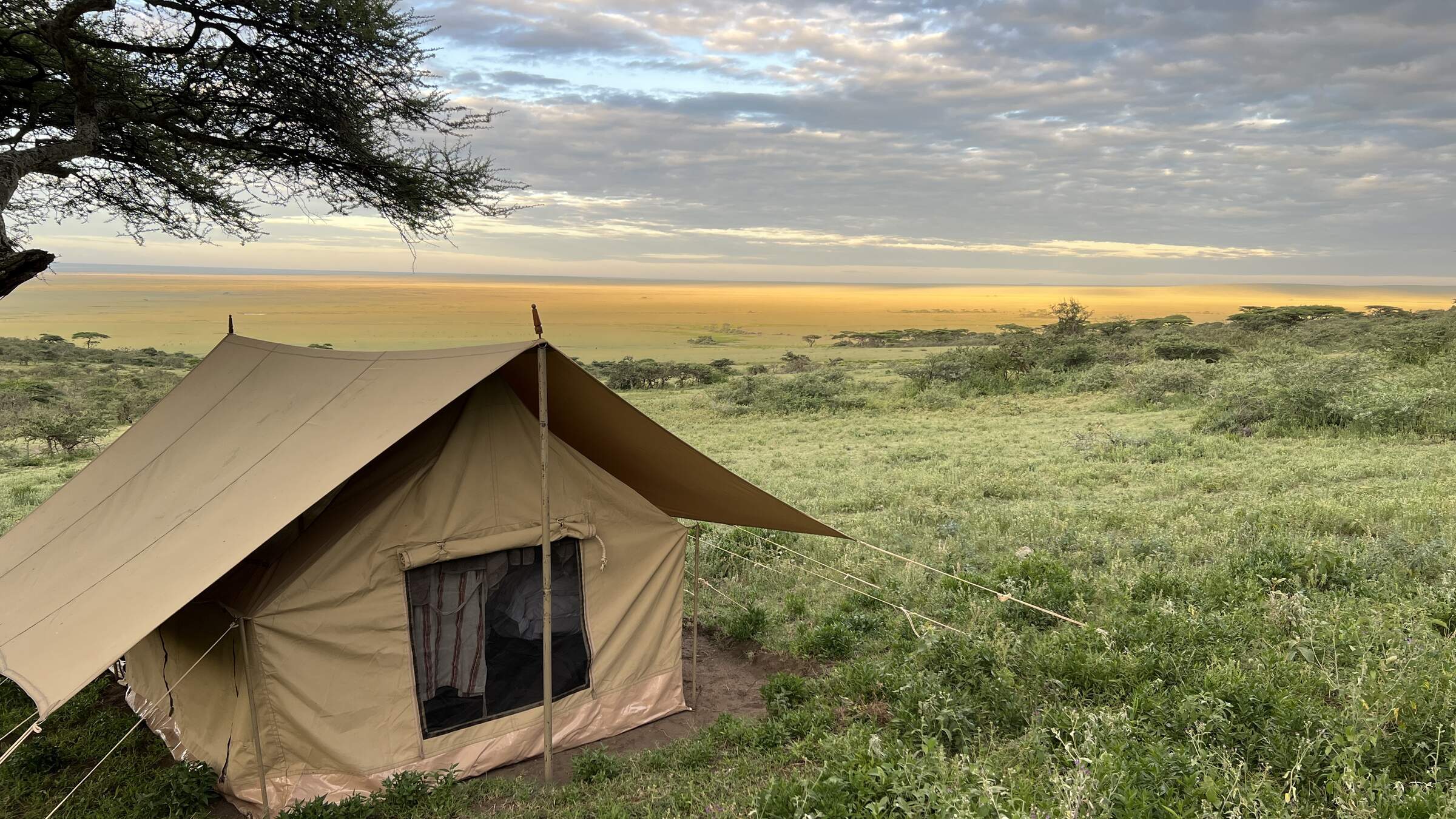
Nomad Walking Camp
Nomad Expeditionary Walking Camp is a simple camp of up to three tents, plus infrastructure, that changes location to allow guests to do substantial walks between campsites.
When to go to Serengeti Migration Area
Our month by month guide: What it's like to visit Ndutu Safari Lodge in Serengeti Migration Area
Jan
Feb
Mar
Apr
May
Jun
Jul
Aug
Sep
Oct
Nov
Dec
Serengeti Migration Area in January
January marks the start of the Serengeti’s short dry season. In the southern plains, the wildebeest calving season takes centre stage, drawing both predators and eager wildlife enthusiasts. The weather is generally clear and sunny, with rising temperatures, though occasional rainfall may still occur in the southern areas. Birdwatching is particularly rewarding during this time, with resident species in their breeding plumage and migratory birds adding to the variety.
The far southern plains of Ndutu coupled with the central Seronera area remains a reliable choice for game viewing, with lions and cheetahs frequently sighted on the hunt. While the park can be busier early in the month due to New Year visitors, it often becomes quieter later, providing excellent value and a more peaceful experience. Patience may be needed during game drives, as some wildlife becomes more dispersed.
- Variable weather: clear, dry or rainy
- Thunderstorms may occur occasionally
- Prime birding season with migrant species
- Wildebeest gathering in southern Serengeti
- Busy early, quieter later in the month
Our view
A good time to visit, with pros & cons
Weather in January
Serengeti Migration Area in February
February in the Serengeti is hot, with daytime highs reaching around 33°C/91°F, but cooling down significantly in the evening and overnight. It's an excellent time to visit as the northern circuit is comparatively quieter than during peak seasons. The wildebeest calving season, typically occurring in a two-three week window in early-mid February, is a major attraction. Thousands of calves are born daily, attracting a significant number of predators, creating an intense yet fascinating spectacle.
Birdlife is equally vibrant, as migratory species from the northern hemisphere join the park's resident birds. The Ndutu region is especially active, hosting an abundance of wildlife. Hot air balloon safaris offer unparalleled views of the action below. Despite the midday heat, early morning game drives remain comfortable and highly rewarding.
- Hot and dry weather conditions prevail
- Wildebeest calving in southern plains
- Southern Serengeti busy for migration
- Lush, green landscapes across the park
- Ideal for wildlife photography
Our view
A very good time to visit
Weather in February
Serengeti Migration Area in March
March typically sees the arrival of the long rains in the Serengeti, though the exact timing can vary each year. With water becoming more plentiful, migratory animals begin to spread out, making wildlife spotting a bit more challenging in certain areas. The Seronera Valley remains a reliable choice for sightings, thanks to its consistent water sources.
The rains bring a dramatic transformation to the landscape, with lush greenery emerging across the plains, offering stunning photographic opportunities. Birdwatchers are in for a treat, as many species are in their vibrant breeding plumage. Although some mobile tented camps begin winding down operations in preparation for the next season, visitors can still enjoy the park’s quieter atmosphere and its renewed natural beauty.
- Hot with increasing humidity pre-rains
- Wildlife viewing varies as rains begin
- Park quieter with lower visitor numbers
- Excellent time for bird watching
- Green vegetation provides scenic backdrops
Our view
A good time to visit, with pros & cons
Weather in March
Serengeti Migration Area in April
April tends to be the wettest month in the Serengeti, with rainfall averaging around 250mm. The park is transformed into a verdant oasis, alive with birds, insects, and smaller wildlife. However, the dense vegetation can make spotting animals more difficult. Visitor numbers are at their lowest, allowing for a more exclusive safari experience and there can be some good emerald season bargains to be had.
The wildebeest migration typically begins slowly moving toward the Western Corridor, and patient travellers can witness fascinating sights such as newborn animals and predators on the hunt. Rising water levels make the Retina Hippo Pool particularly active. Birdwatching continues to be excellent, and many lodges offer reduced rates, making it an appealing time for those willing to brave occasional downpours.
- Heavy rains with impressive thunderstorms
- Some camps closed due to weather
- Lowest rates and fewest tourists
- Vibrant greenery, wildlife more dispersed
- Not ideal for general wildlife viewing
Our view
This is not a great time to visit
Weather in April
Serengeti Migration Area in May
As the month of May progresses, the rains start to taper off across the Serengeti and temperatures drop slightly. Visitor numbers remain low, and lodge rates are often highly competitive, making it a great time for more value-conscious travellers. The wildebeest migration usually still heading towards the Western Corridor, with some herds nearing the Grumeti River and others still milling around the central area of the park. Predator-prey interactions become more frequent as animals navigate the changing environment.
The Moru Kopjes region offers particularly rewarding wildlife encounters, including the chance to spot black rhinos. The park’s vegetation is at its lushest, providing breathtaking backdrops for photographers. Balloon safaris during this time give a spectacular view of the green plains and migrating herds.
- Rains continue, creating dramatic skies
- Quiet period, great for avoiding crowds
- Lush landscapes with long grasses
- Wildlife more dispersed, fewer sightings
- Affordable safari options available
Our view
This is not a great time to visit
Weather in May
Serengeti Migration Area in June
June signals the end of the rainy season in the Serengeti, with the landscape beginning to dry out. Wildlife starts to gather around permanent water sources, and the Grumeti River becomes a key location for dramatic river crossings. Before the wildebeest migration heads north, the Western Corridor remains a hub of activity.
Many camps will offer shoulder season rates in June, meaning that this is also a more affordable time to visit than later in the year. The Lobo Valley in the north also becomes a productive area for wildlife viewing. With shorter grasses and clearer conditions, June is an excellent time for walking safaris in designated areas. The balance of good weather, exciting wildlife action, and moderate tourist numbers makes it a great month to visit.
- Weather varies: clear, dry or some rain
- Migration moving from west to north
- Parks still green with high grasses
- Wildlife becoming more concentrated
- Good value shoulder season prices
Our view
A good time to visit, with pros & cons
Weather in June
Serengeti Migration Area in July
July is the start of peak season in the Serengeti, with little to no rainfall expected and pleasant daytime temperatures. As the park dries, wildlife congregates in fewer areas, improving game viewing opportunities. The wildebeest migration typically reaches the northern Serengeti, with herds beginning to cross the Mara River. This spectacle draws many visitors, making the northern areas busier.
The Seronera area remains excellent for big cat sightings. In the western corridor, resident game becomes easier to spot as vegetation thins. Balloon safaris are particularly popular this month, offering breathtaking views of the migrating herds. Despite the crowds, July offers some of the year's best wildlife viewing opportunities across the park.
- Dry days, chilly mornings and evenings
- Excellent wildlife viewing opportunities
- Peak season with increasing visitor numbers
- Highest prices due to prime conditions
- Great Migration in full swing
Our view
Fantastic: the very best time to visit
Weather in July
Serengeti Migration Area in August
August in the Serengeti is characterised by clear skies and sunny weather, though cooler nights and mornings call for layered clothing for early morning game drives. It's an extremely popular time to visit, with accommodation prices at their peak. The northern Serengeti is particularly busy as visitors hope to witness migration river crossings – with the Mara and Sand rivers becoming focal points for dramatic wildlife interactions.
In the central Serengeti, predator sightings remain good around the Seronera River. The park's southern regions are now much drier, home to excellent resident game and now fewer visitors. Balloon safaris provide stunning aerial views of the landscape and wildlife. While August is a very busy time, the consistent wildlife activity and reliable weather make it a fantastic month to visit.
- Dry climate, cool mornings and evenings
- Superb general wildlife viewing
- Exciting wildebeest migration period
- Very busy, camps fill up quickly
- Dramatic river crossings may occur
Our view
Fantastic: the very best time to visit
Weather in August
Serengeti Migration Area in September
September continues the Serengeti’s dry season, with wildlife becoming increasingly concentrated around the few remaining water sources. The northern Serengeti still hosts the wildebeest migration, with river crossings at the Mara River offering dramatic predator-prey interactions. The Seronera Valley remains an excellent spot for sightings of resident predators, while the now-parched southern plains offer good chances to see cheetahs.
As the month progresses, visitor numbers begin to drop slightly, making it a quieter time to explore. Birdwatching remains rewarding, and walking safaris provide a more intimate wildlife experience. September’s pleasant weather and exceptional wildlife viewing make it a very good time to visit.
- Fantastic wildlife viewing conditions
- Slightly less crowded than peak months
- Parks becoming dry with less vegetation
- Pleasant temperatures throughout day
- Prices remain high for quality safaris
Our view
Fantastic: the very best time to visit
Weather in September
Serengeti Migration Area in October
October marks the tail end of the dry season in the Serengeti. Wildlife gathers around the last water sources, creating fantastic viewing opportunities. The Mara River may still see some migration activity, while the central Seronera region continues to deliver reliable predator sightings. In the western corridor, large herds of elephants are a highlight, and the dry southern plains can sometimes offer very good opportunities to spot cheetah.
Birdwatching is rewarding, with many resident species easily spotted. Balloon safaris offer breathtaking views of the parched landscape – though photographers need to be prepared for dusty conditions. Prices remain high, but visitor numbers are lower than in July-Sept, providing a more exclusive safari experience.
- Mostly dry with comfortable temperatures
- Excellent game viewing opportunities
- Landscape may appear somewhat barren
- Lower visitor numbers than earlier months
- Chance to see predator action at its best
Our view
A very good time to visit
Weather in October
Serengeti Migration Area in November
November usually signals the start of the short rains in the Serengeti. While lighter and more sporadic than the long rains, they rejuvenate the landscape with fresh grass growth. Wildlife begins to disperse as water becomes more readily available, but game viewing remains strong, particularly in the central Seronera area.
The wildebeest herds start their journey southward from the Mara region, creating opportunities for unique sightings. Birdwatching is excellent, with the arrival of migratory species adding to the variety. Some mobile camps in the north close temporarily, but those who visit in November can enjoy great value with lower rates and quieter conditions.
- Variable weather: clear, dry or rainy
- Parks quieter with lower-end prices
- Some camps close for maintenance
- Wildlife disperses as rains begin
- Migration movement less predictable
Our view
A good time to visit, with pros & cons
Weather in November
Serengeti Migration Area in December
December is a transition month in the Serengeti, falling within the short rainy season. The rains bring life to the southern plains, attracting the wildebeest herds and the predators that follow them. The Ndutu region becomes a focal point for wildlife activity.
Temperatures are comfortable, averaging around 27°C/81°F, with the possibility of occasional thunderstorms. Birdwatching is outstanding, with many migratory species adding to the diversity. Early December offers good value, with lower prices and fewer visitors, but the festive season sees a surge in demand, requiring early bookings. Balloon safaris provide stunning views of the rejuvenated landscape, making December an exciting time to visit the park.
- Weather varies: dry, rainy, or stormy
- Good game viewing in central Serengeti
- Quiet early, extremely busy late month
- Prices rise sharply for holiday season
- Green season begins, landscapes refresh
Our view
A good time to visit, with pros & cons
Weather in December

Looking for inspiration on where to travel next?
Visit our trip chooser to explore your options and find inspiration for your perfect African adventure
Inspire me